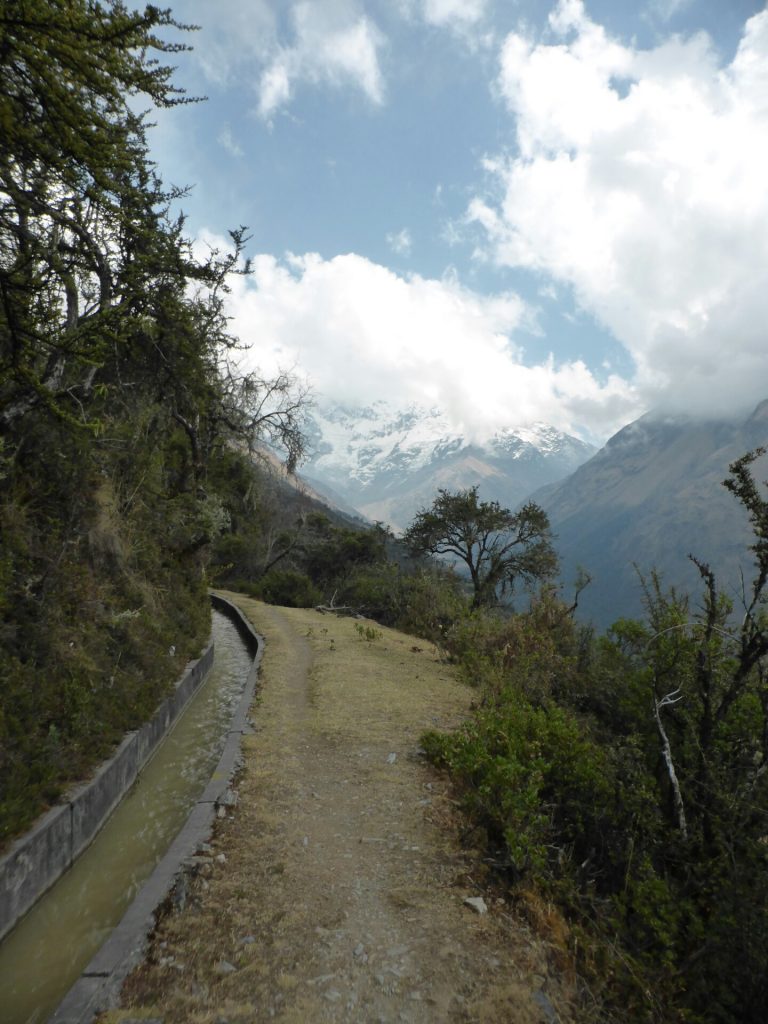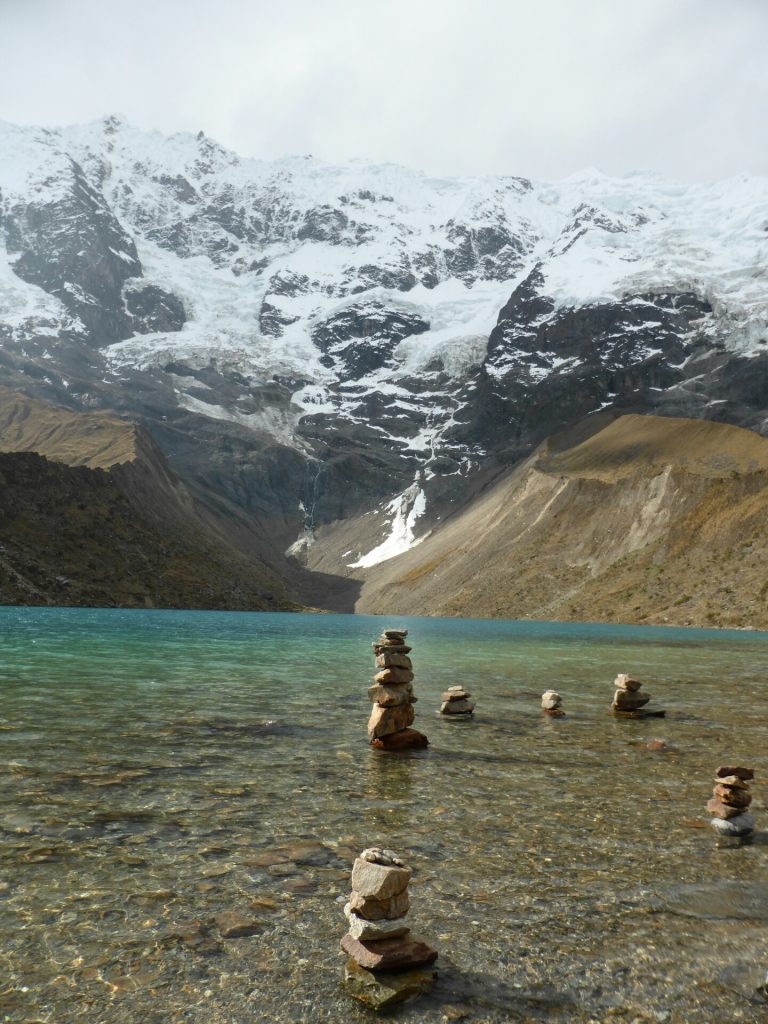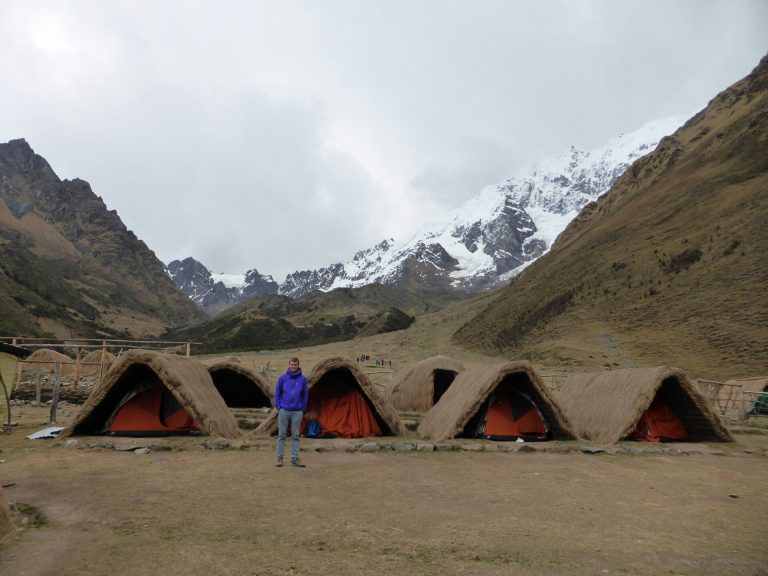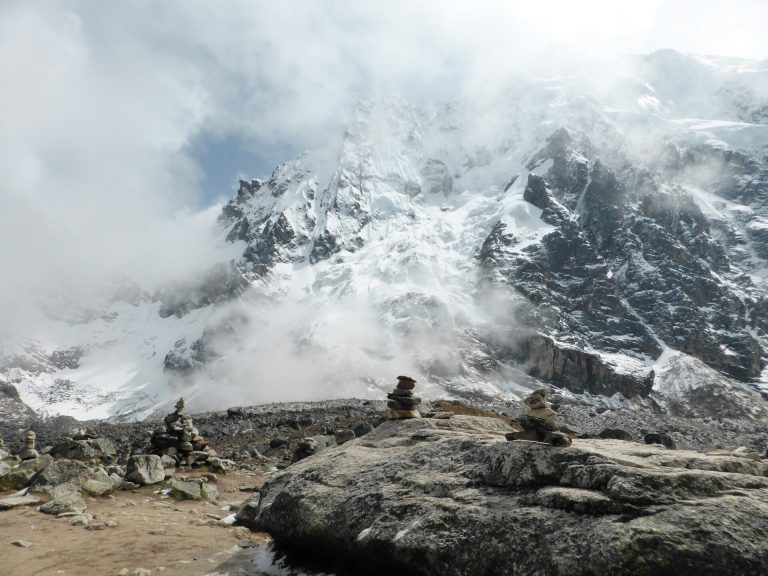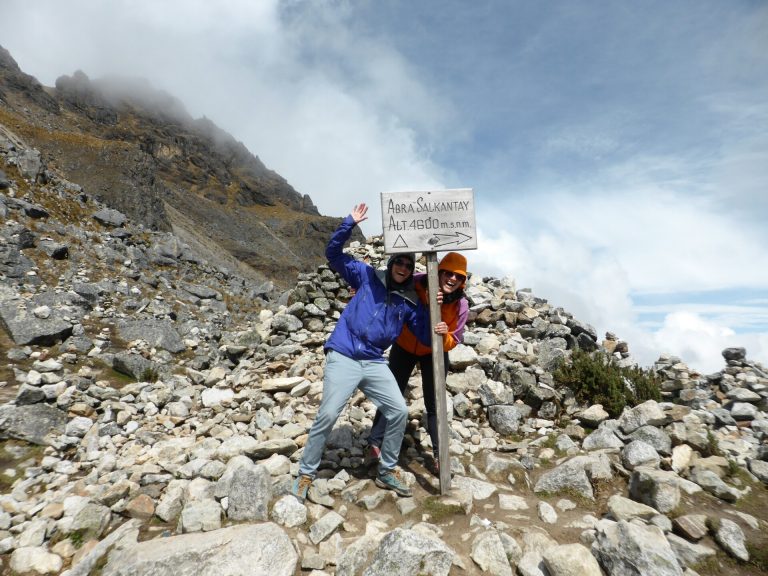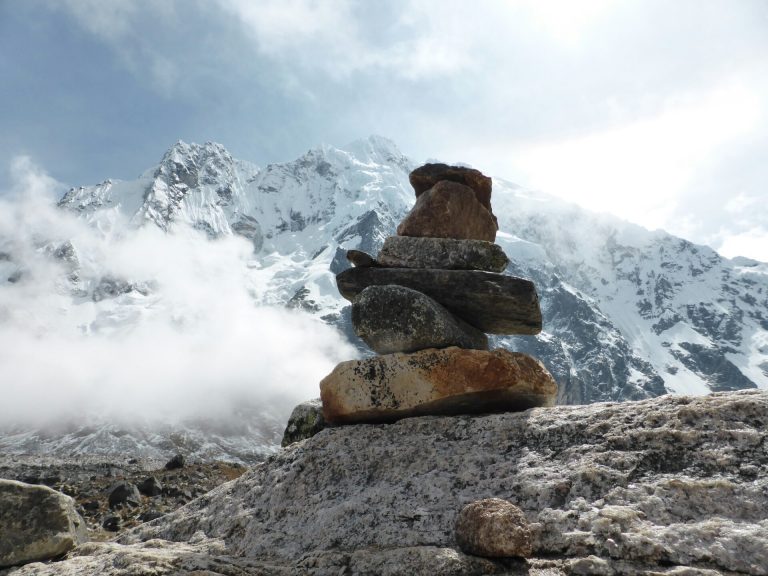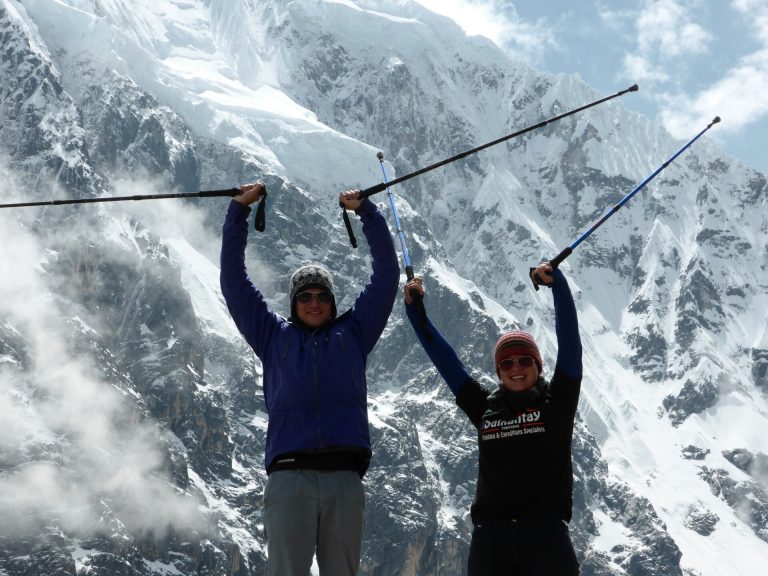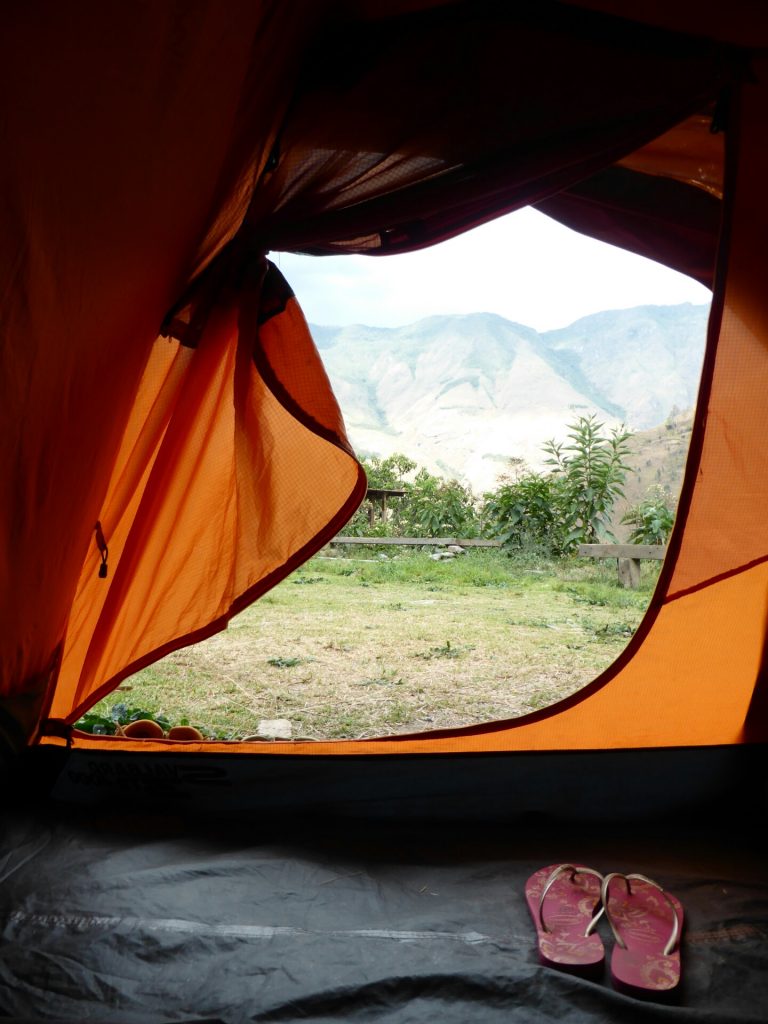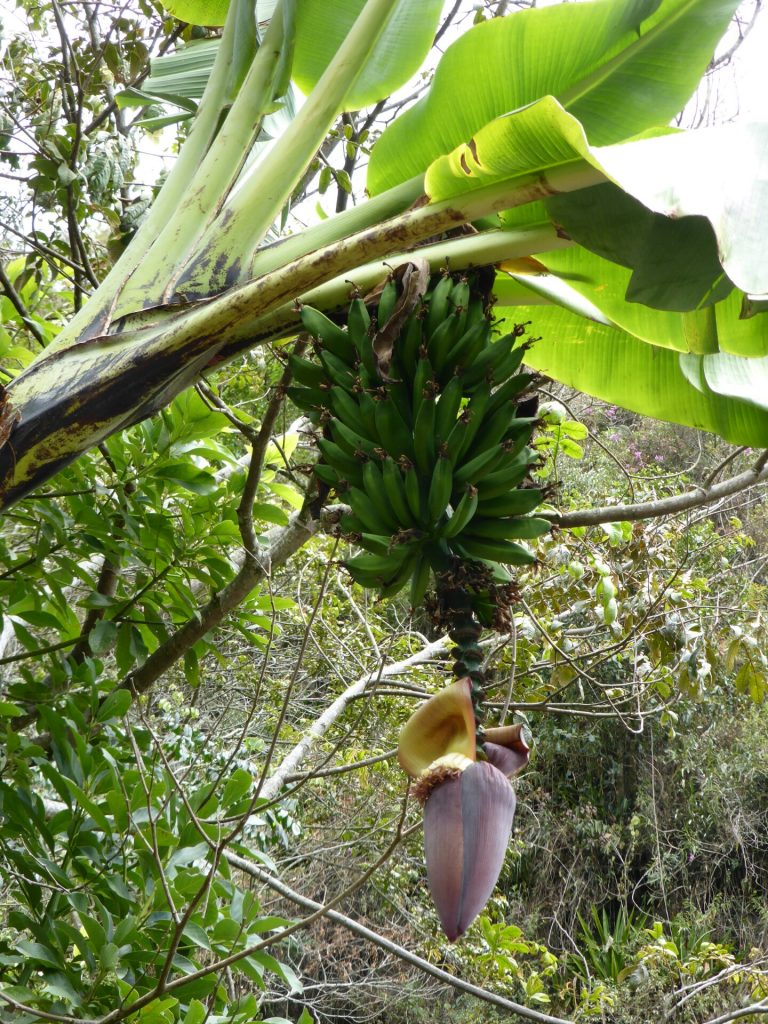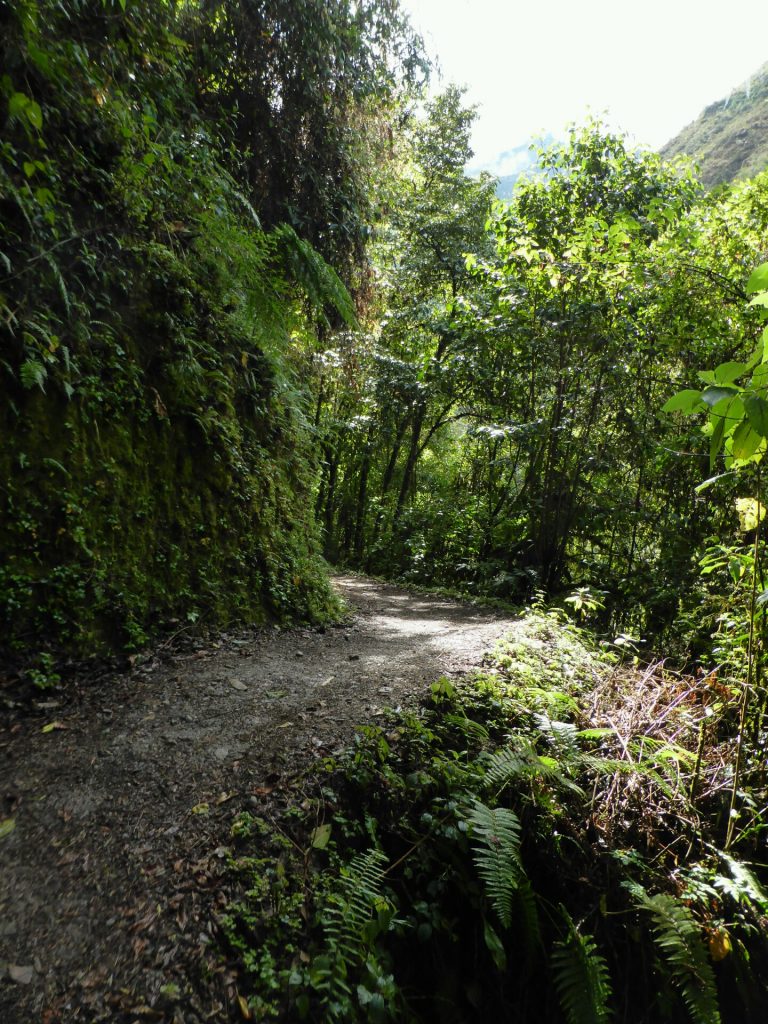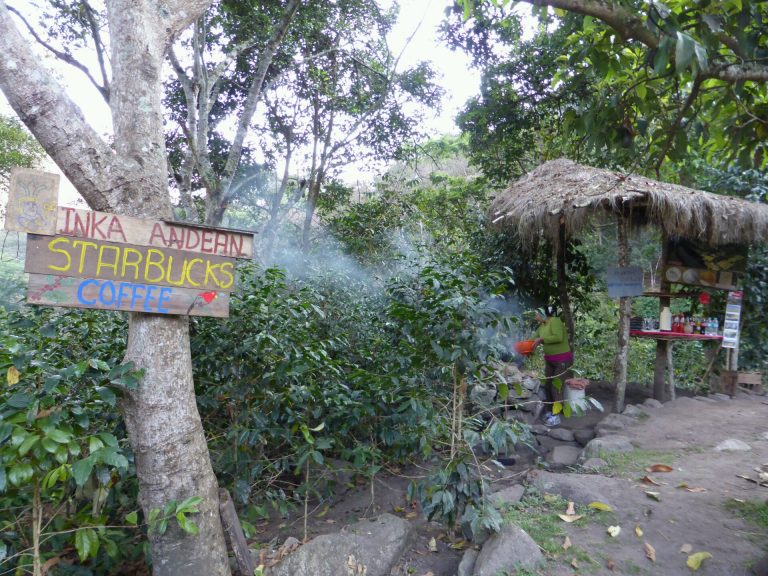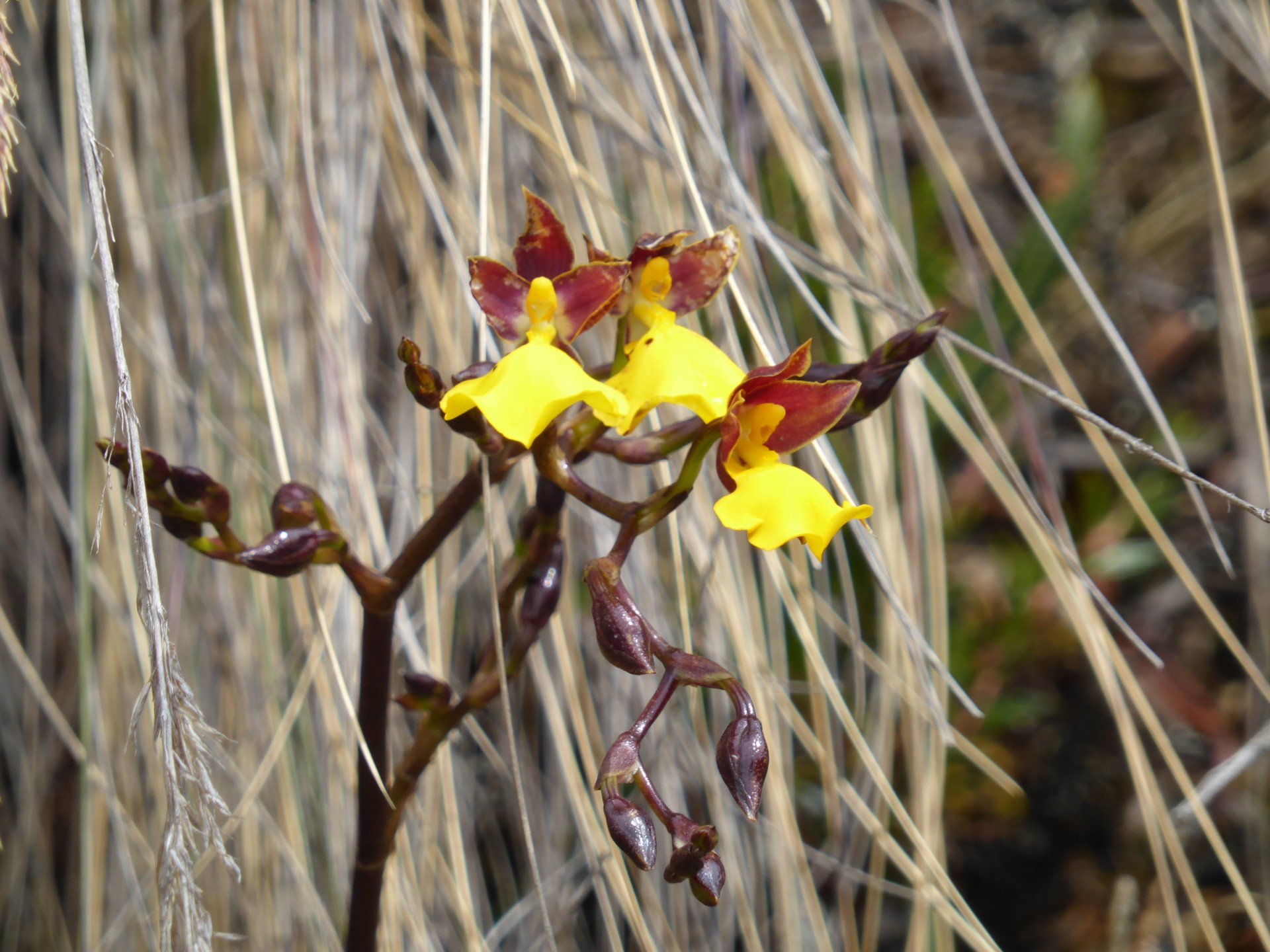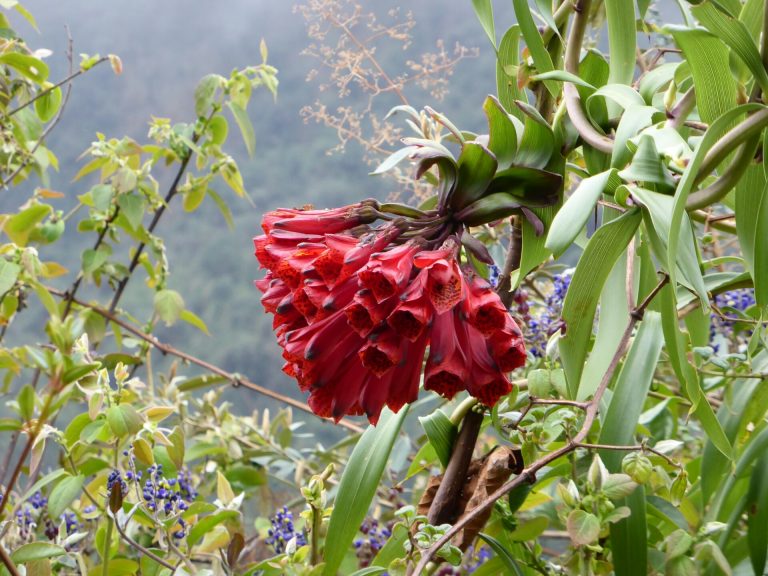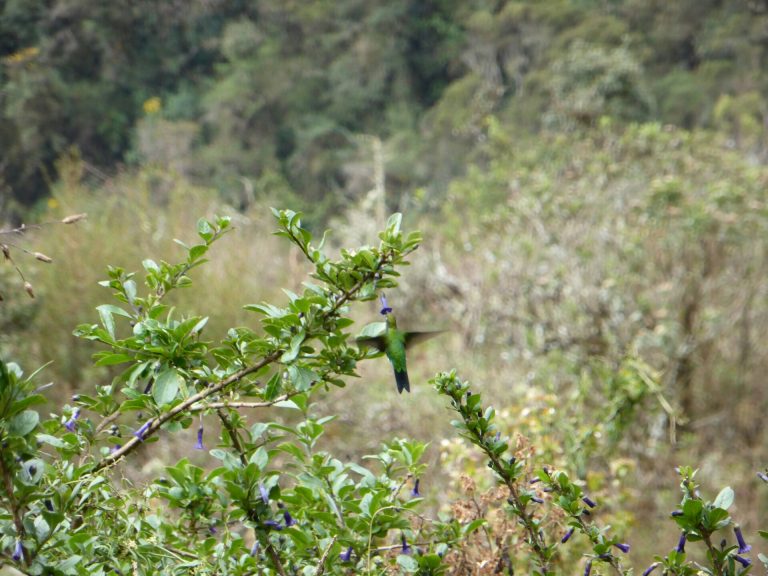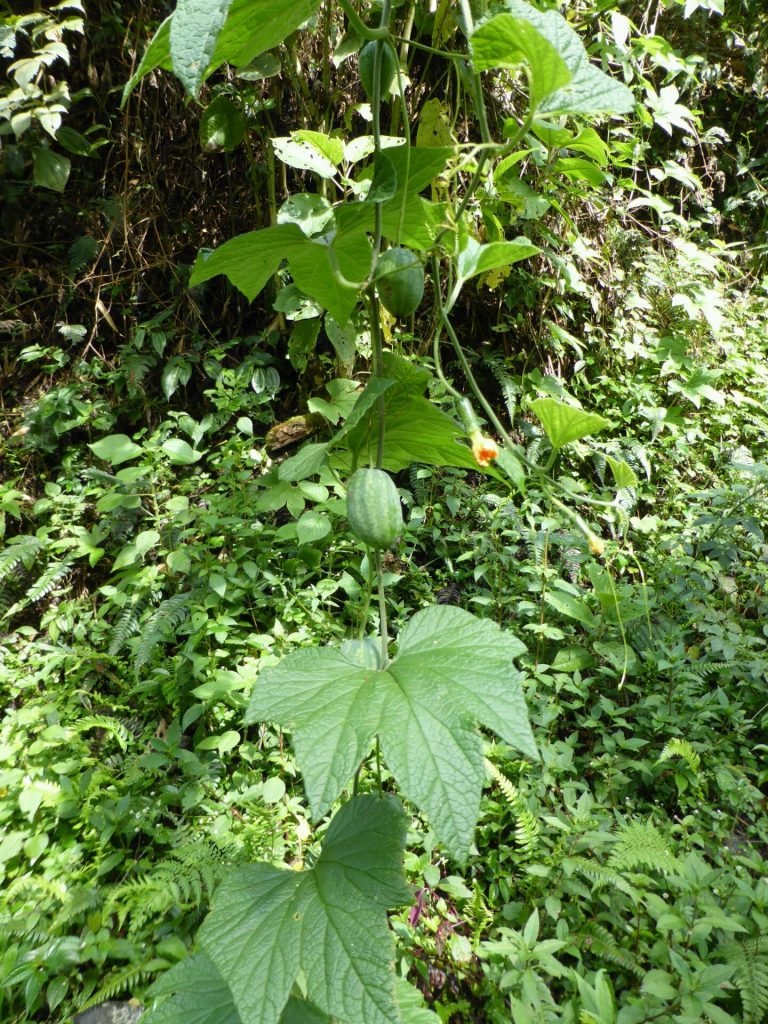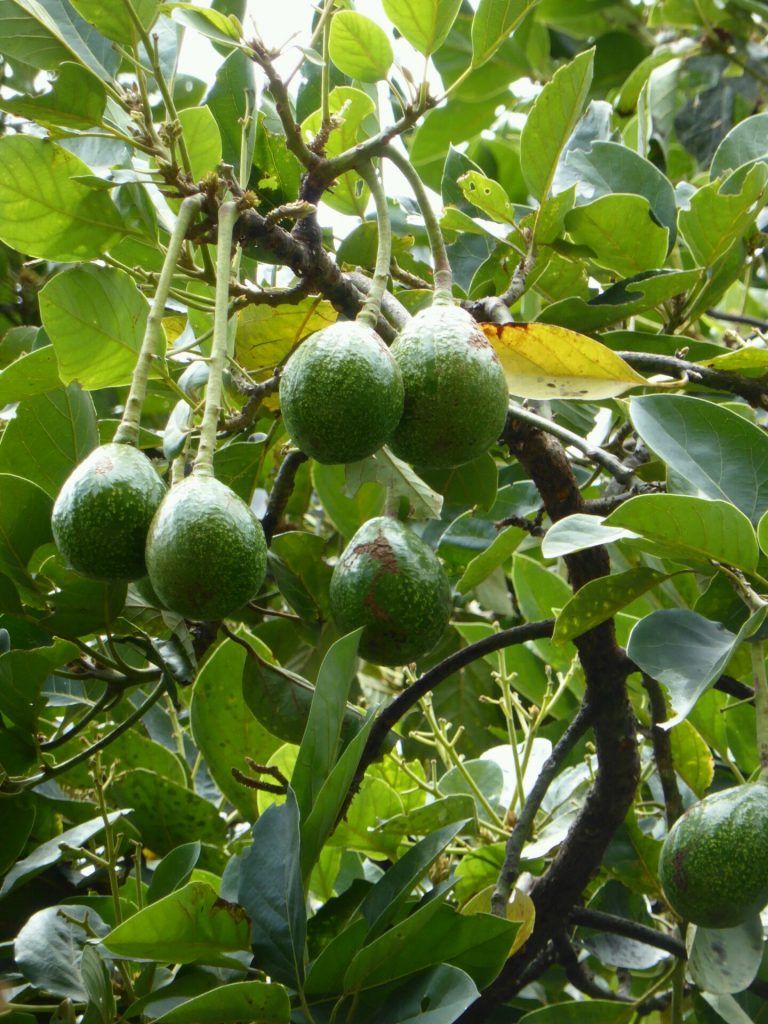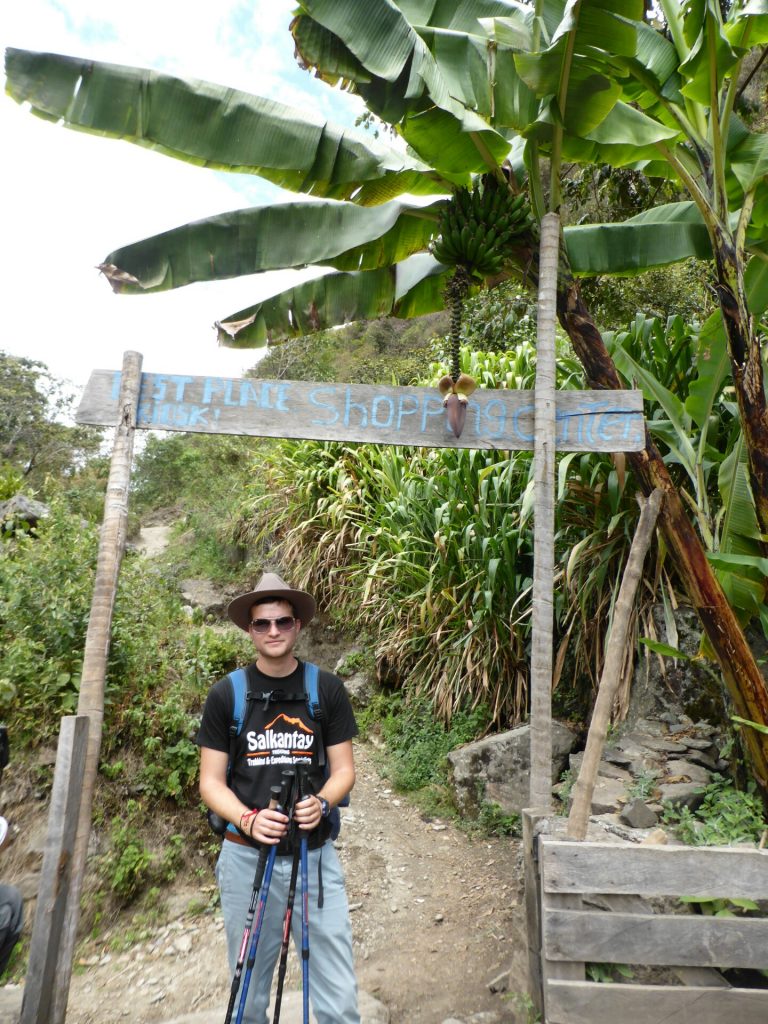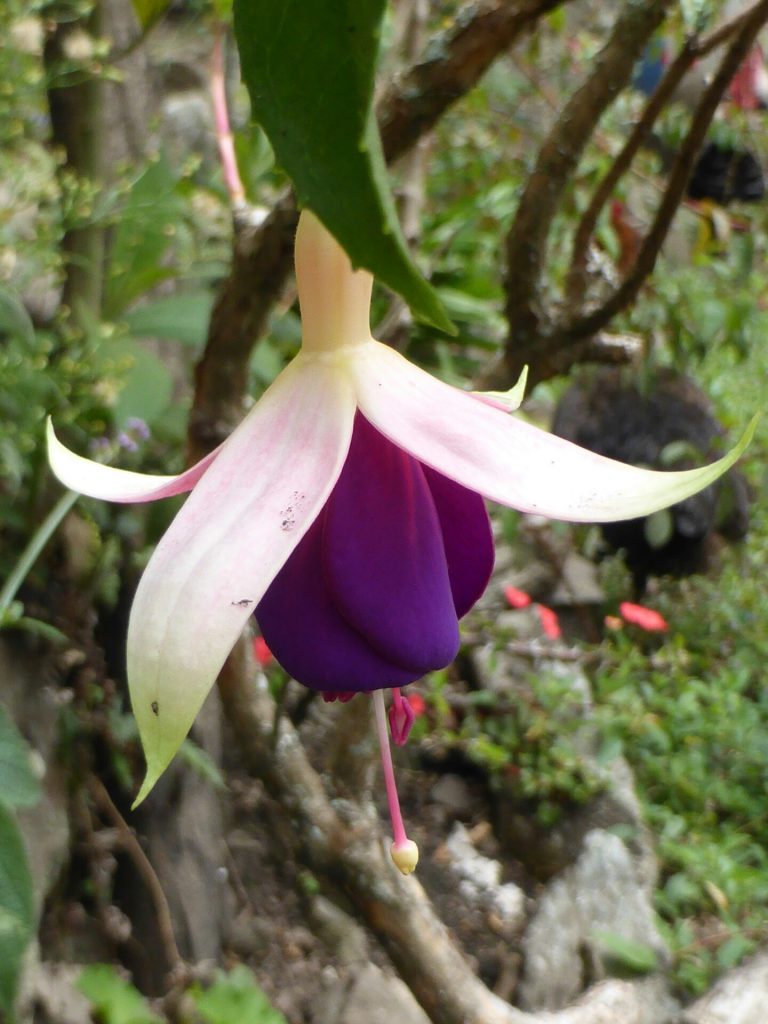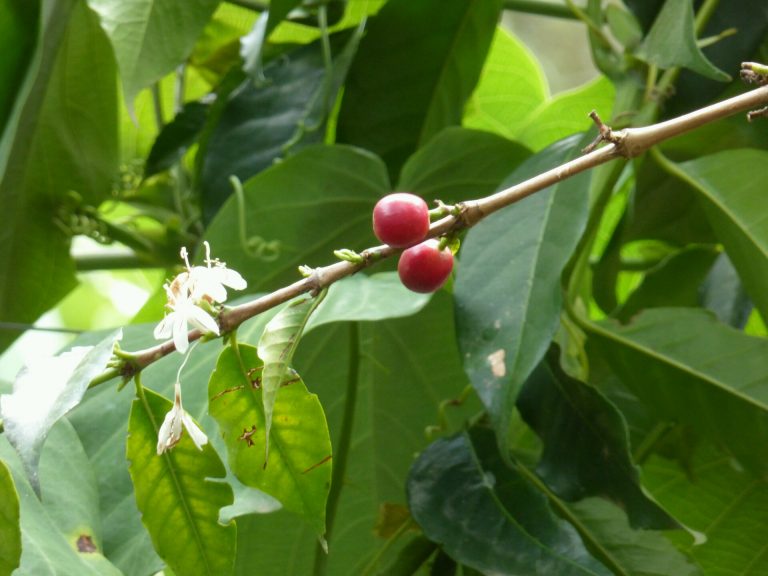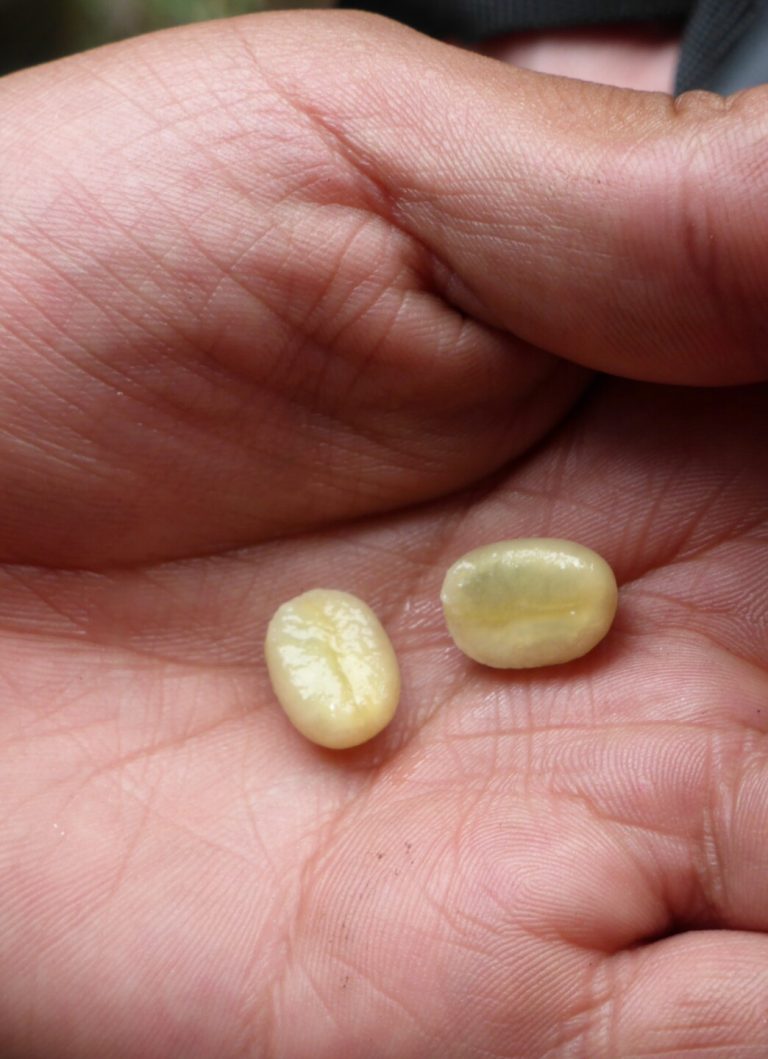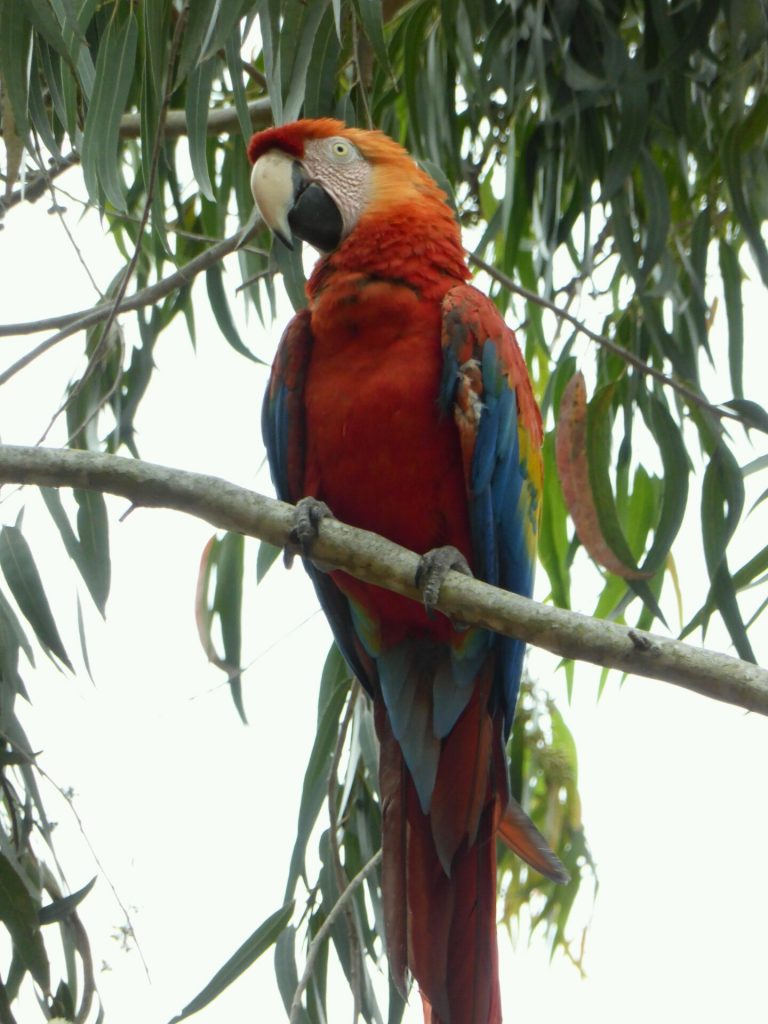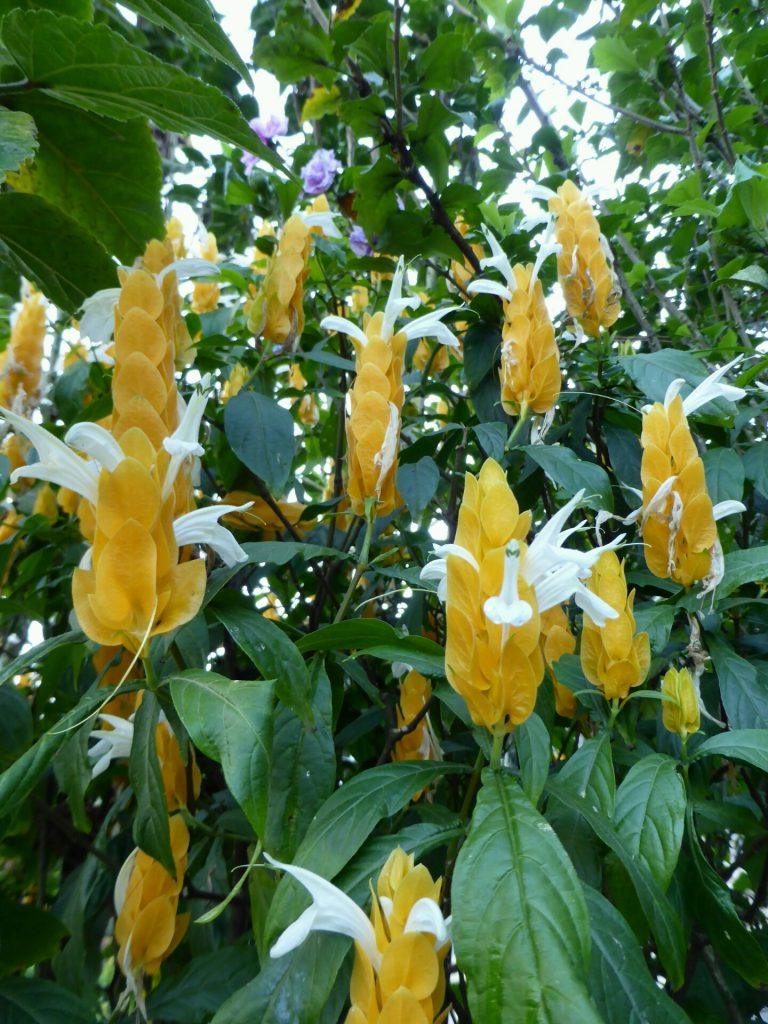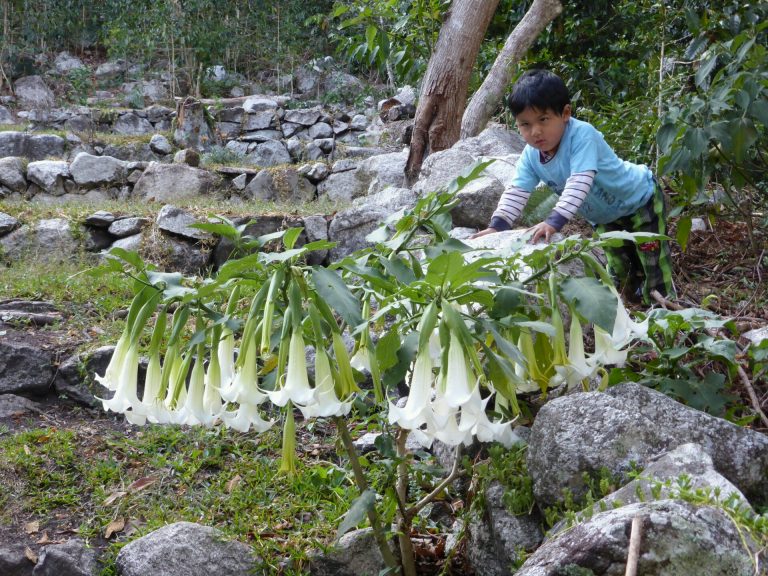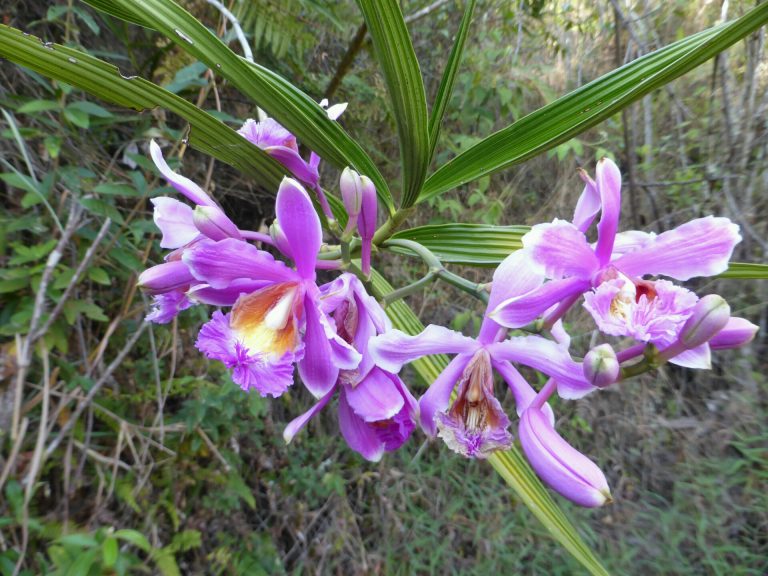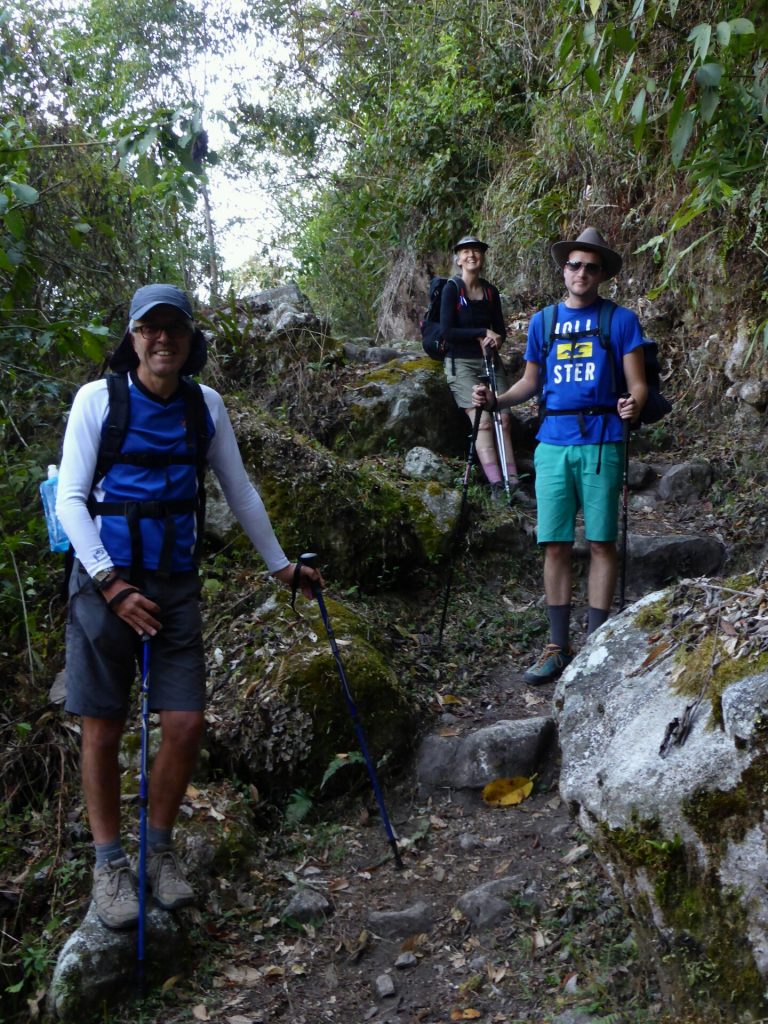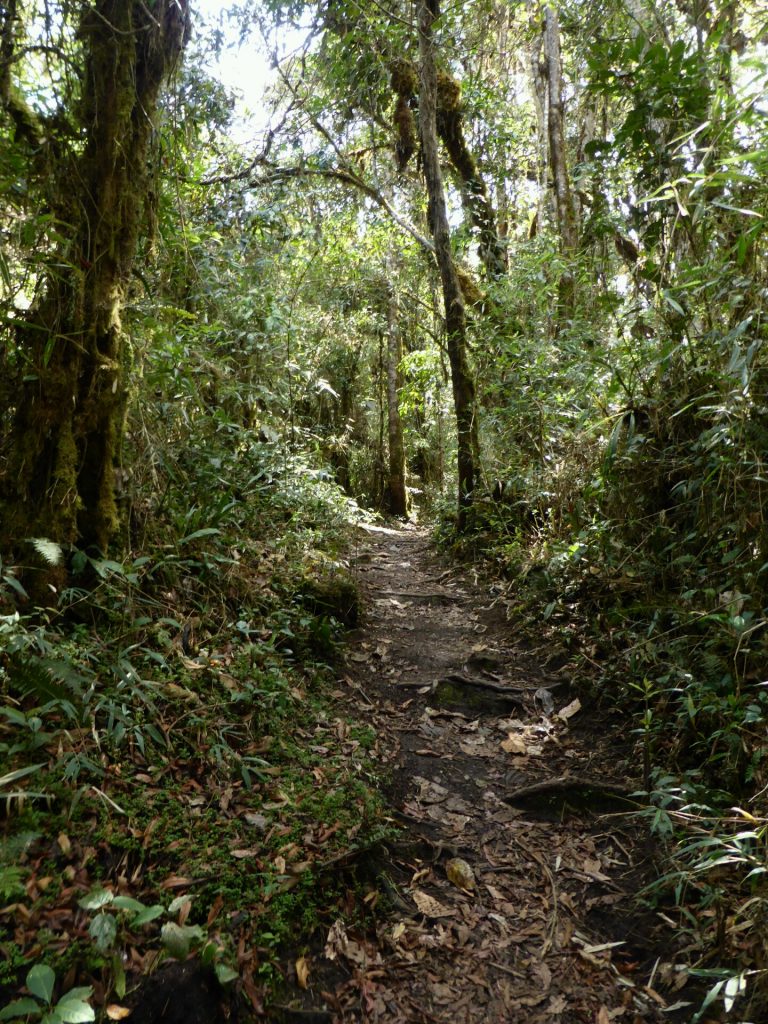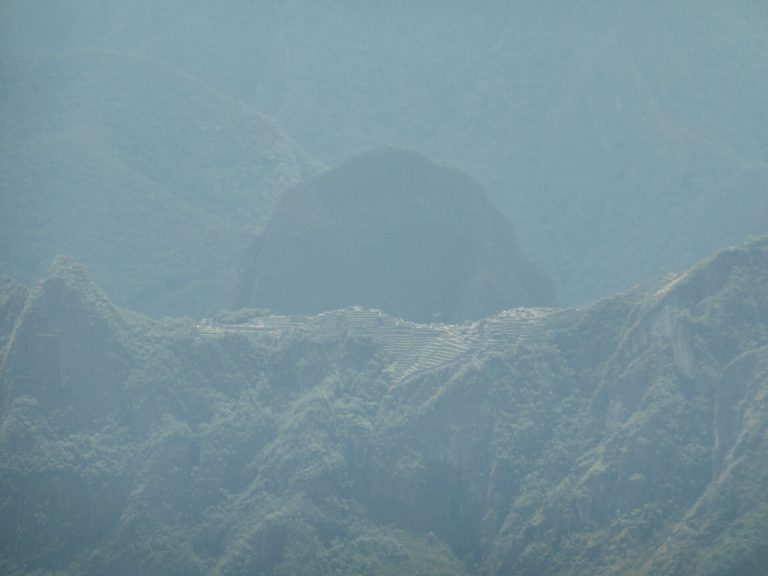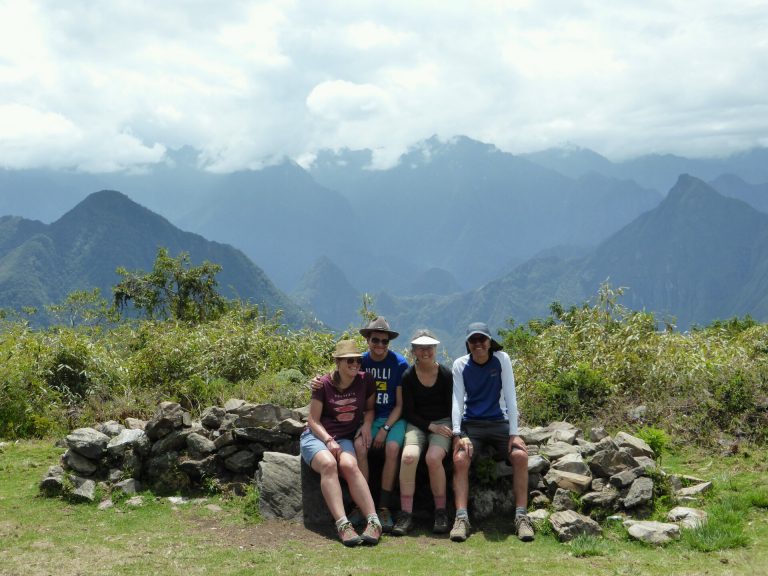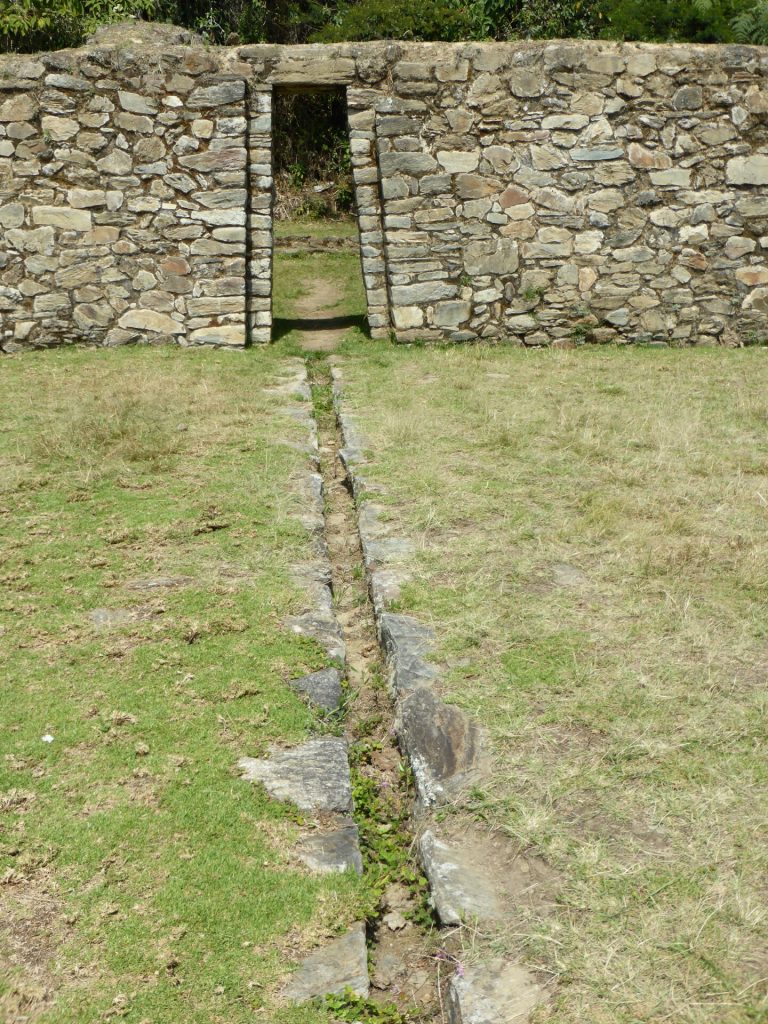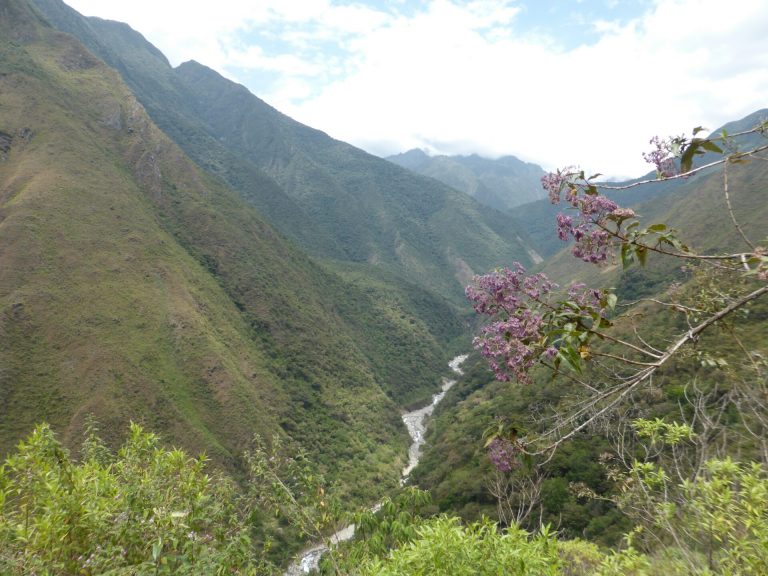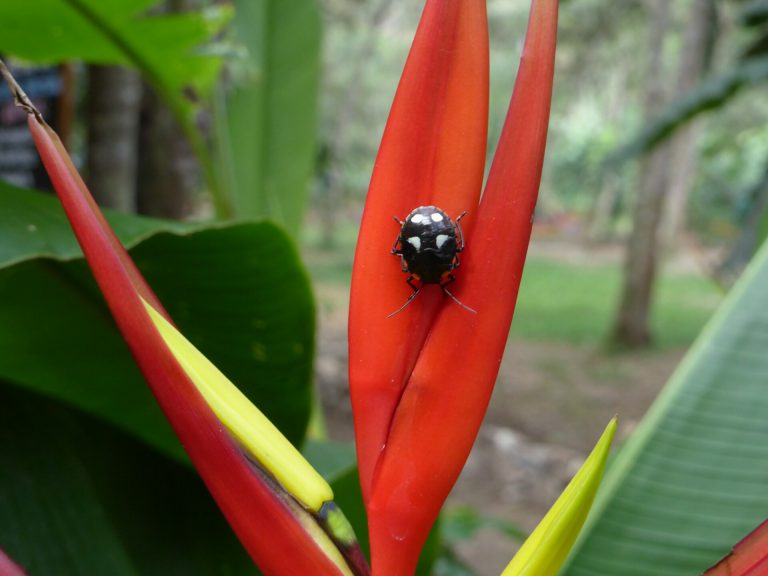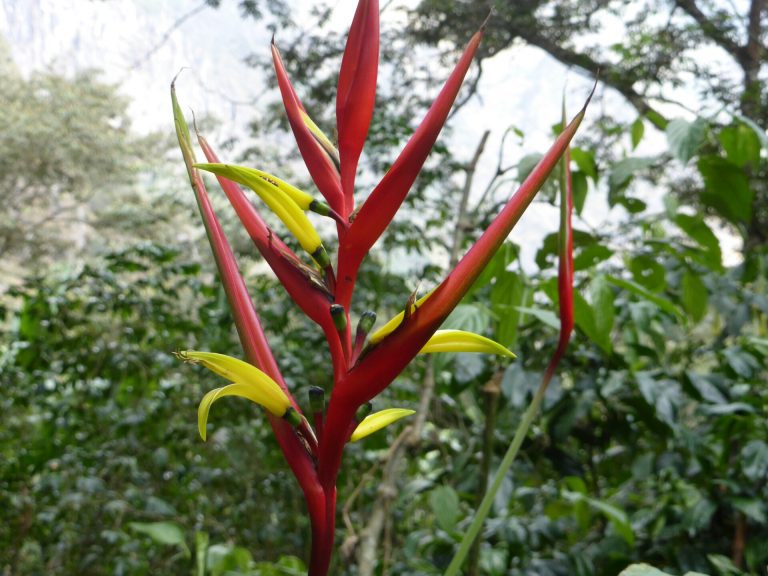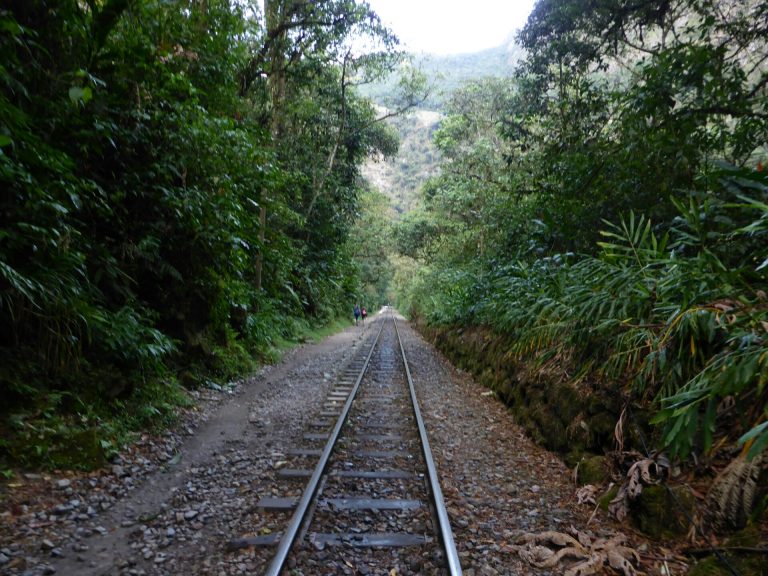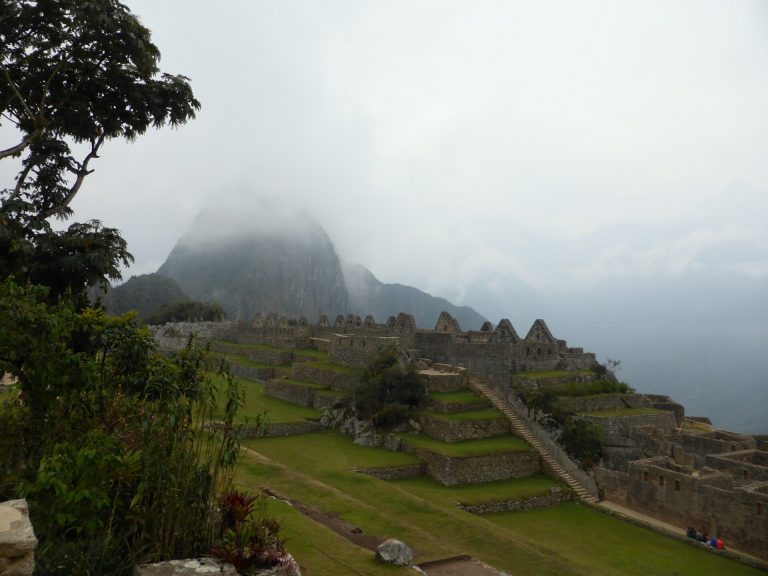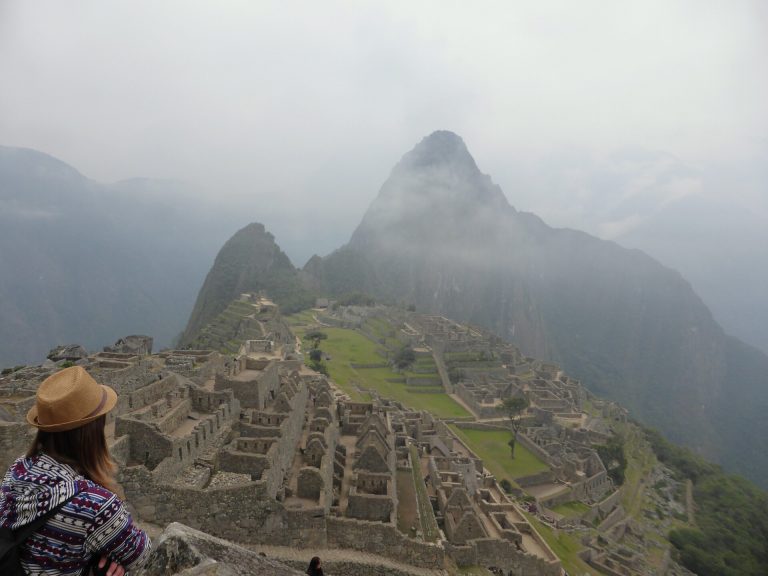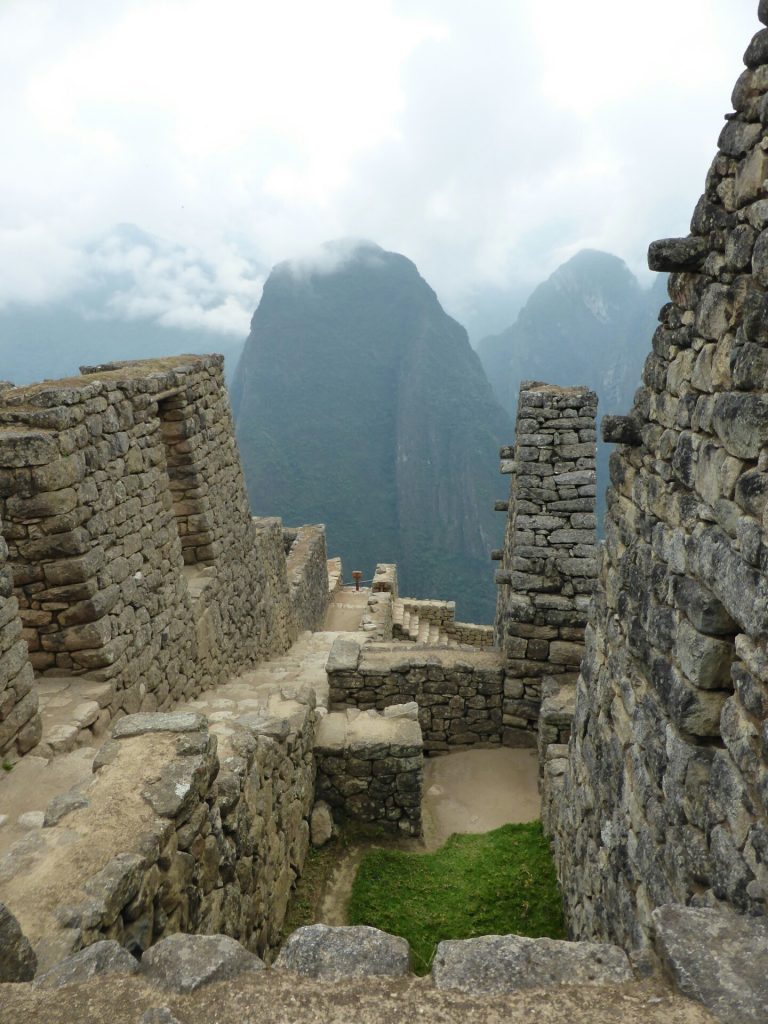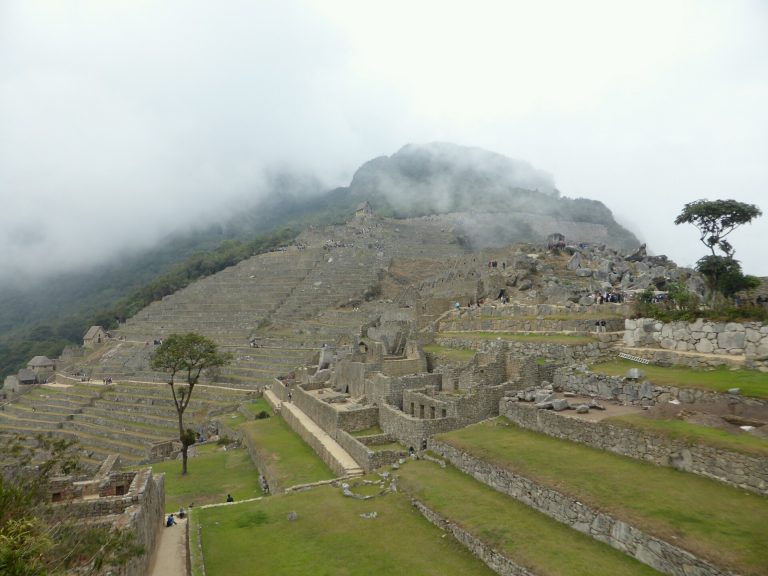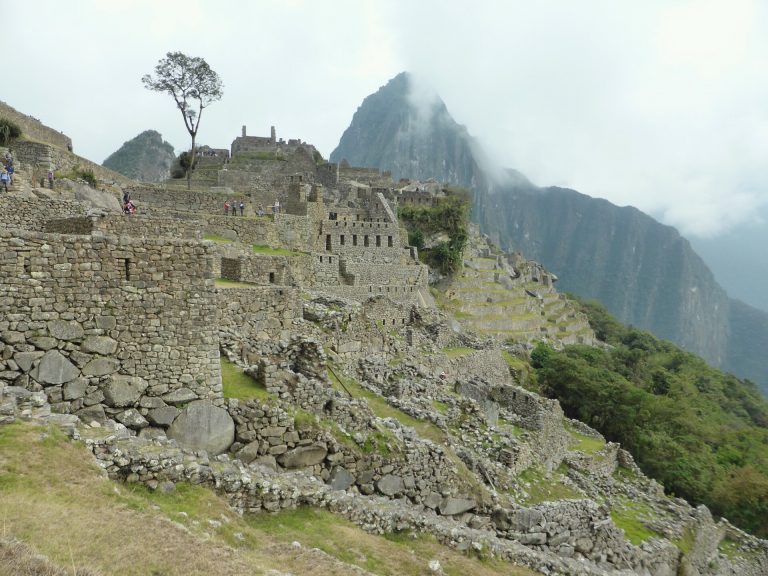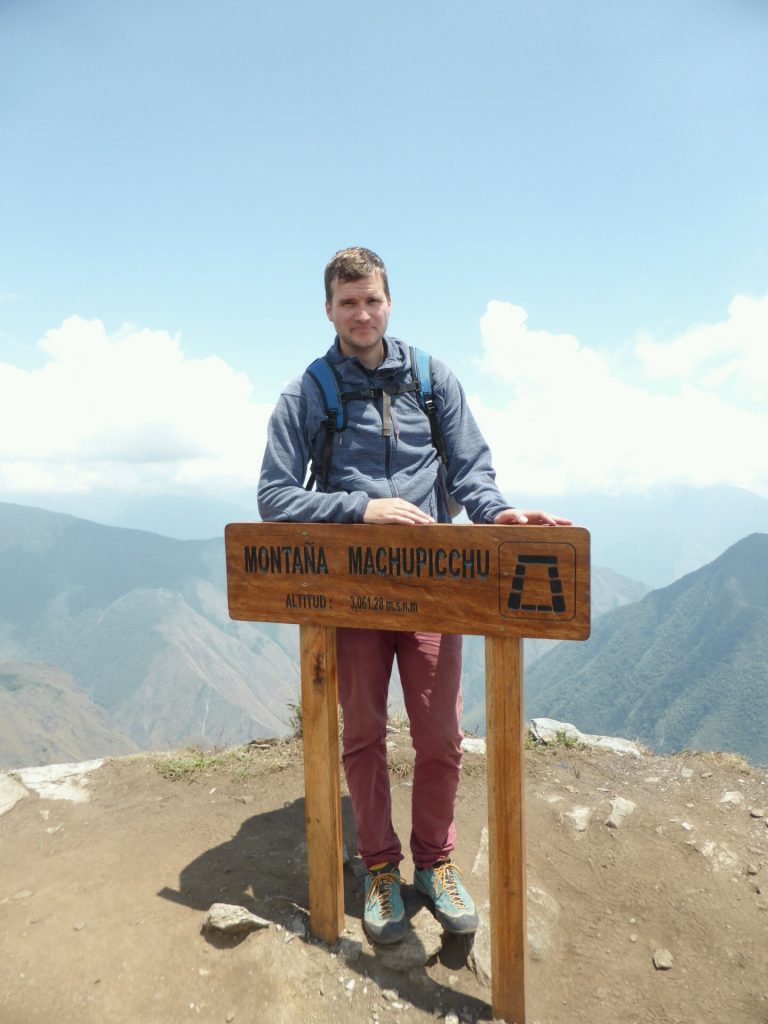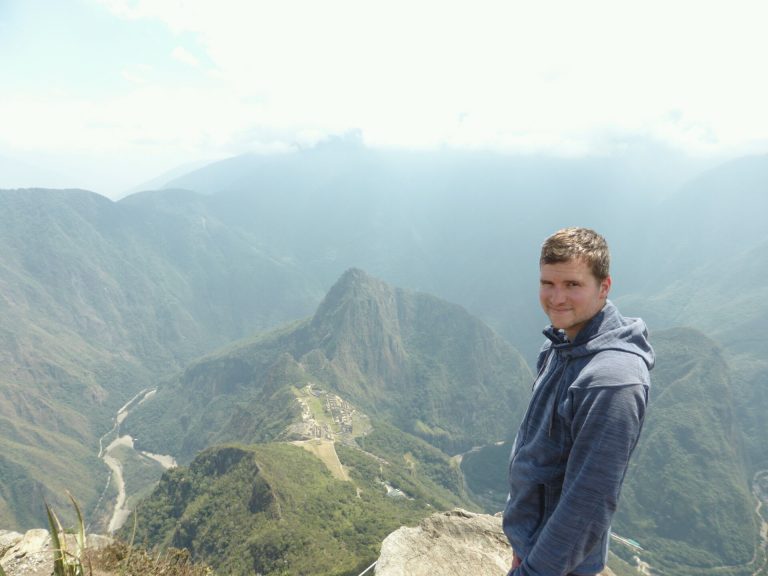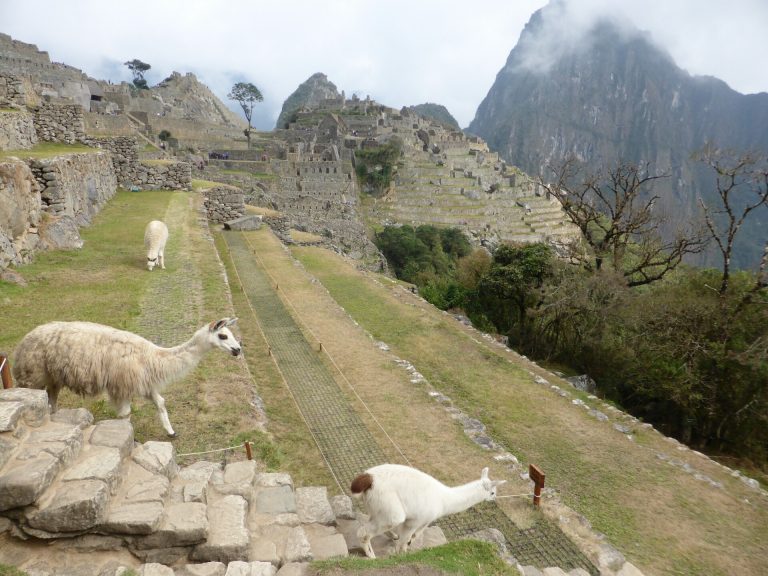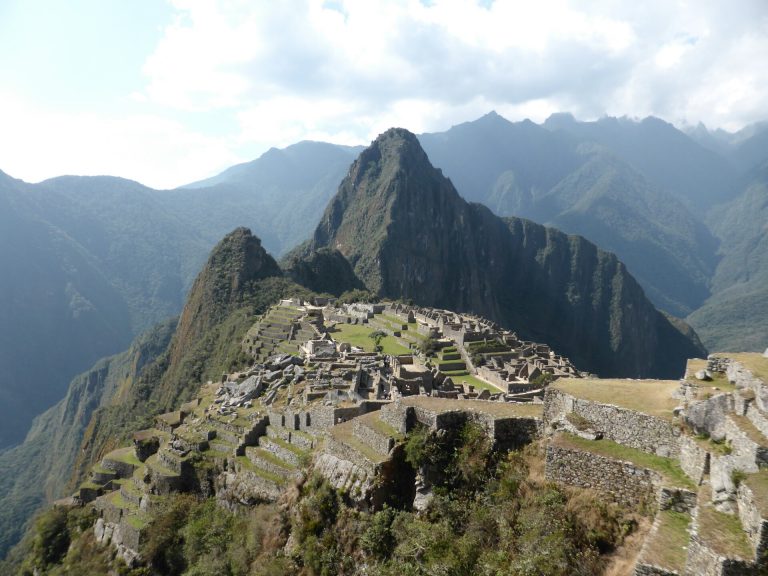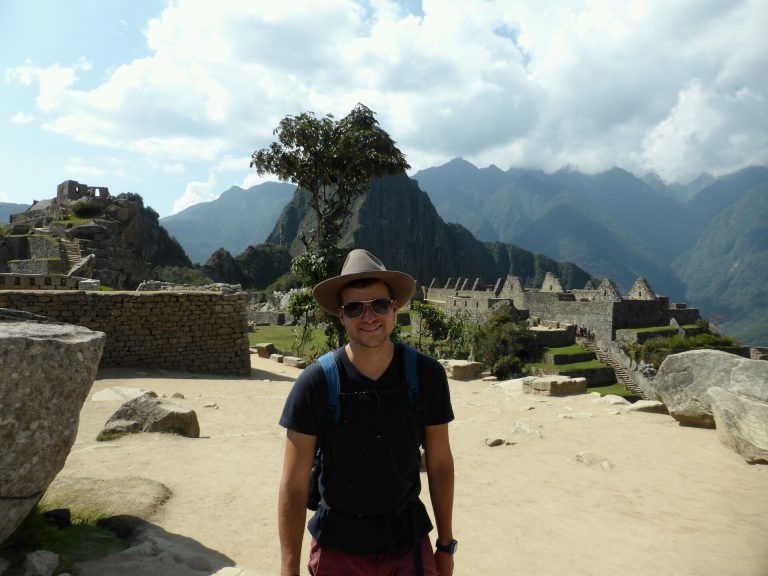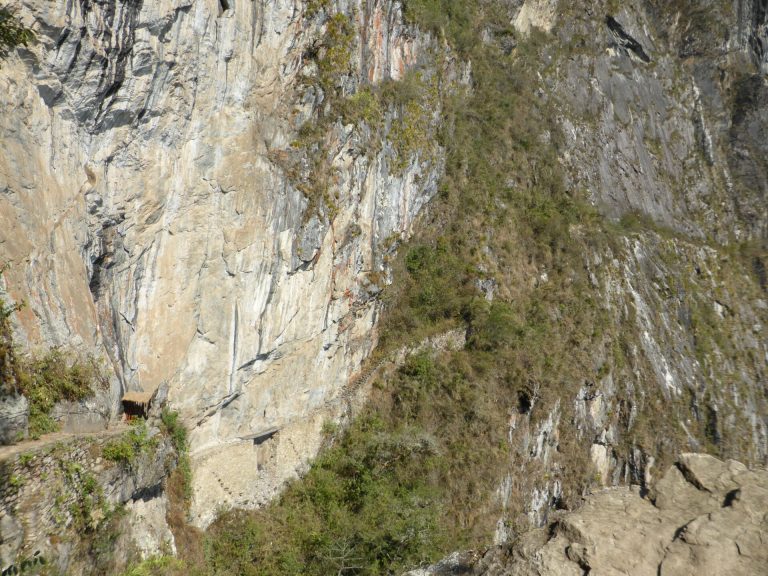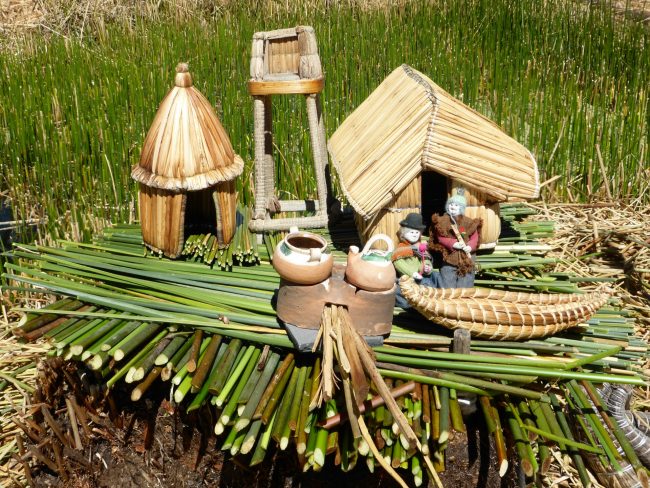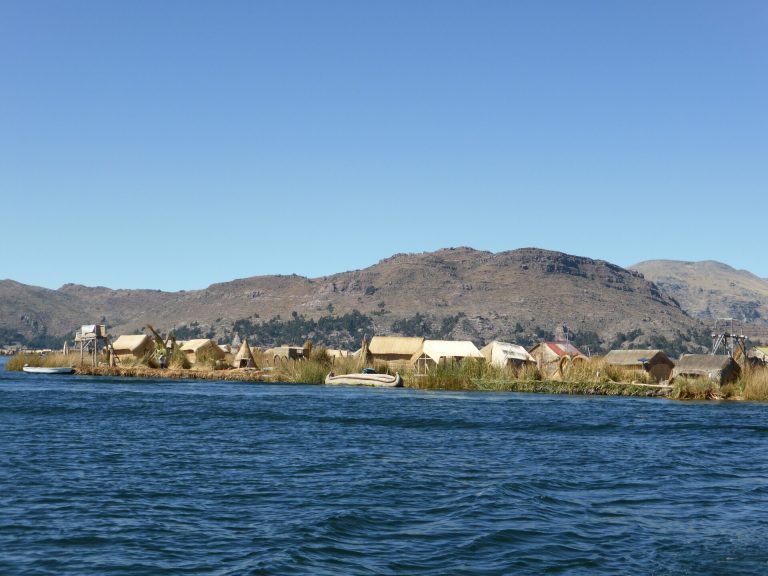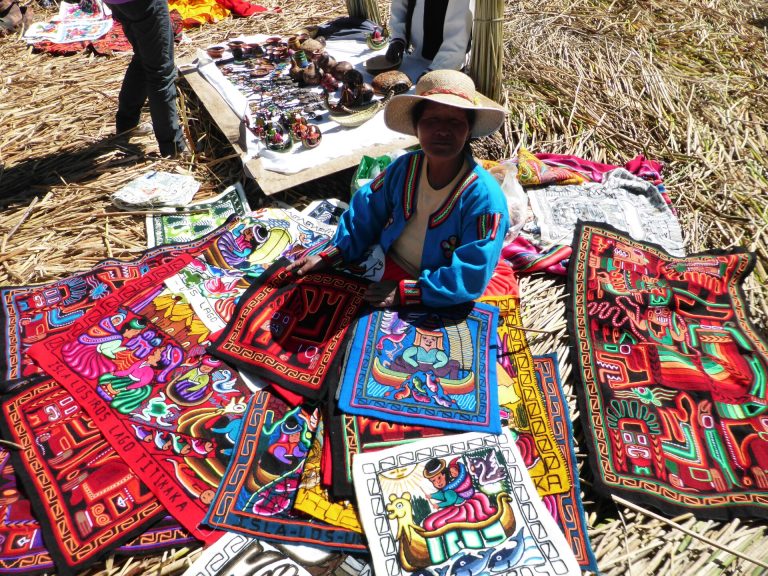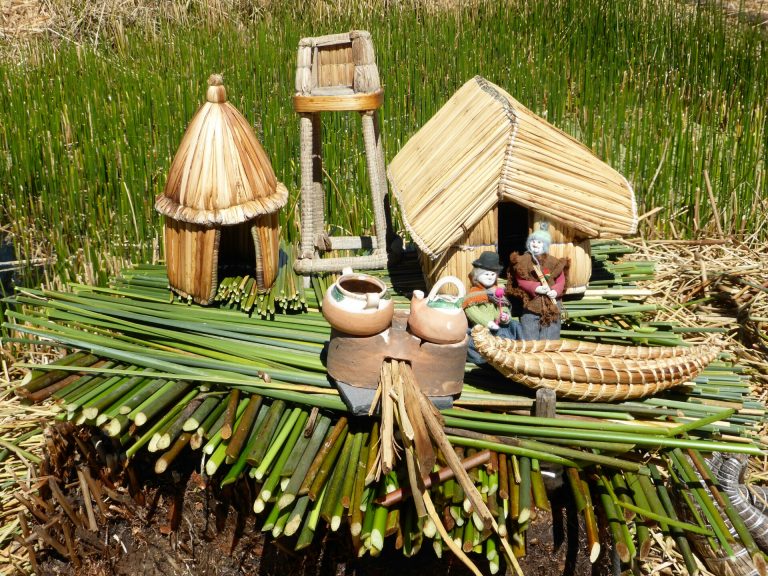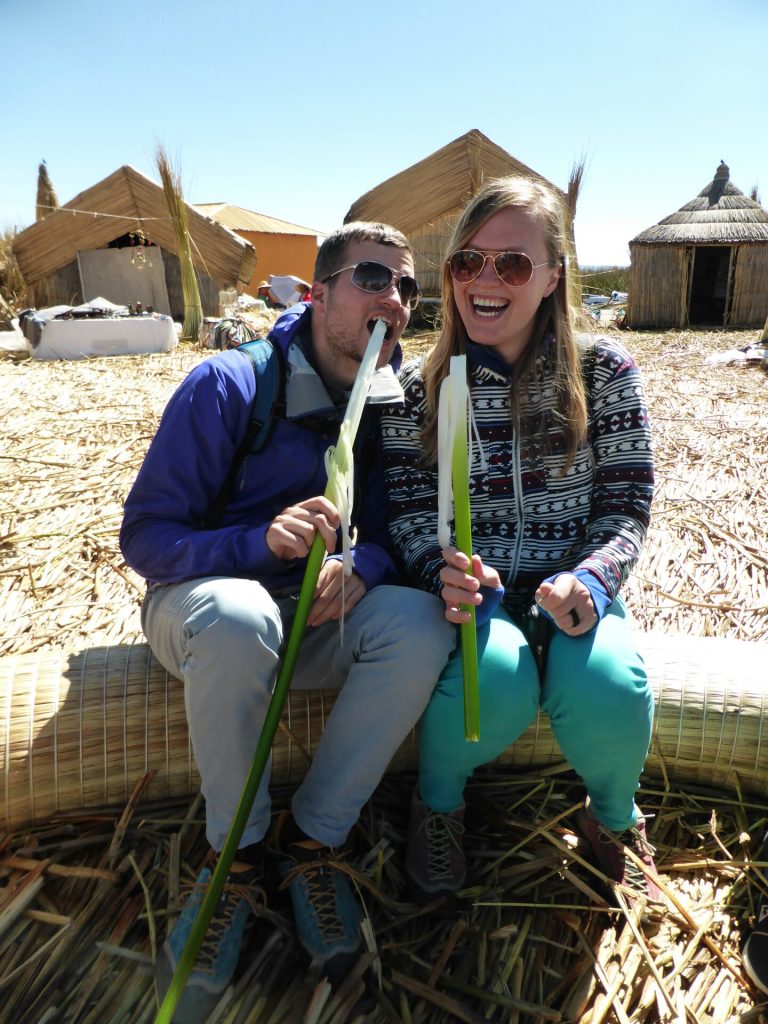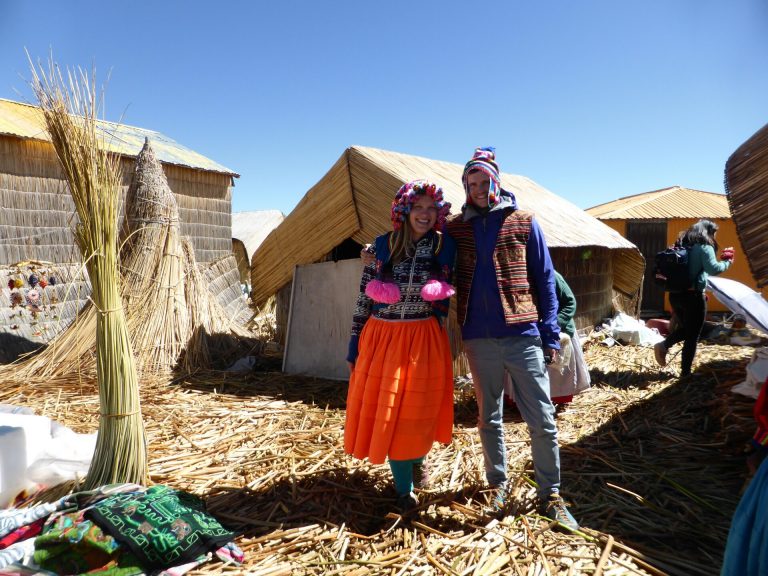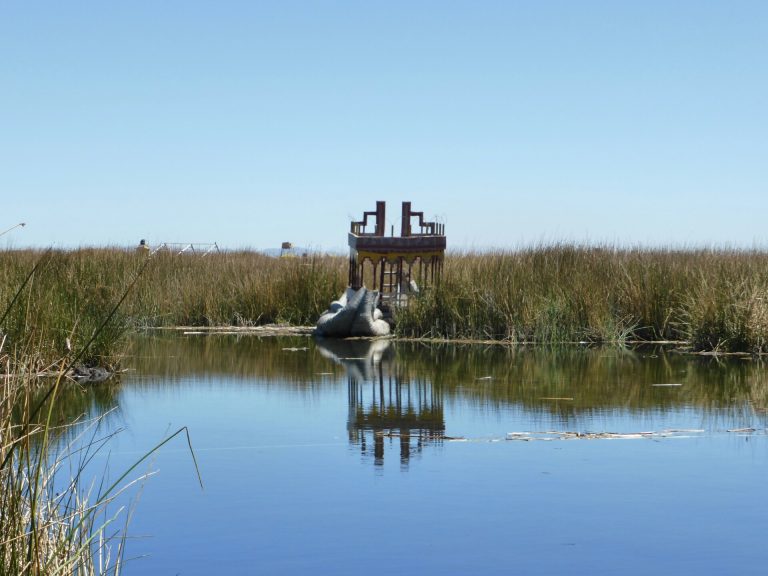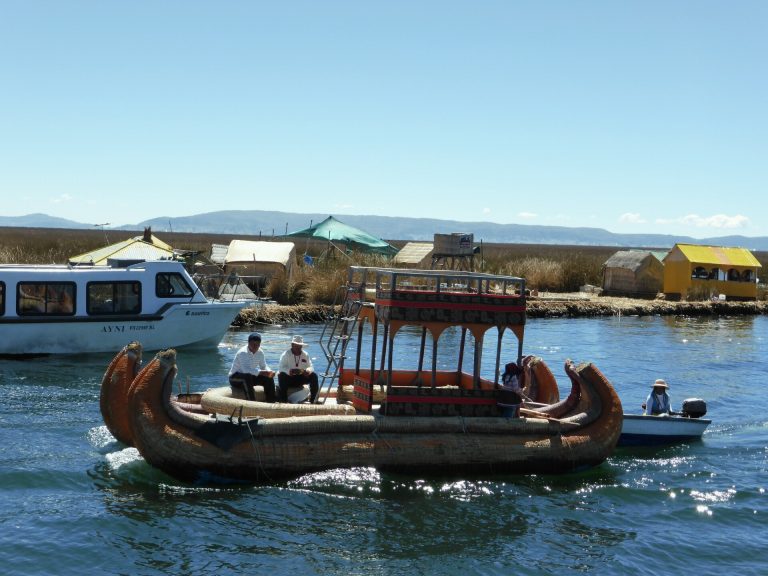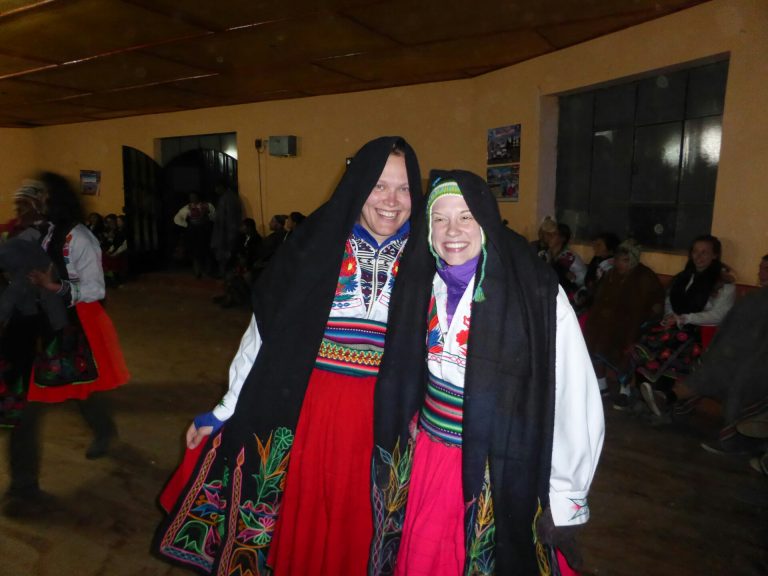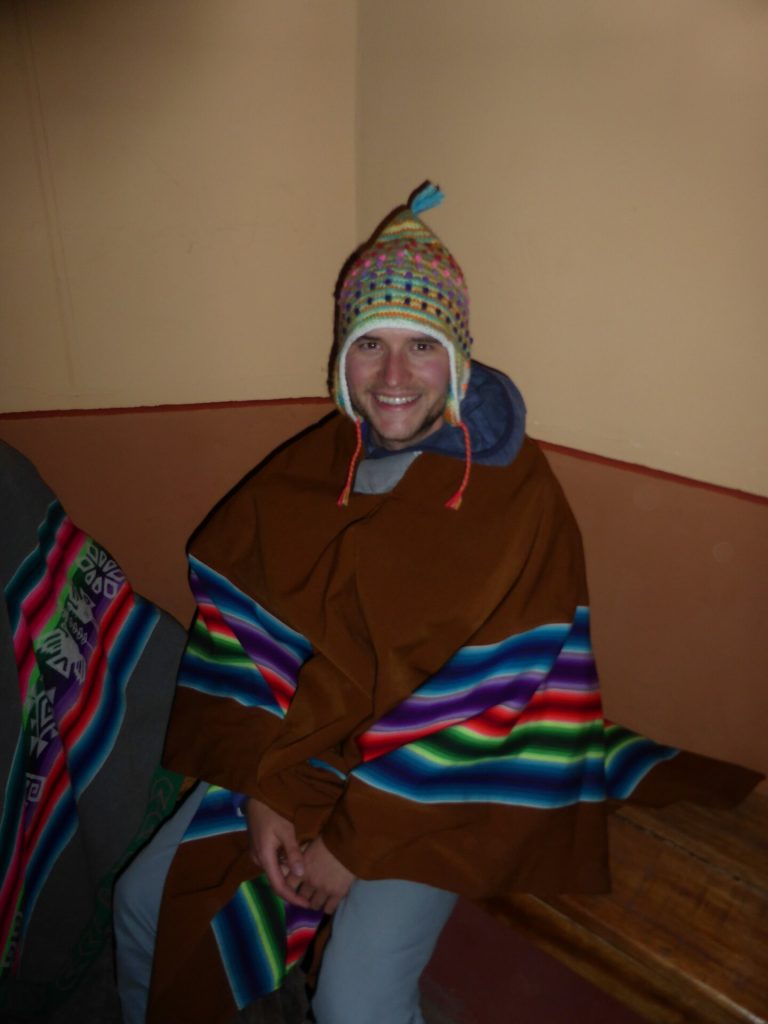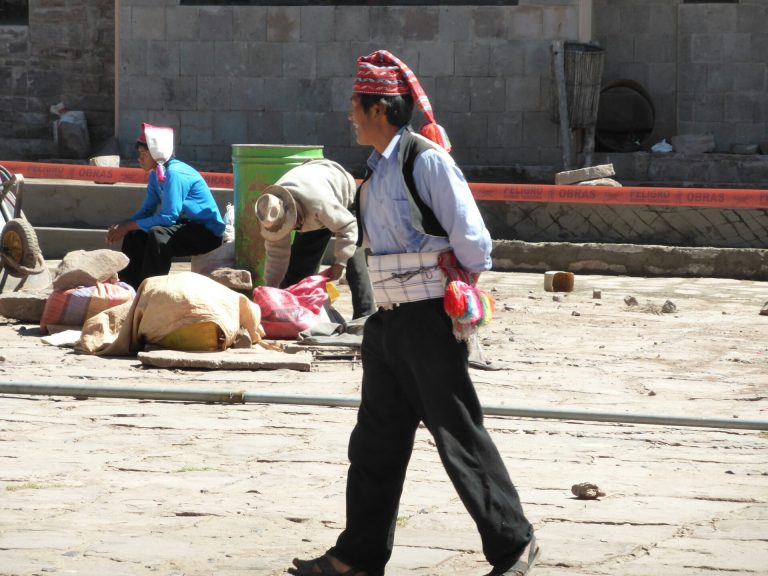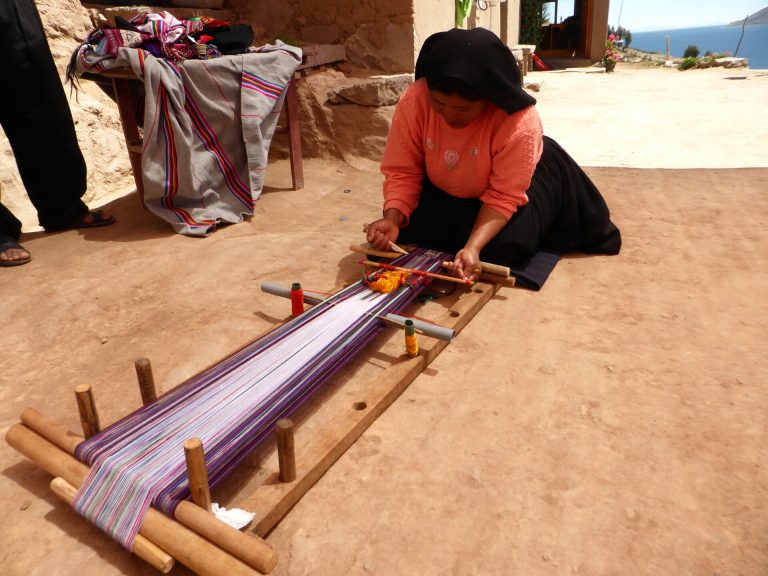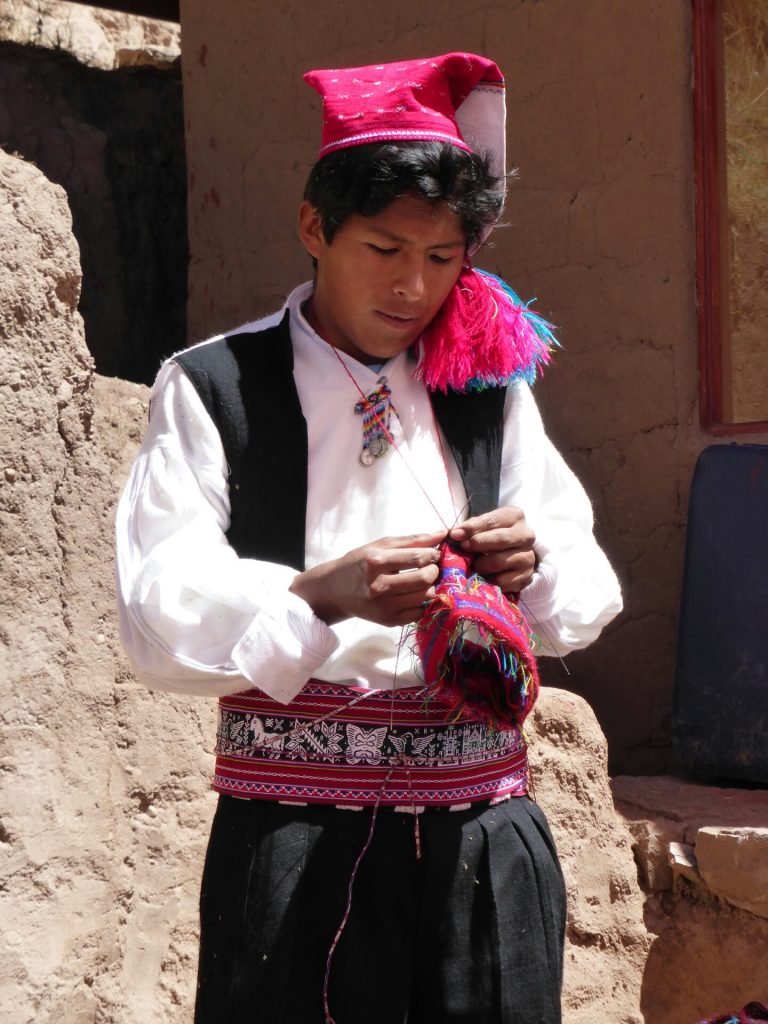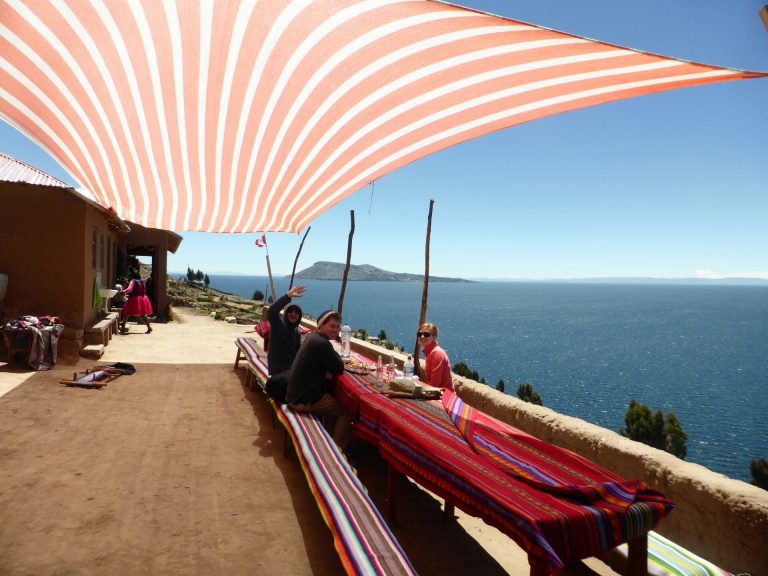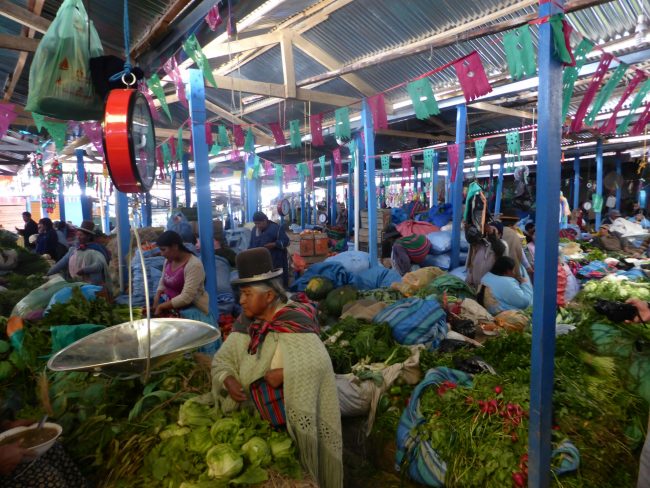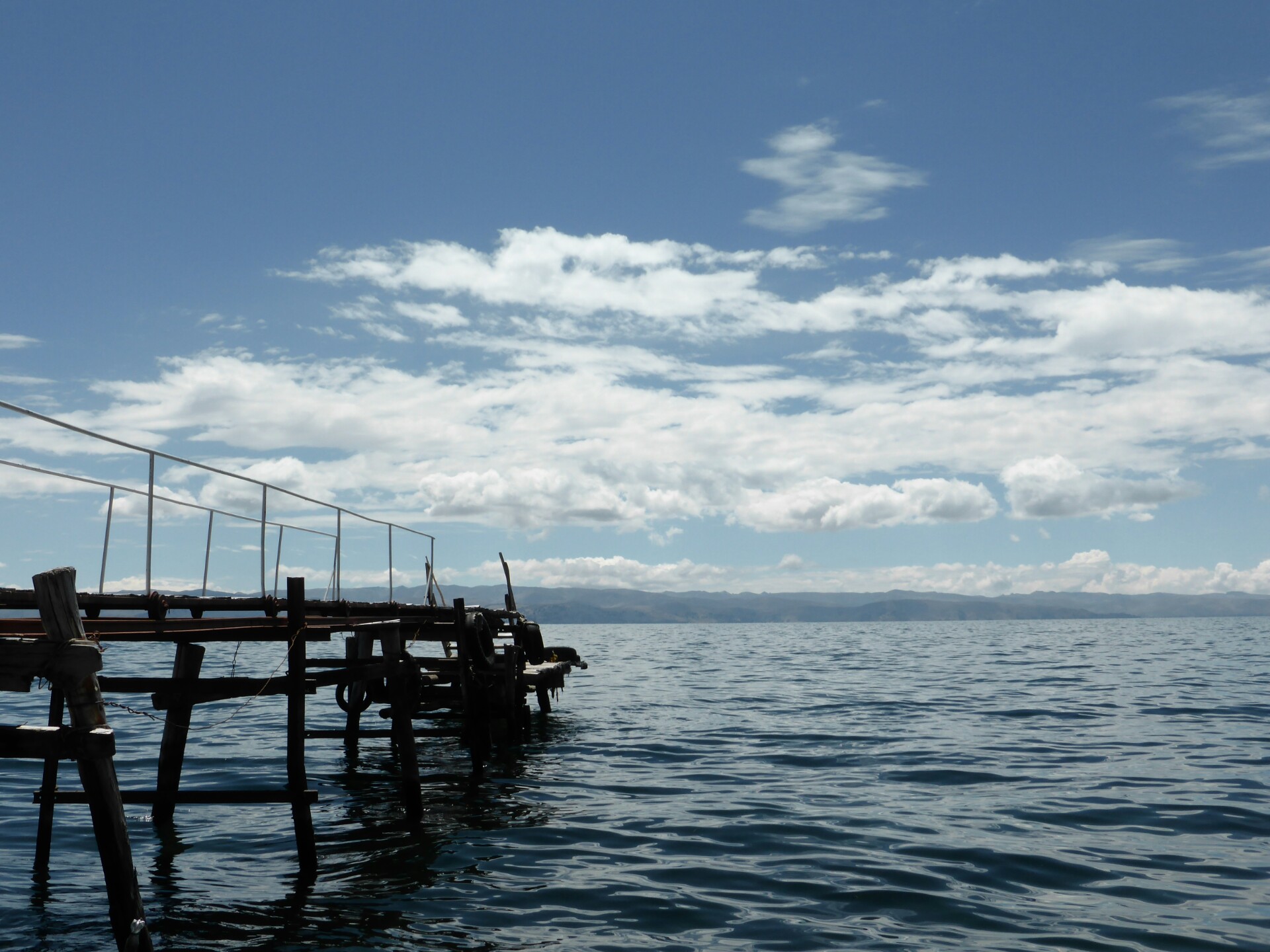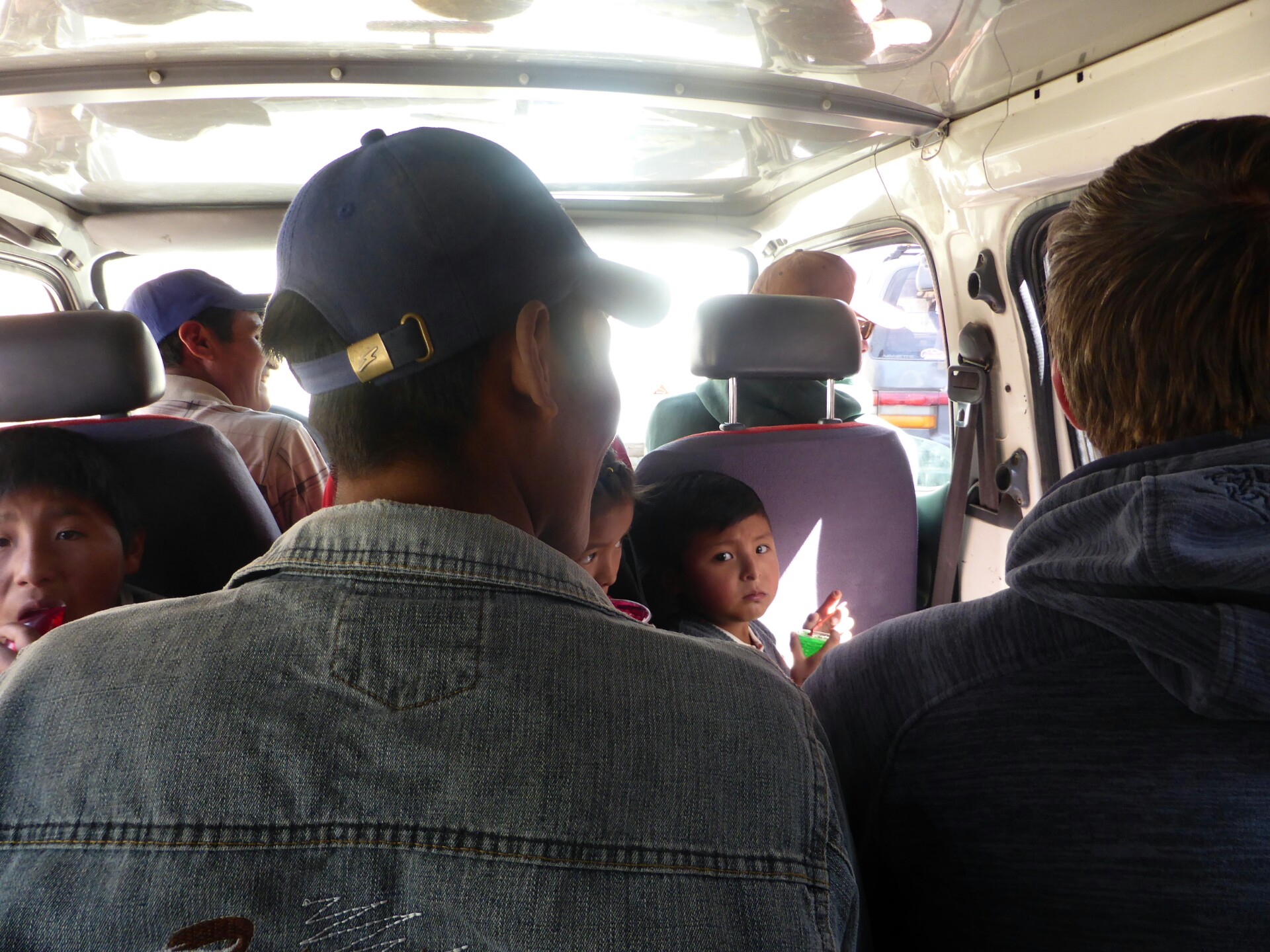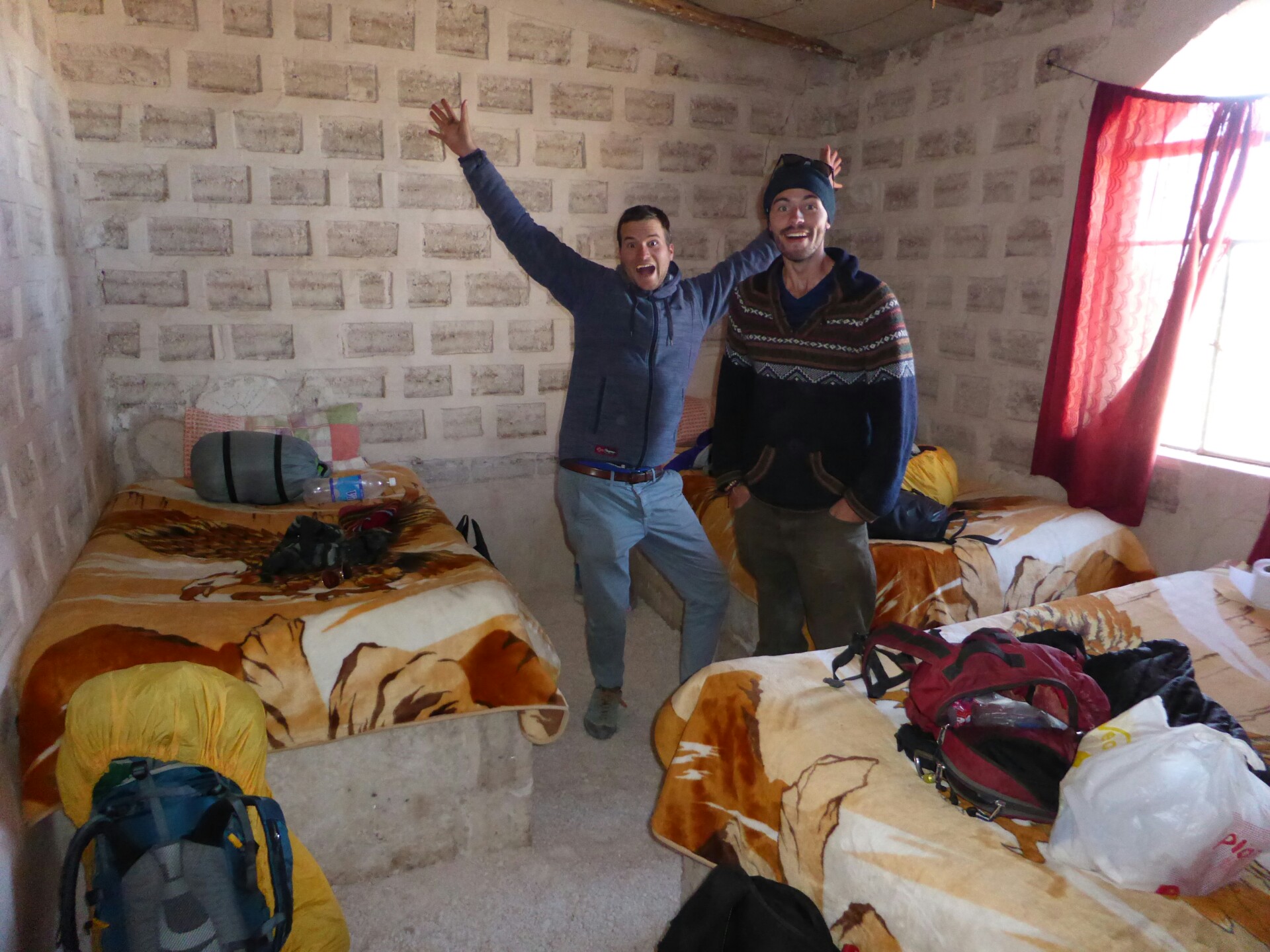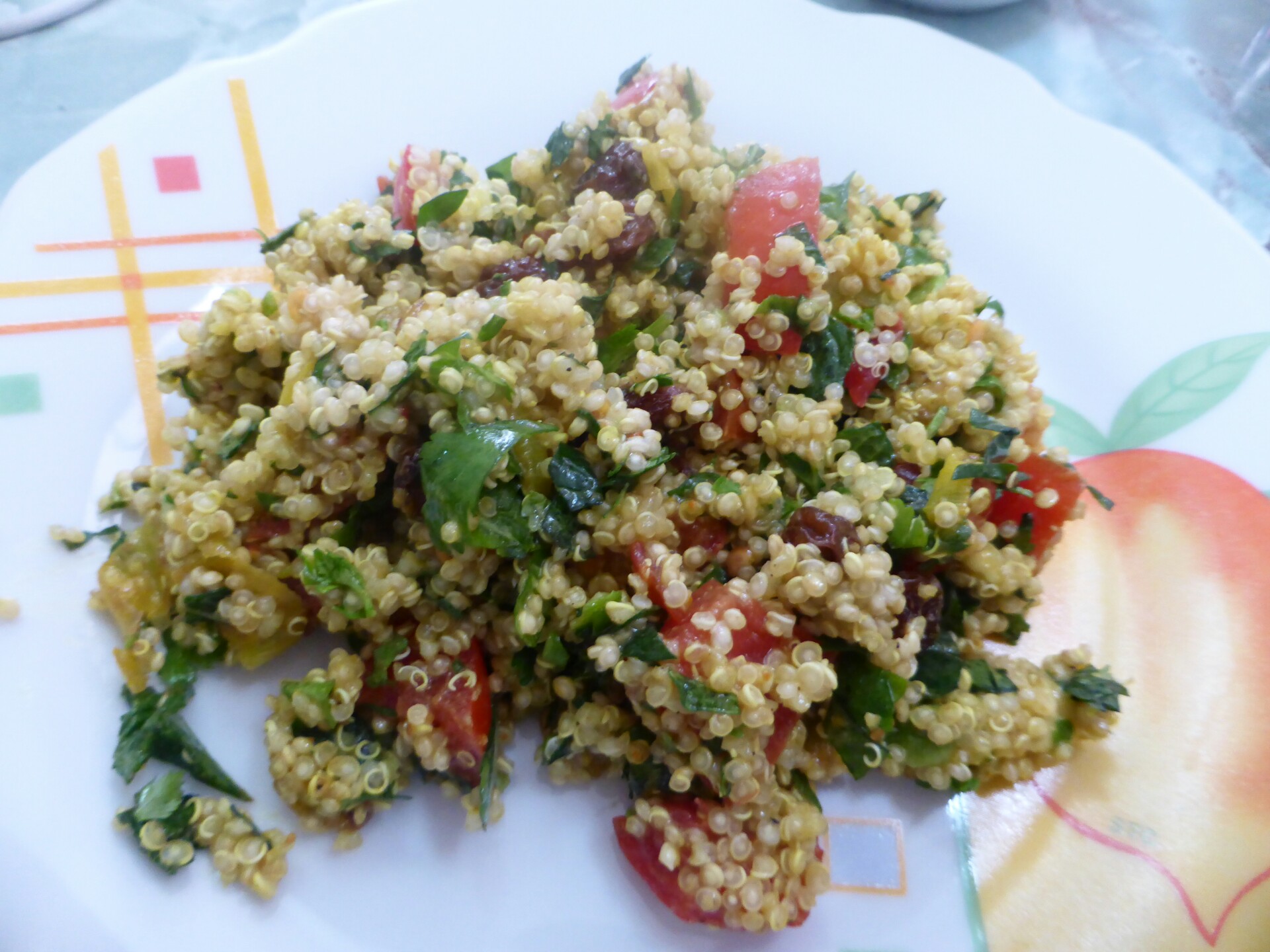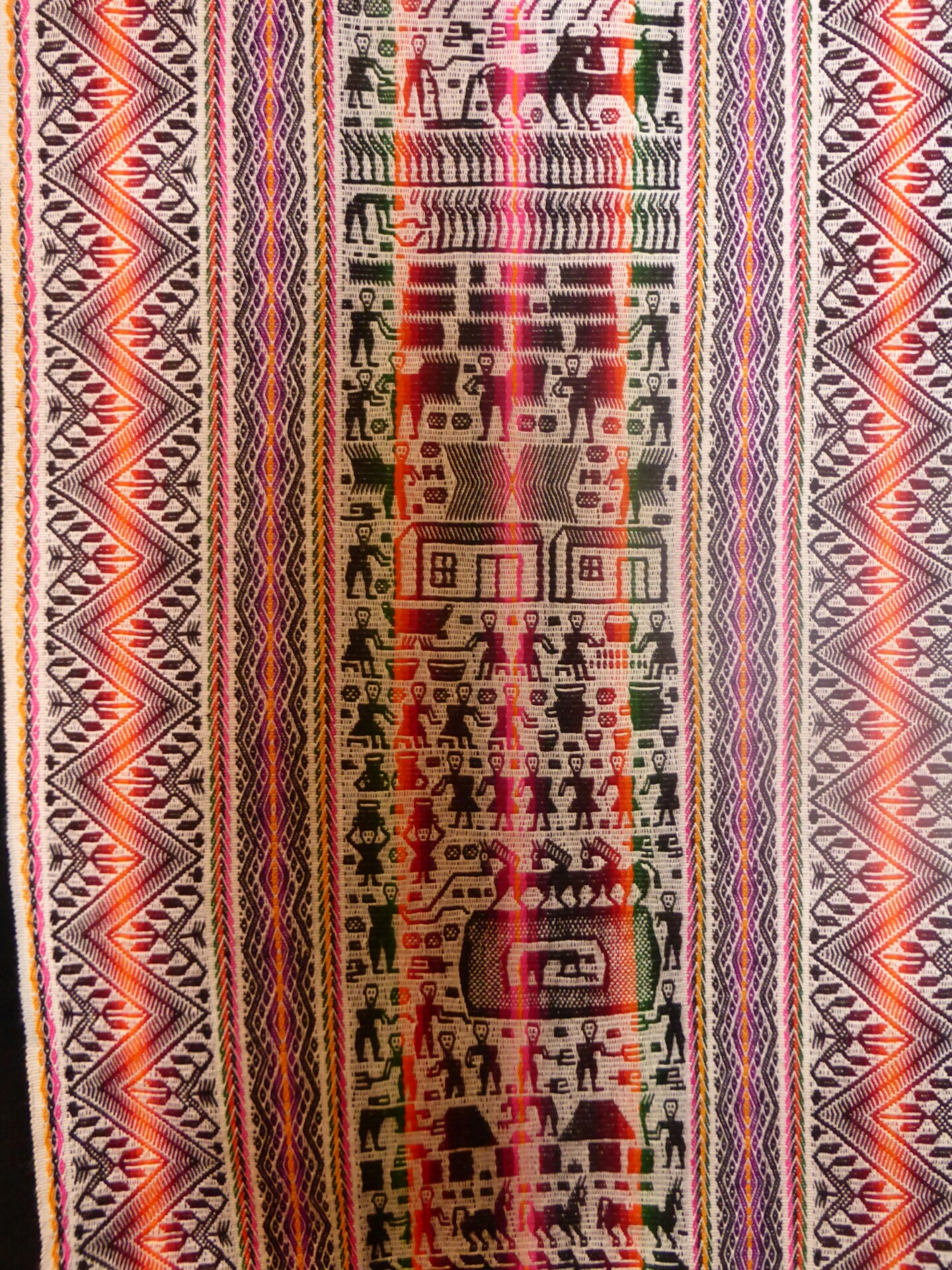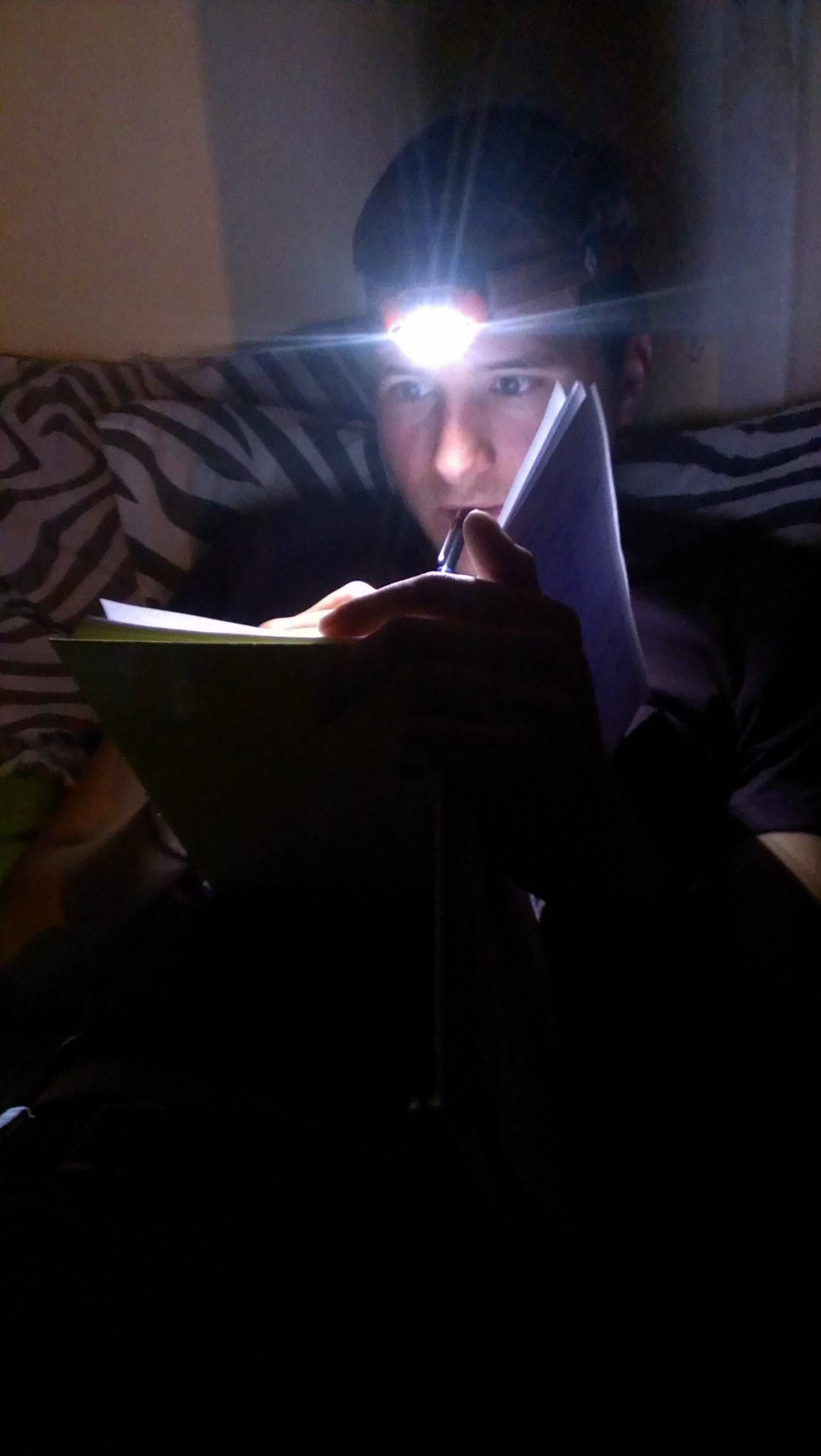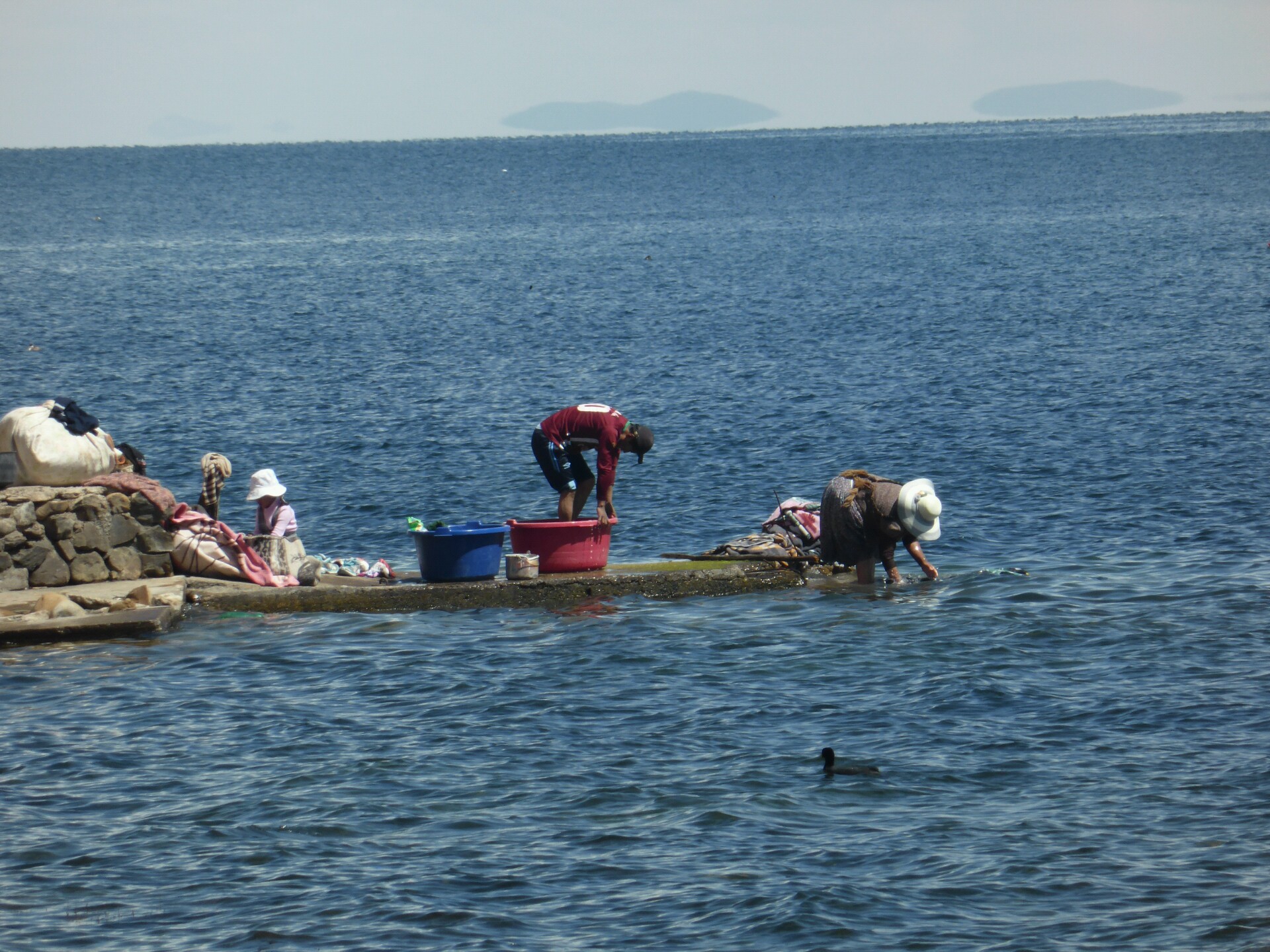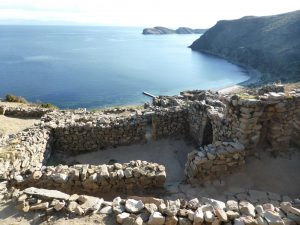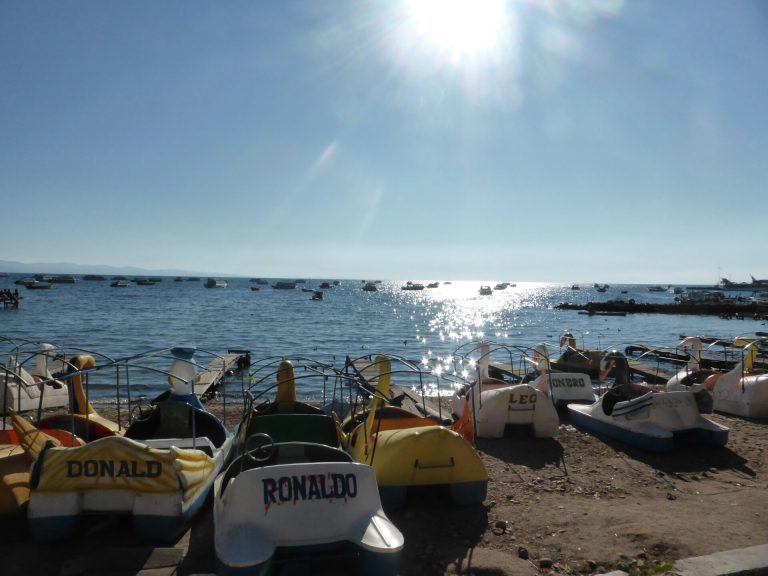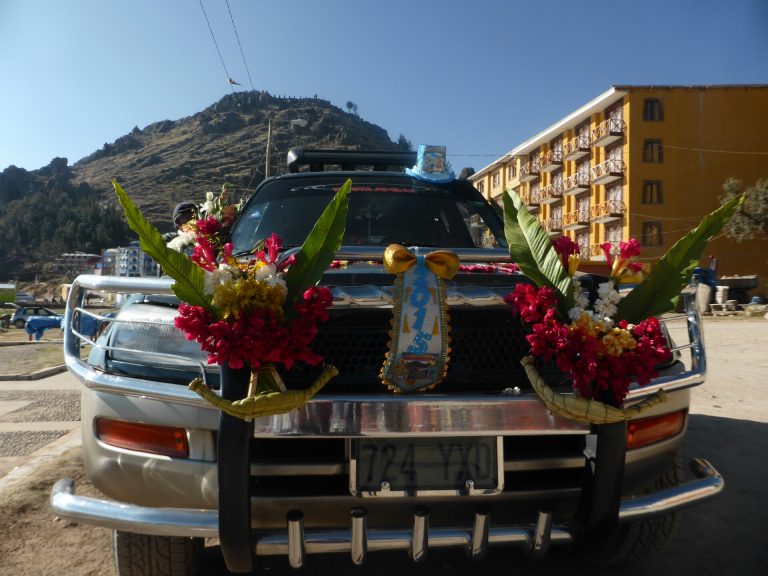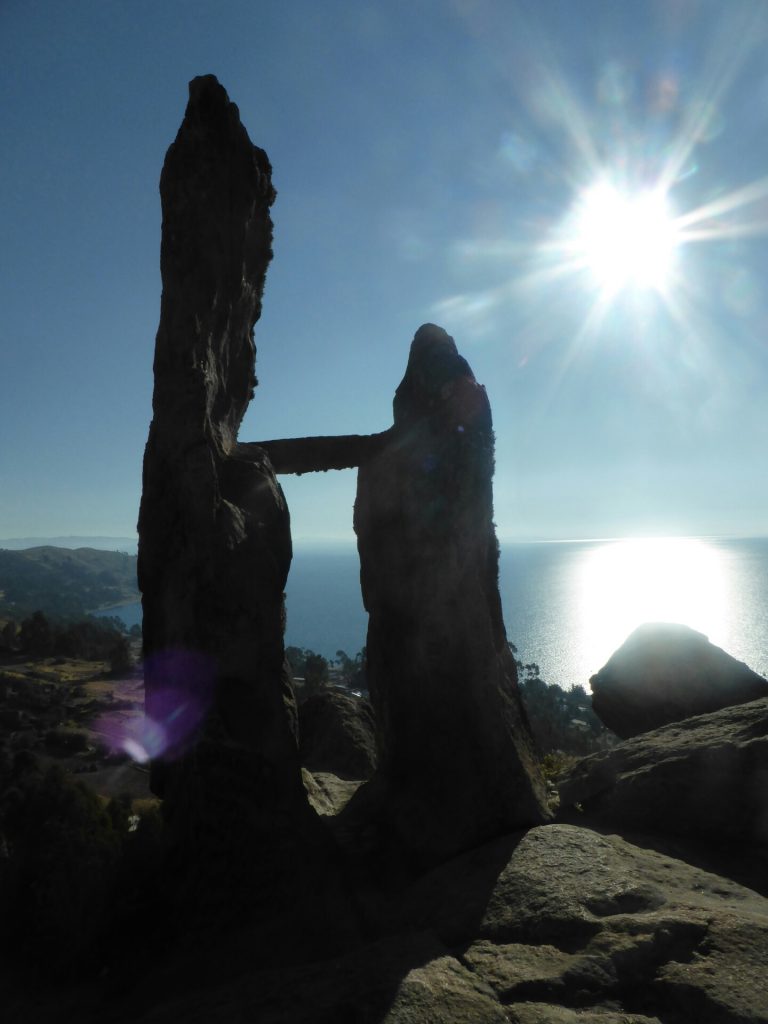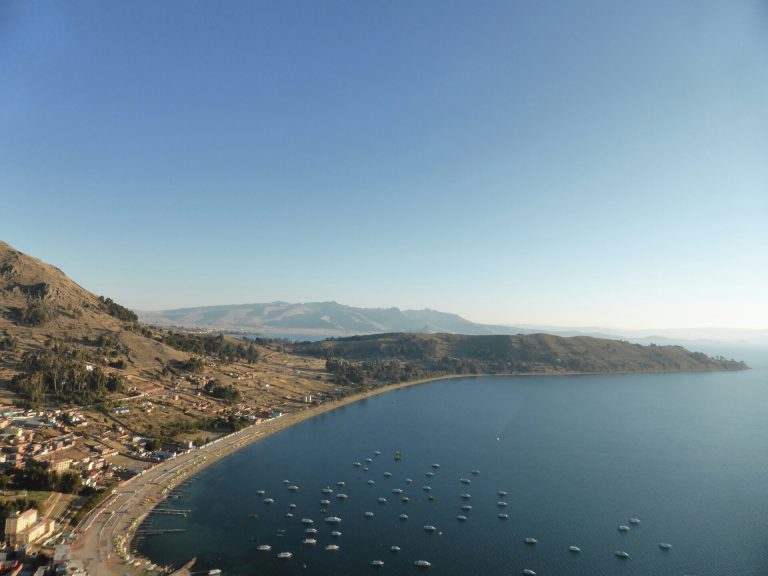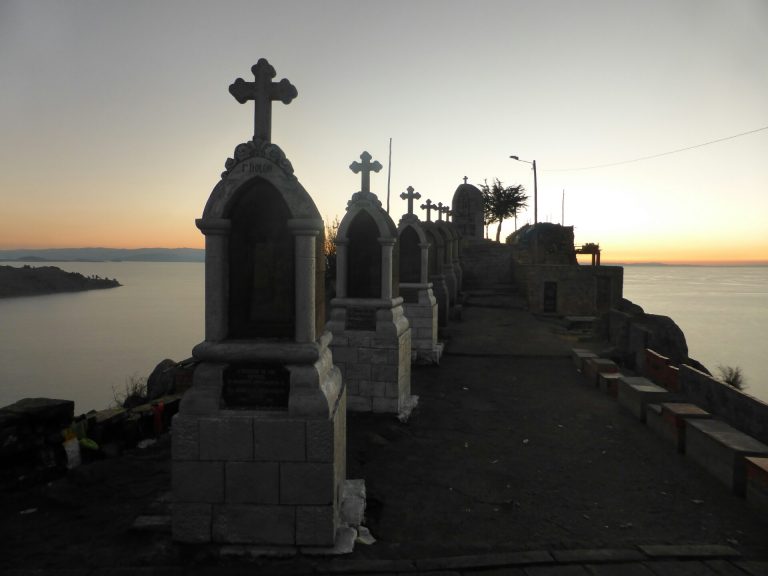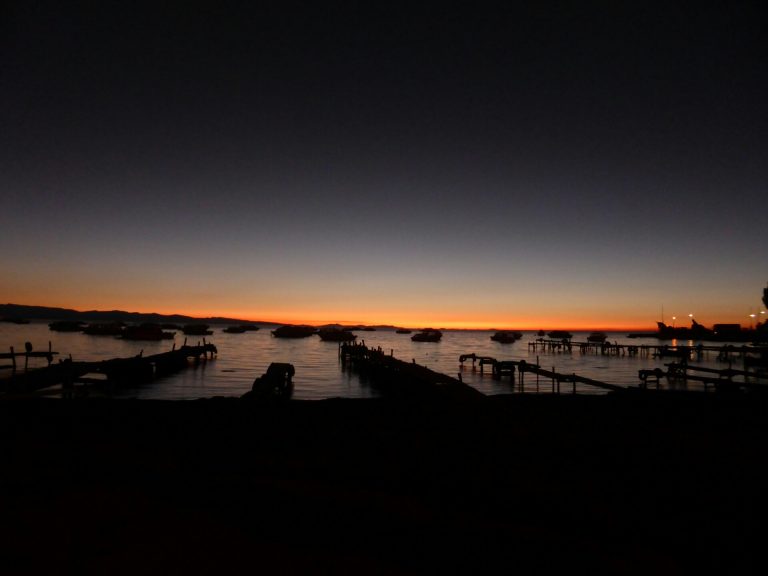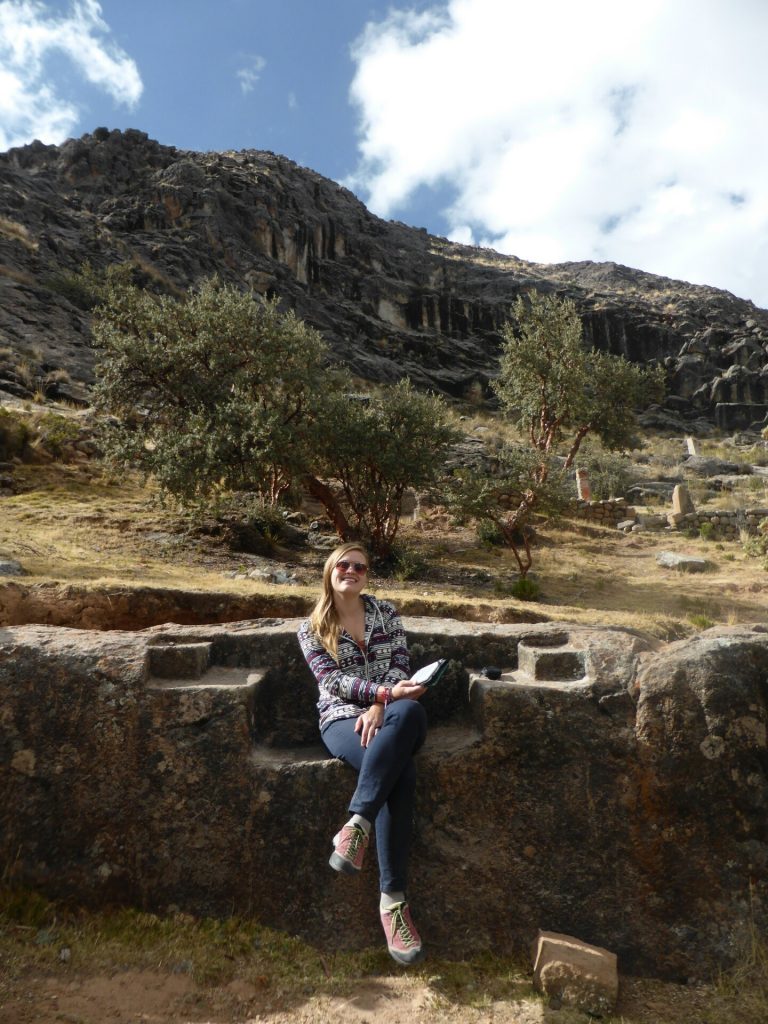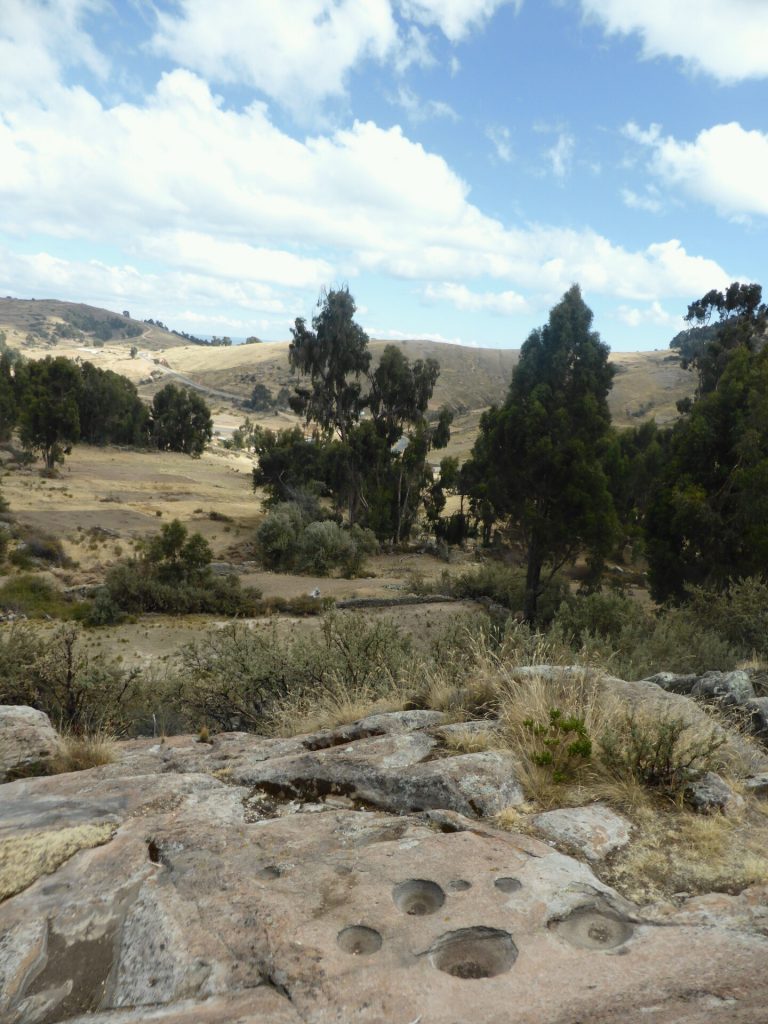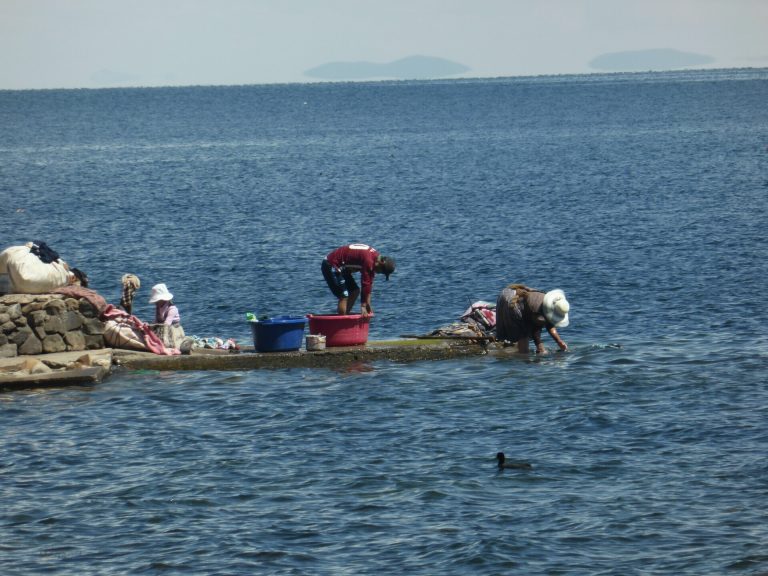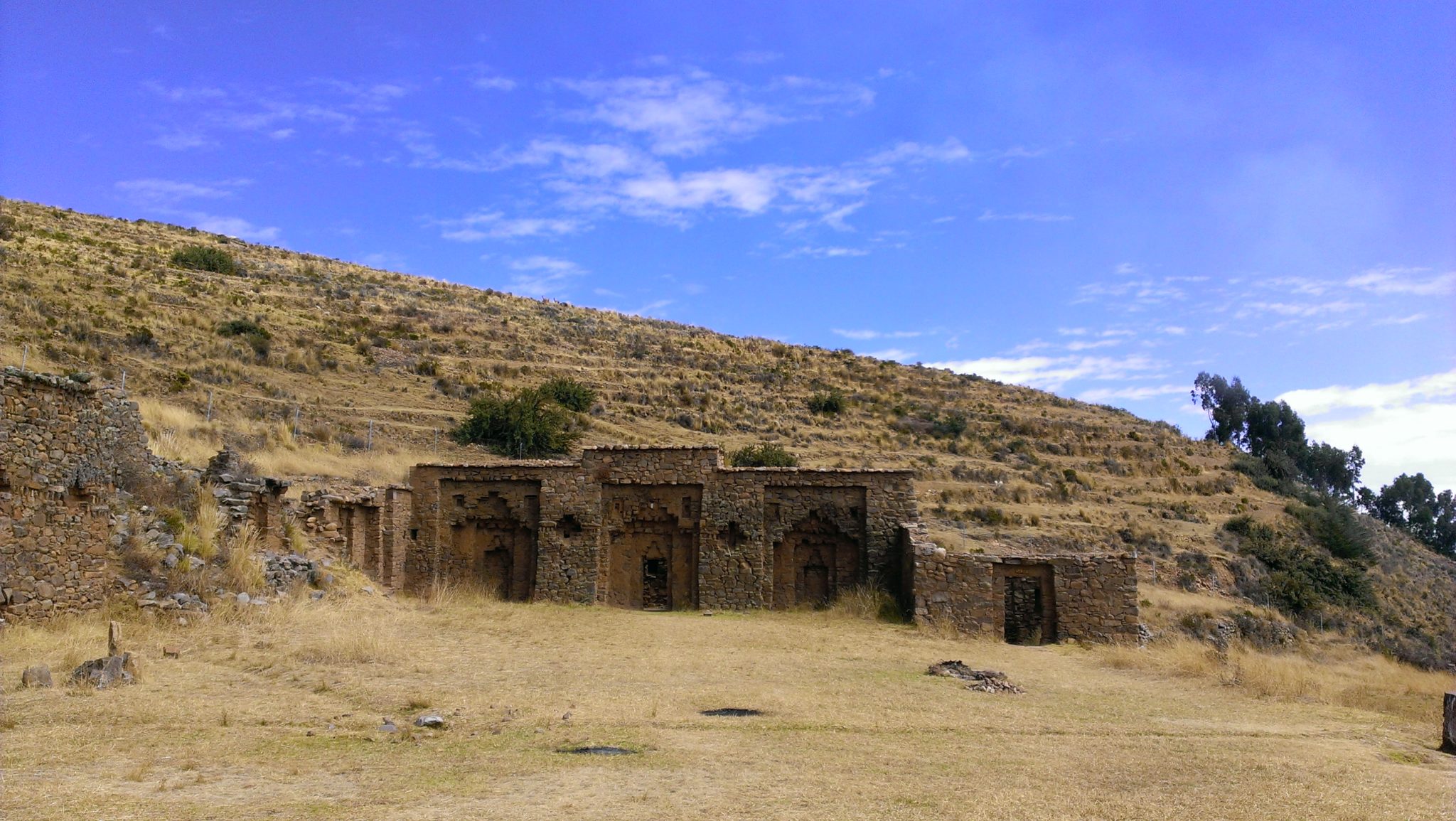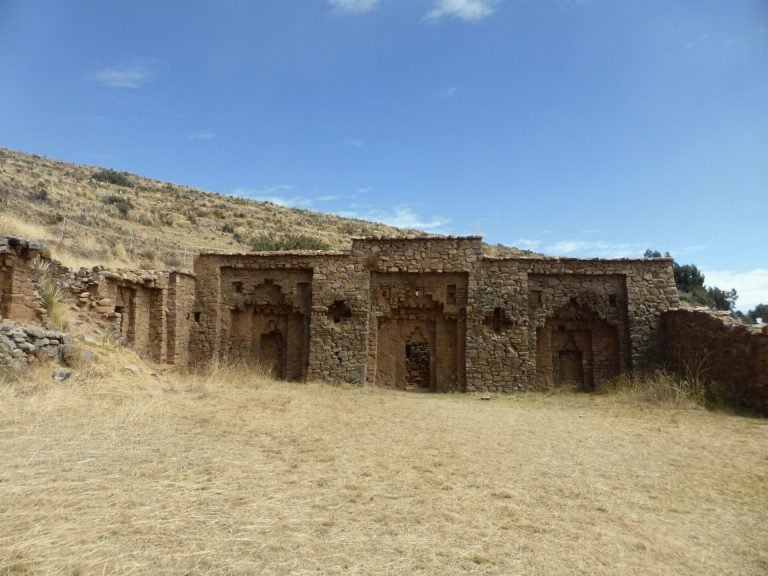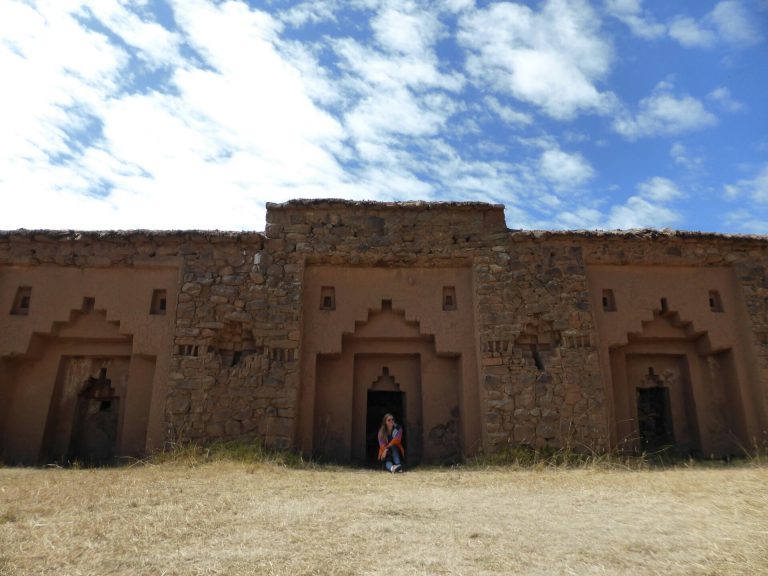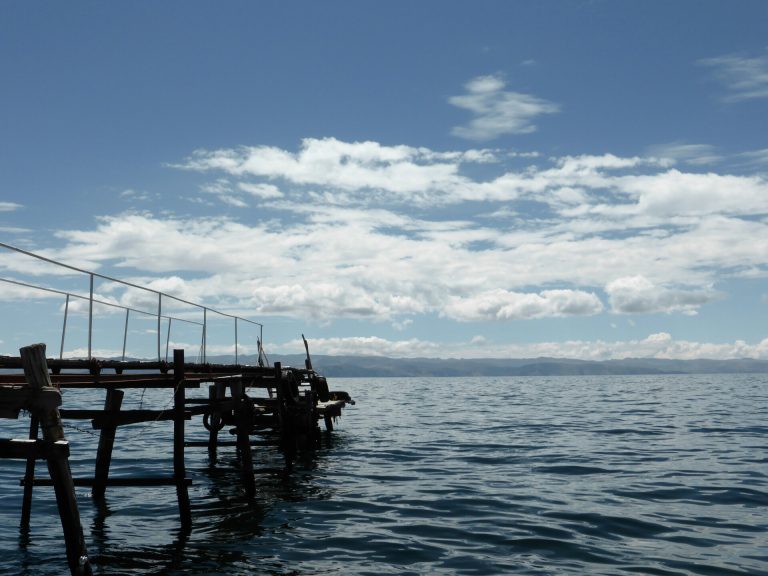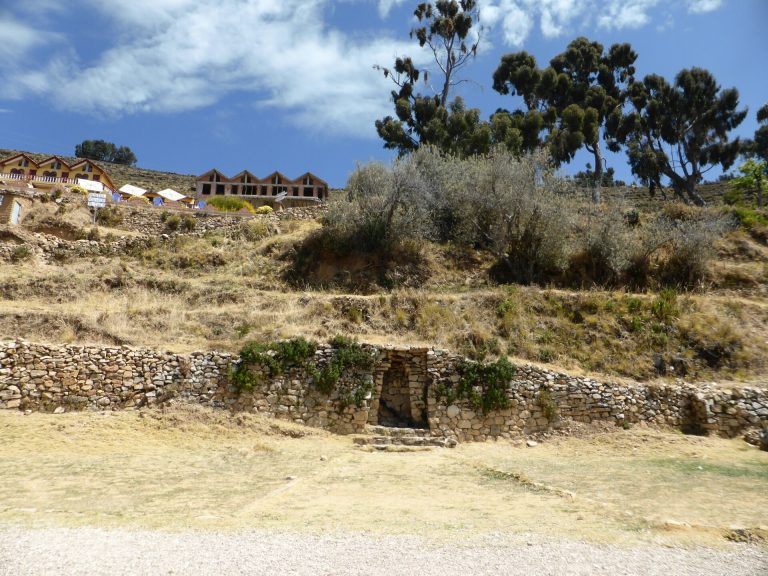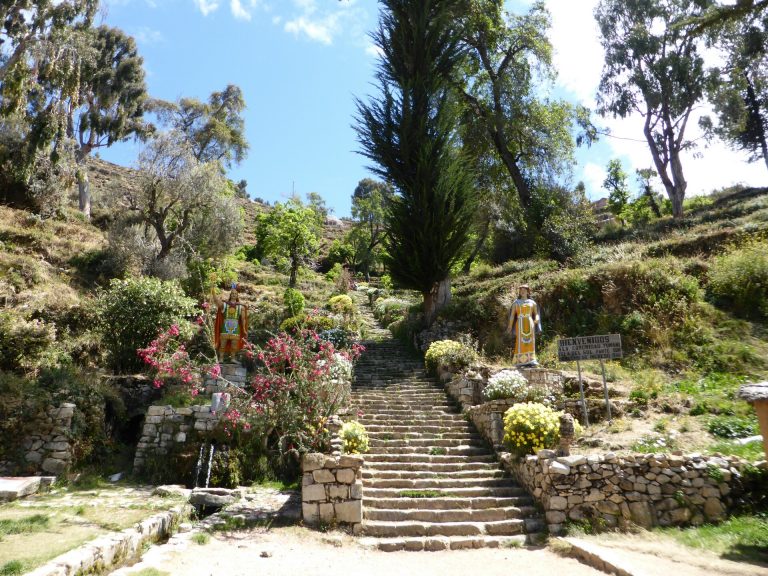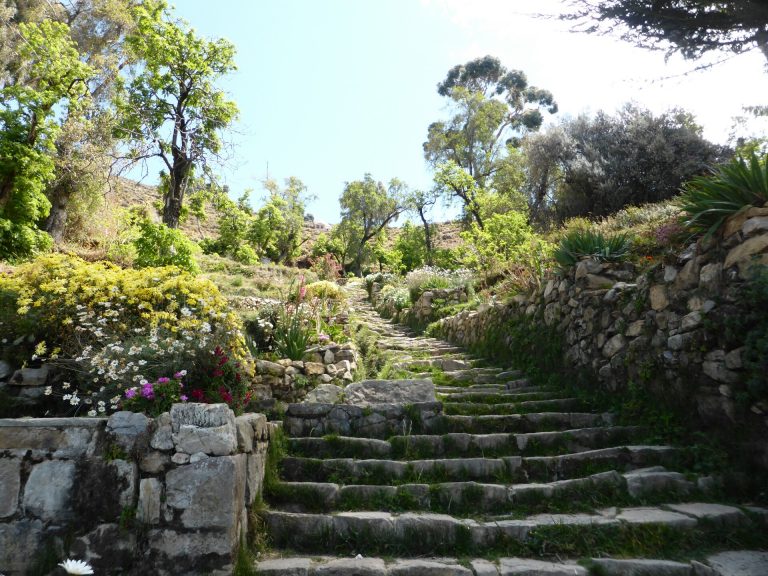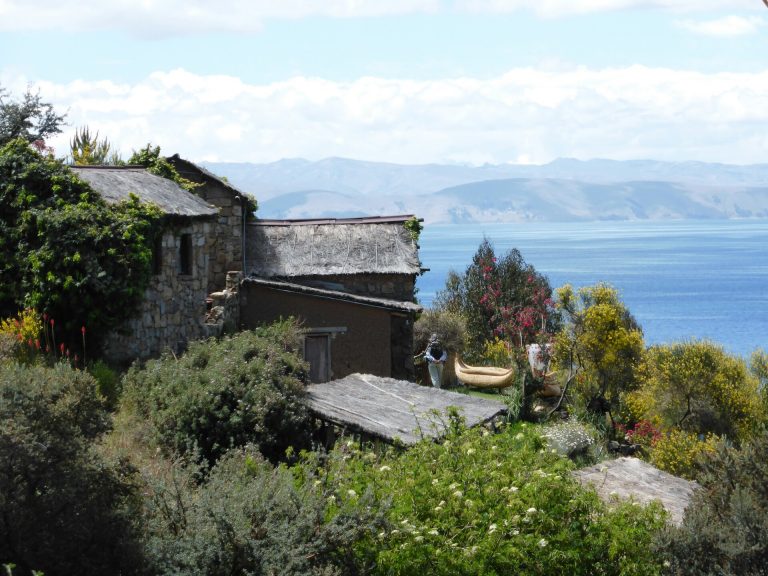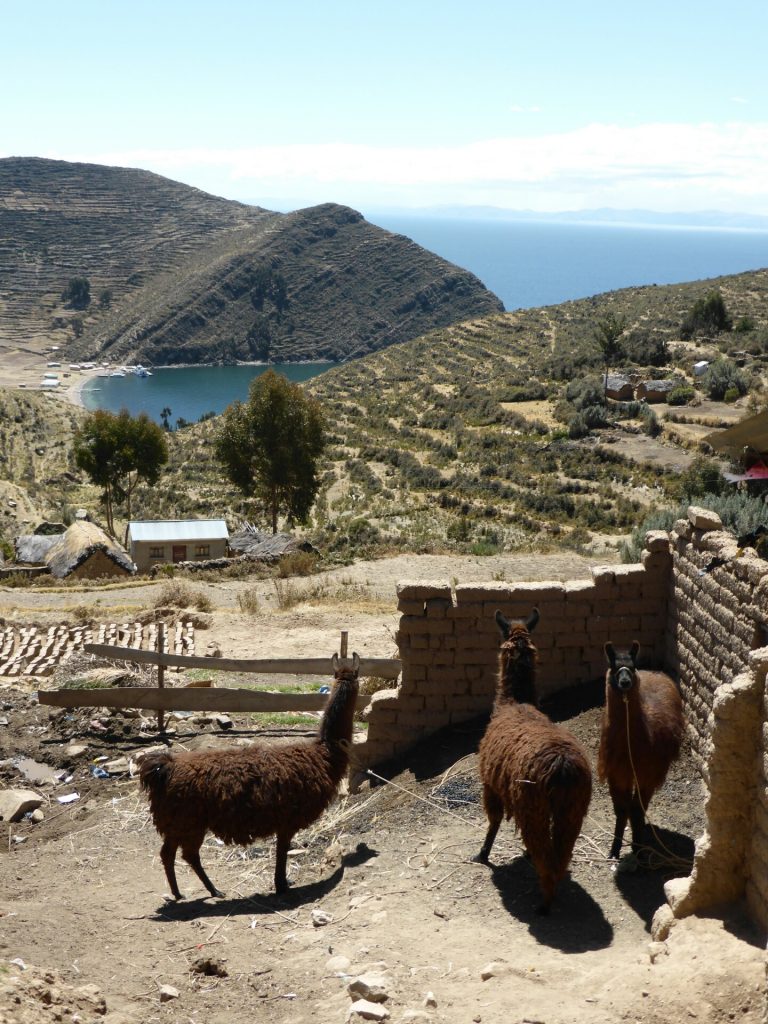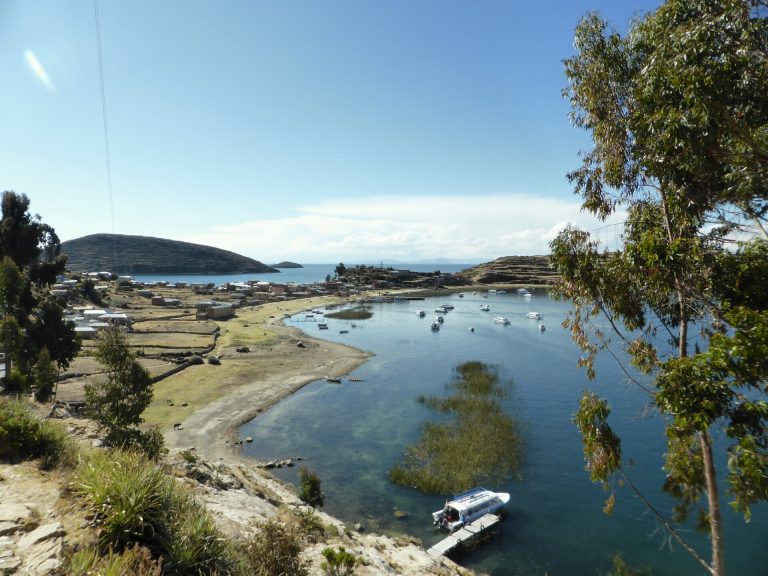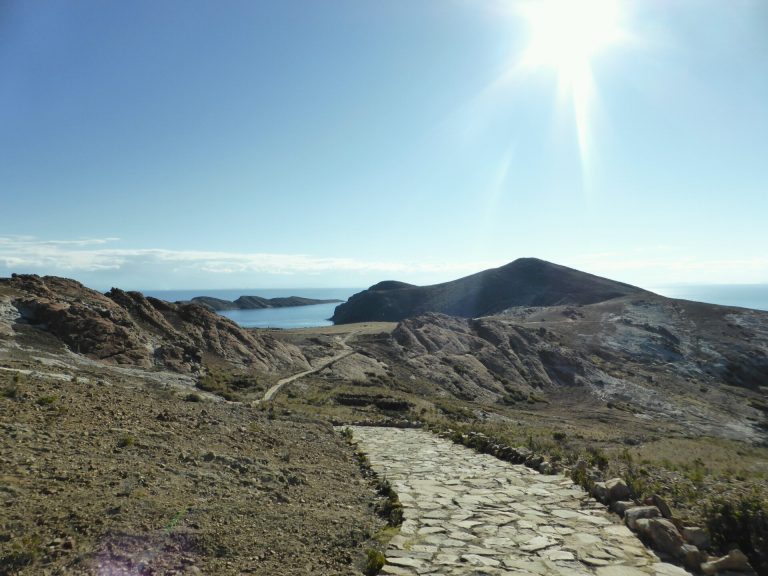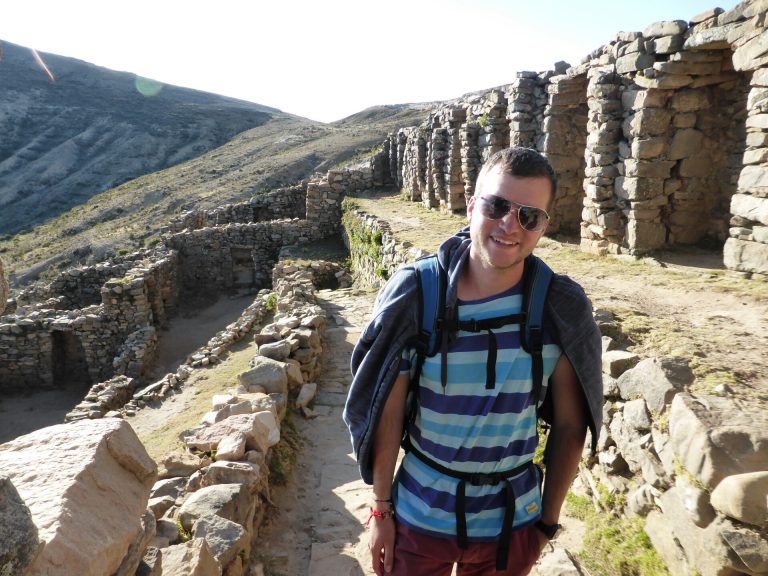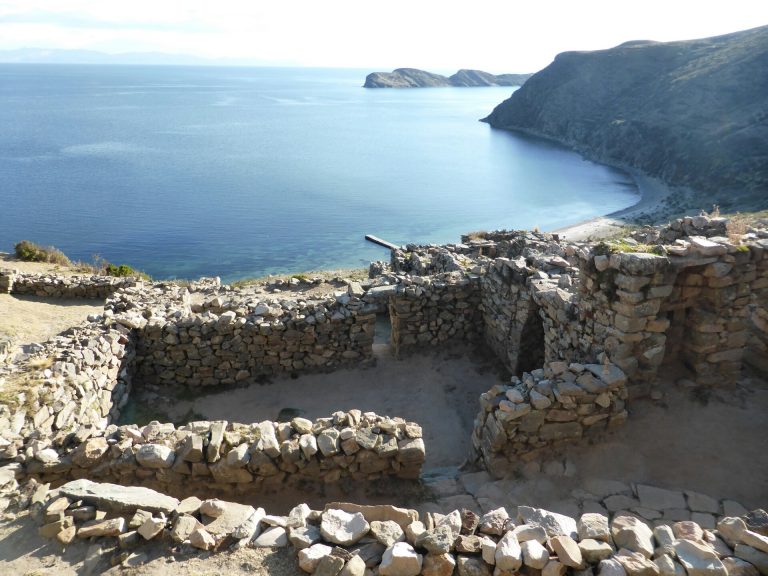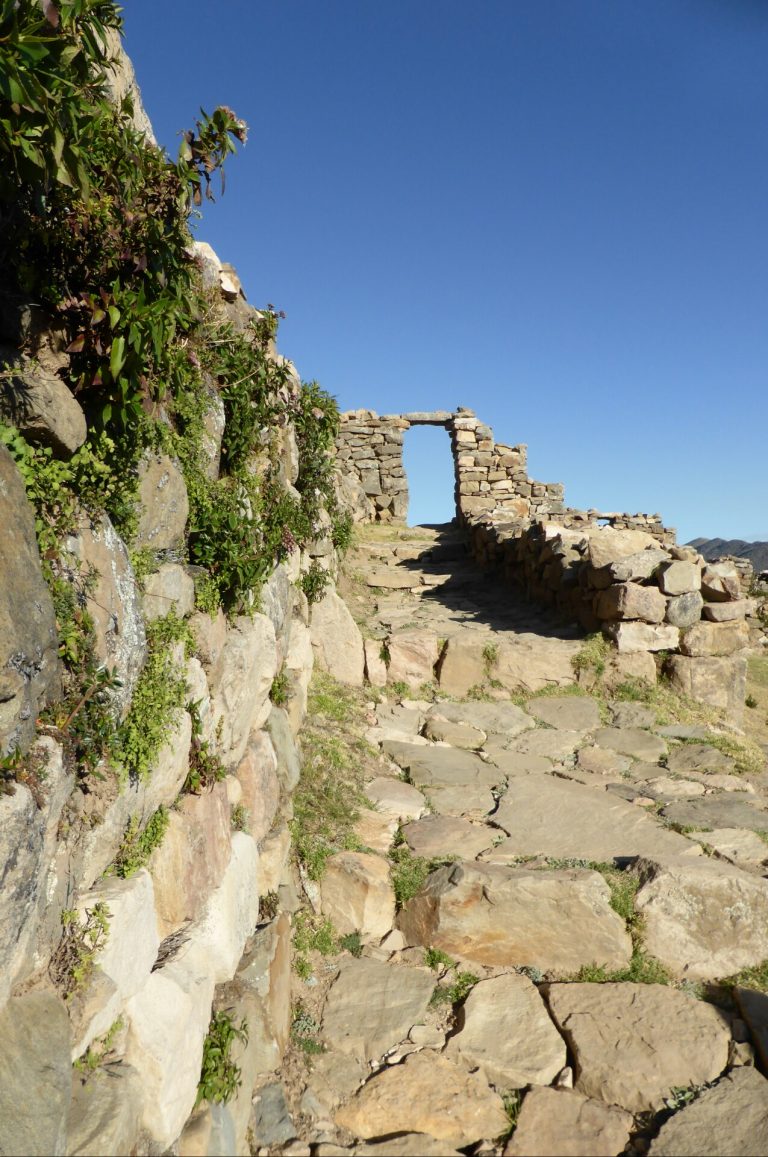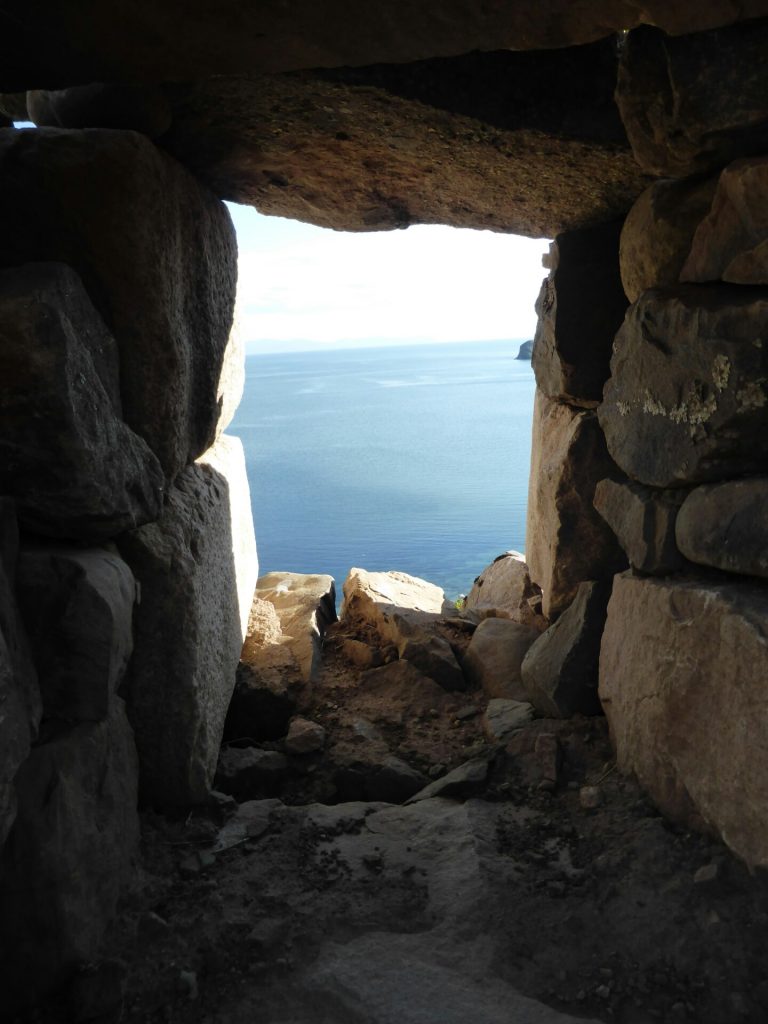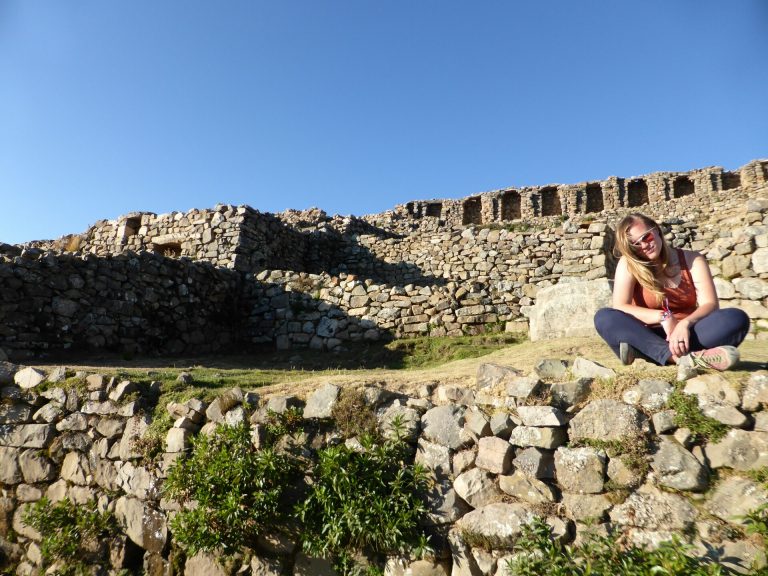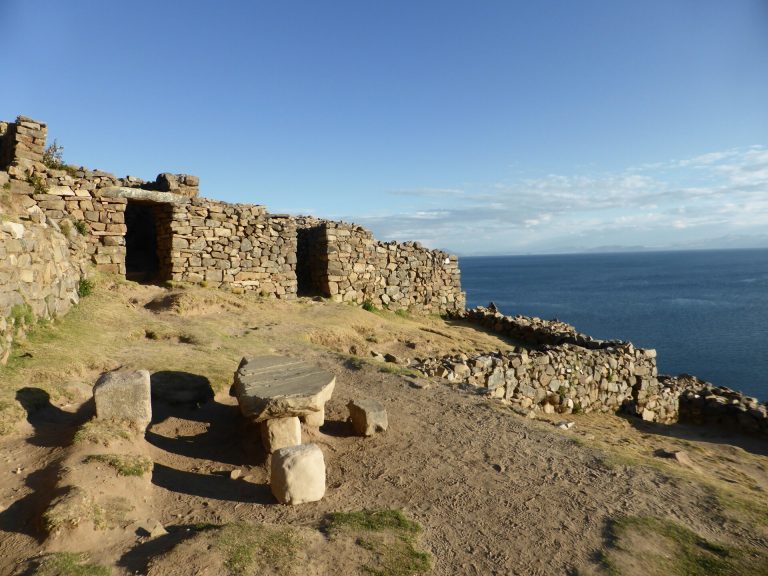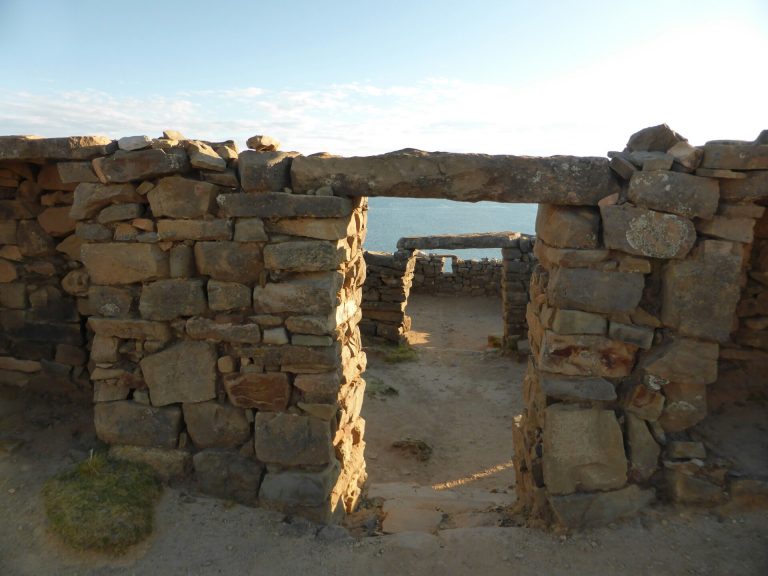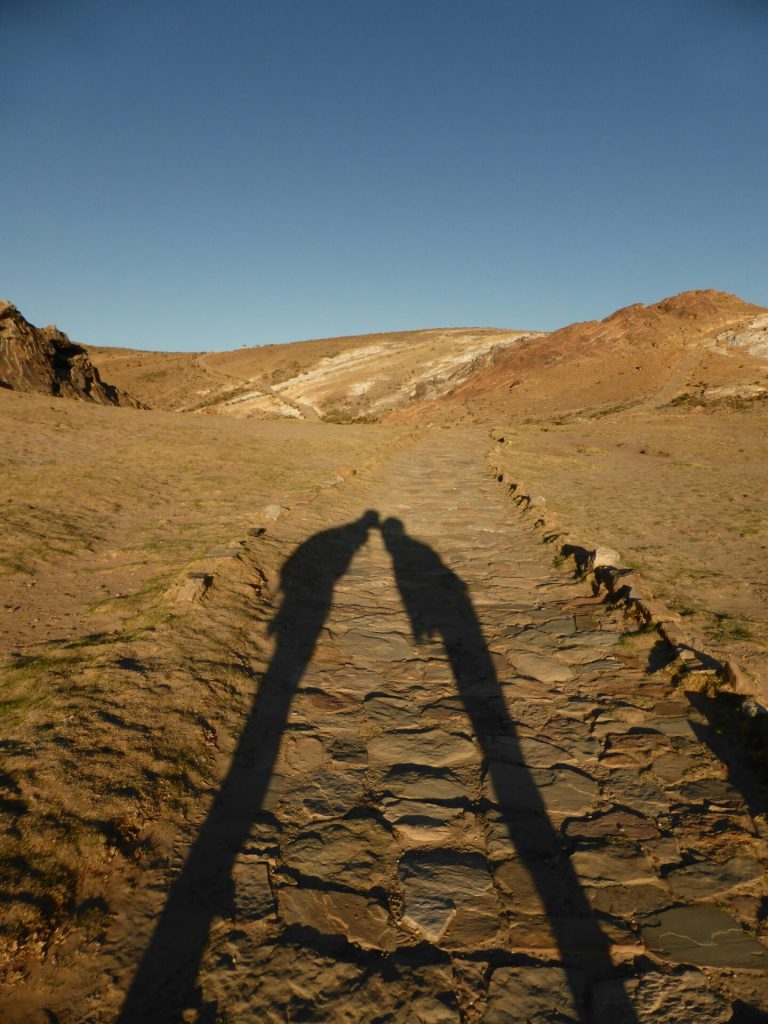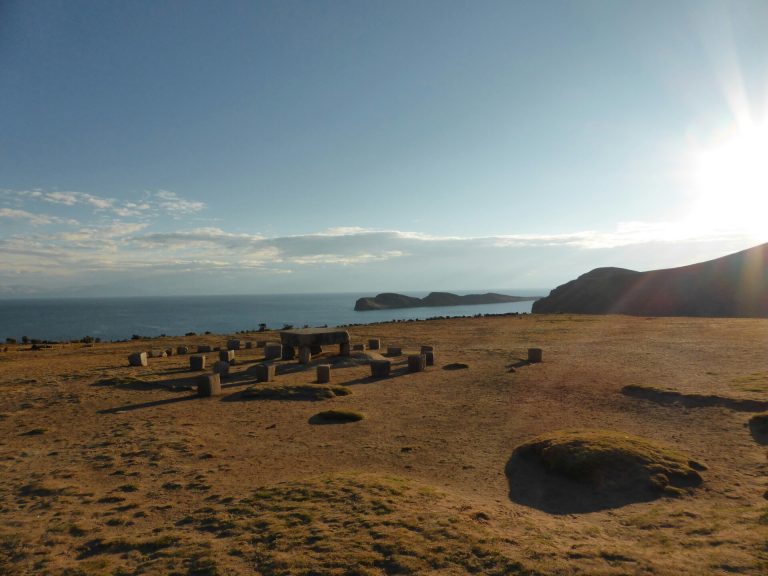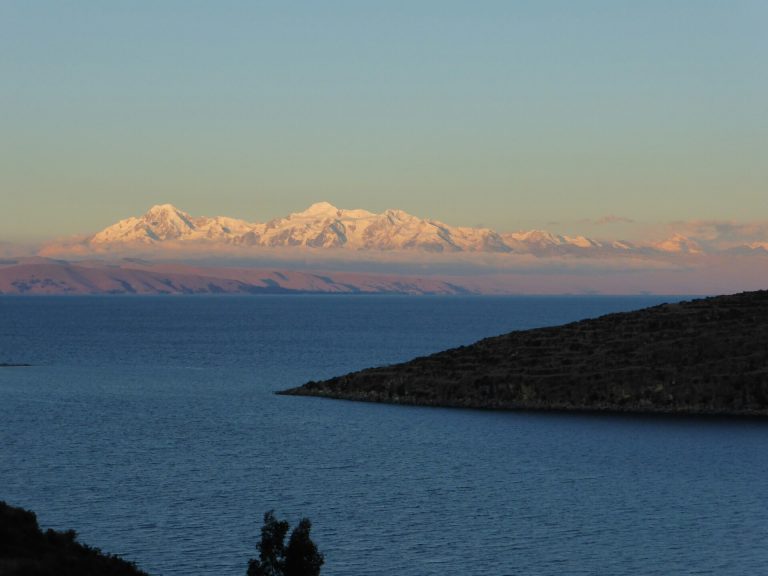We knew already before coming to Lima that for us it would be only a food destination. This was made clear again as soon as we came to Lima that it was not for us... Lacking the beautiful colonial architecture or character of Cusco unfortunately what it didn't lack is the performances of the national sport of Peru- honking... Everyone's driving so a ton of people honking for no reason at all. Music for your ears. That I'm not going to mention what a challenge it is to cross the street having the green light, all the cars were not even slowing down just letting you know by honking how determined they are to kill you if you don't run away. City jungle.
Coming to a new place we always want to taste the local cuisine and that one starts on the streets. And so we started by tasting causas (kind of potato mash normally stapled in two layers and chicken or fish or veg in between) and ceviche (fish in cubes "cooked" in lemon juice). It was not bad and it didn't end up in diarrhea but it didn't blow us away. Far more poisonous was "El Barrio Chino" which is famous in Lima for chifa style of cooking so a fusion of Cantonese and Peruvian. The food we tasted over there was just horrible... Soooo soaked in fat that even KFC would seem healthy next to it and it didn't have any spice in it. As usual almost no veg just because rice and potatoes are vegetables enough... At least we didn't pay much for this food mistake.
Our hopes built up with a visit to Larco cafeteria (yep cafeteria of a museum!!!) which actually sold nice sandwiches and causas (well except for soggy French fries but you can't have it all).
All of that was just a starter for what we were really looking forward to.... Best restaurants in the world:) 3 of the 50 are in Lima so we absolutely couldn't miss that chance. Number 4 was not available unless we made a reservation two months before which we didn't. But fortunately we could visit number 14, Astrid y Gastón. The restaurant is situated in a nice old hacienda and just like usually it's not really well marked so unless you know it's there, you won't find it. We were both blown away by the design, really modern but kind of cosy, home style (And thank God cuz we were both under dressed not to say a bit hobo).
Their service was also spectacular, separate guy from tea, separate guy from water and all of them nice and saying "thank you" and "you're welcome" which is a nice change in the country where those words seem to be out of use. Unfortunately we were not blown away by the starters and mains, not that we didn't like them but they were not as delicious and tasty as we expected from nr 14 in the world. But God the desserts were just smashingly good!!! Firstly I had a Lucuma dessert, a symphony based on a traditional Peruvian fruit of that name which was just spectacular with fresh raspberries and splashes of sauce made with purple corn.
Jandirk went for a white peach dessert which was outstanding as well. Tempted we both decided to try another dessert and so I took the strawberry dessert with vanilla, yogurt and an absolutely yummy wine sauce:) Jandirk took a rich chocolate one with banana and caramel....-) still now thinking about these desserts makes us smile :))))
As Jandirk was not satisfied with only one fine dinning experience we decided to visit restaurant "IK" which was the most spectacular dining experience in our lives and by far. The restaurant looked spectacular, all green and full of plants with windows on the kitchen through which we saw a well oiled machine of working people and a beautiful, traditional mud oven. Even the tables were original with their projections of native ingredients of Peru like coffee, lucuma and Inca berry.
We went crazy with the 12 course tasting menu and o my God it was worth it!!! Everything starting from the service which was really good and fun... For example when I was going to the toilet they would take my napkin to bring a new one with tweezers (never too sterile). But the food, the art, the theater.... Unbelievable and worth every dollar that we spent on it. Every dish had a story, presented native Peruvian ingredient from a different zone either from the Amazon, coast or deep Andes and all of them had a story and taste... They were all one of a kind and absolutely delicious. And so we ate eatable leaves from a branch, spicy (finally!!) Amazonian ceviche, roasted Andean potatoes, Amazonian fish, Amazonian tomato salad, pork belly, corn and we even normally don't like corn, all of the ones we tried at "IK" were unbelievable. In the end we tasted a dessert made entirely from a cocao bean, all if its parts which you normally throw away. And it was an unforgettable, symphony and what food is all about, bitter, sweet, refreshing and simply presented in the bean shell itself.
Afterwards we still got a tree which represented a traditional Peruvian celebration called Yunza. Obviously it had something tiny and delicious like chocolates to eat:) after 4 h of the experience of our lifetime we went to our 6 dollars per bed 14 bed dorm :)) money somewhere saved, elsewhere spent.
How much does it cost to dine in Lima?
The restaurants we have visited and how much they cost
- IK restaurant- unbelievable, decadent, truly delicious 12 course menu is 300 soles (83 euro) per person so in total we paid 730 soles (203 euro) for their tasting menu, two drinks, water and a little, delicious bread at the start
- Astrid y Gastón- for their not so mind blowing starters and mains and absolutely outstanding 4 desserts we paid 600 soles (166 euro), starters between 48- 79 soles (around 13-22 euro), mains 48- 109 soles (around 22-30 euros), desserts 36-42 soles (around 10- 12 euros), they also have a tasting menu which costs around 110 euro per person
- Larco cafeteria- good food in a nice, garden surrounding after a visit to the museum cost us 90 soles (25 euro)
- El Barrio Chino- tasteless and almost poisonous meal in the Chinese district cost us 23 soles (6 euro)
- Chifa Titi- less poisonous but still pretty tasteless dinner cost us 245 soles (68 euro)
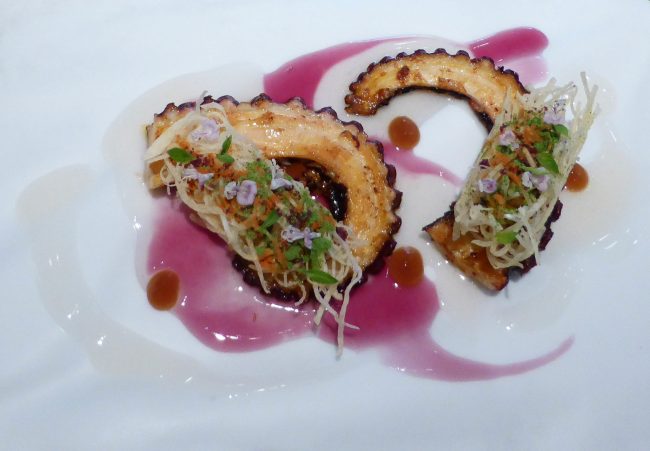
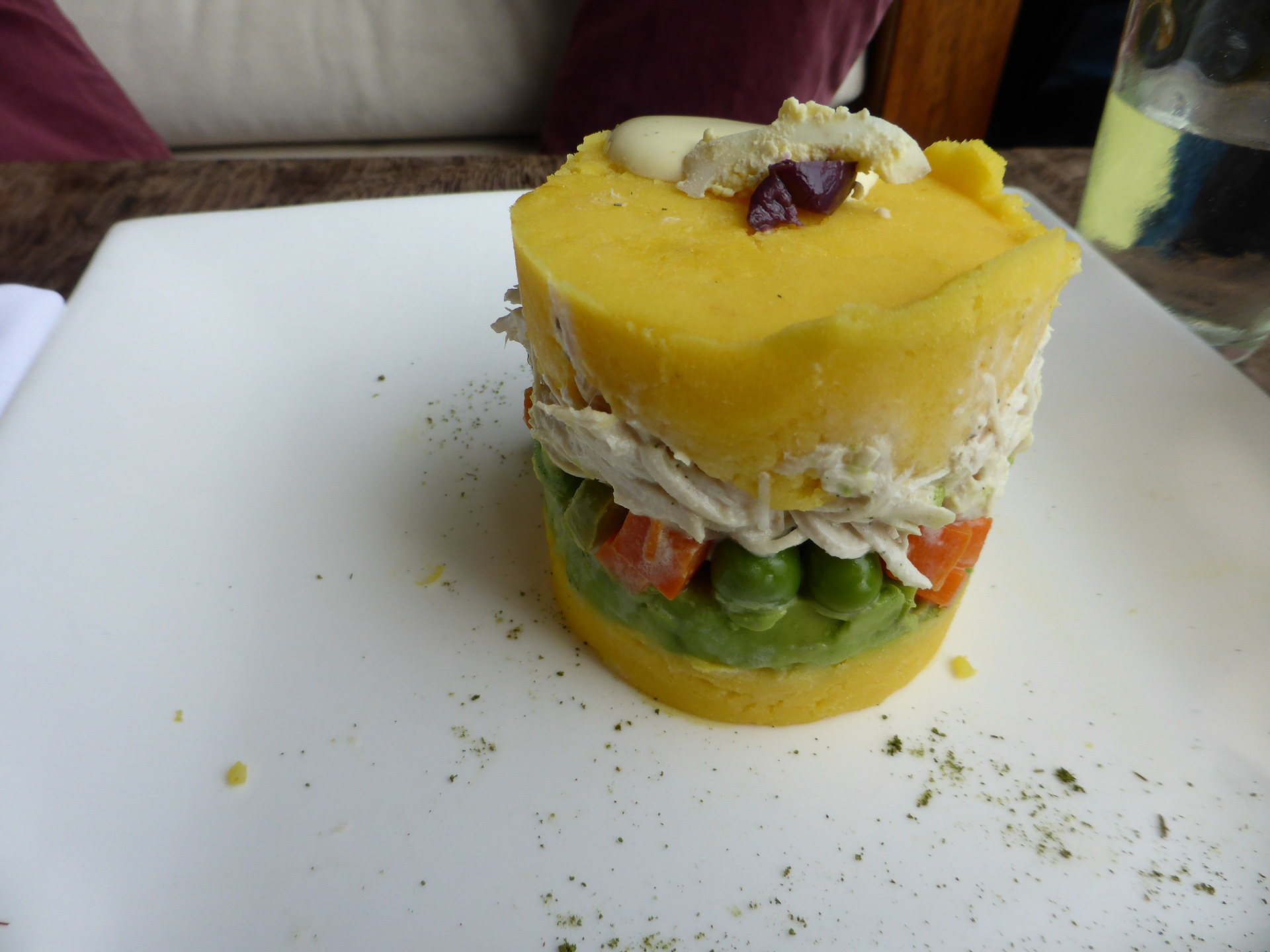
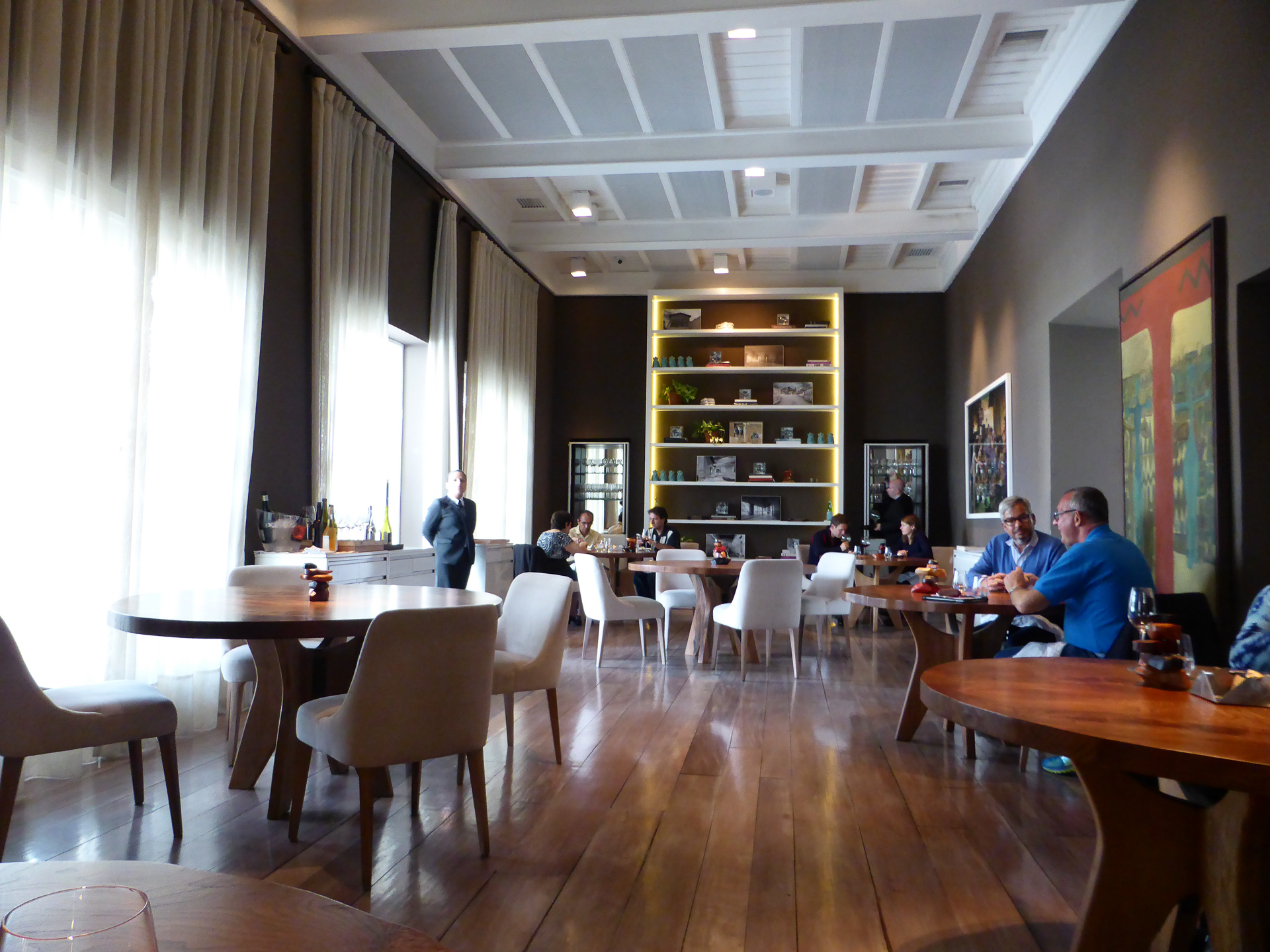
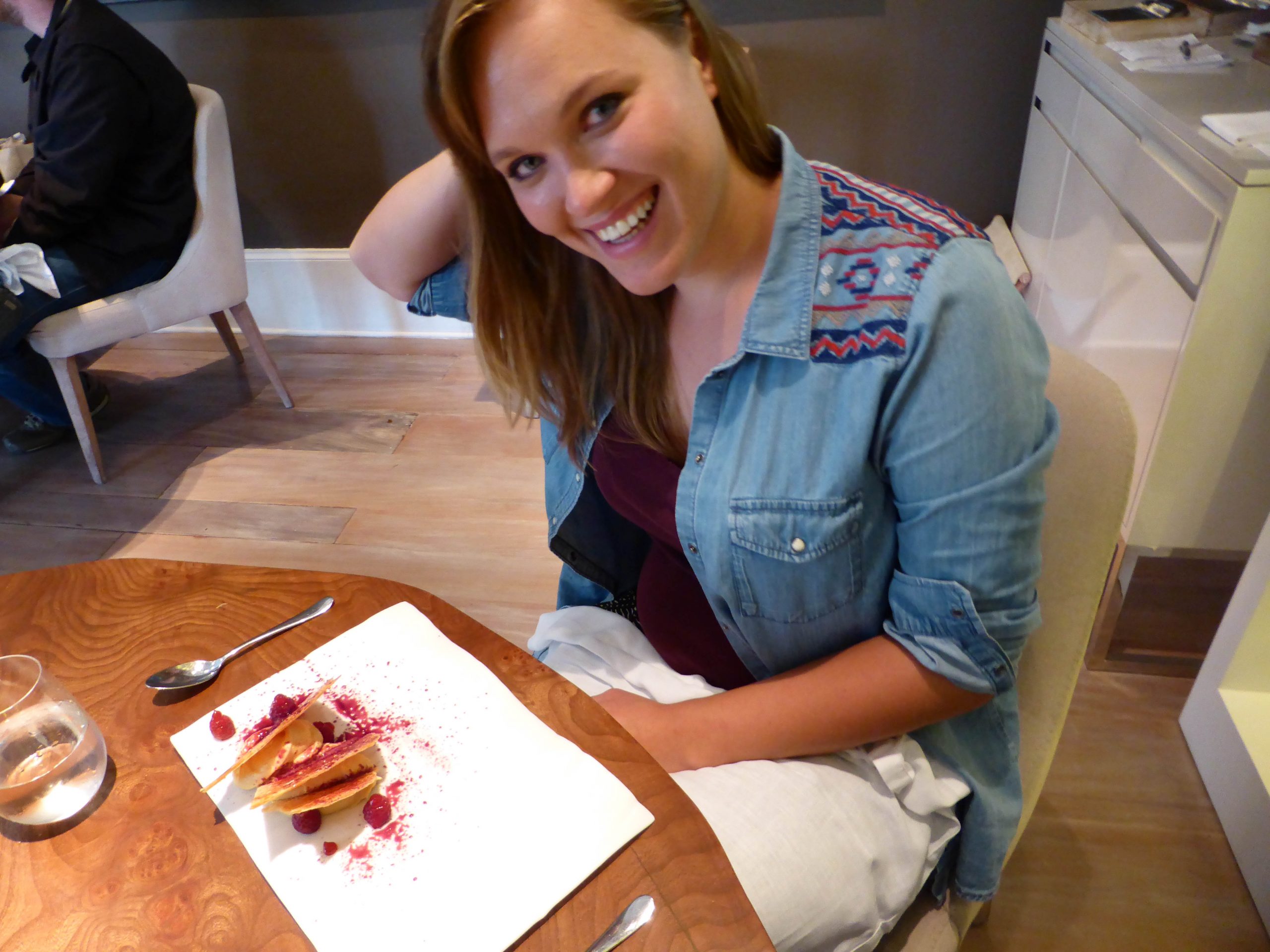
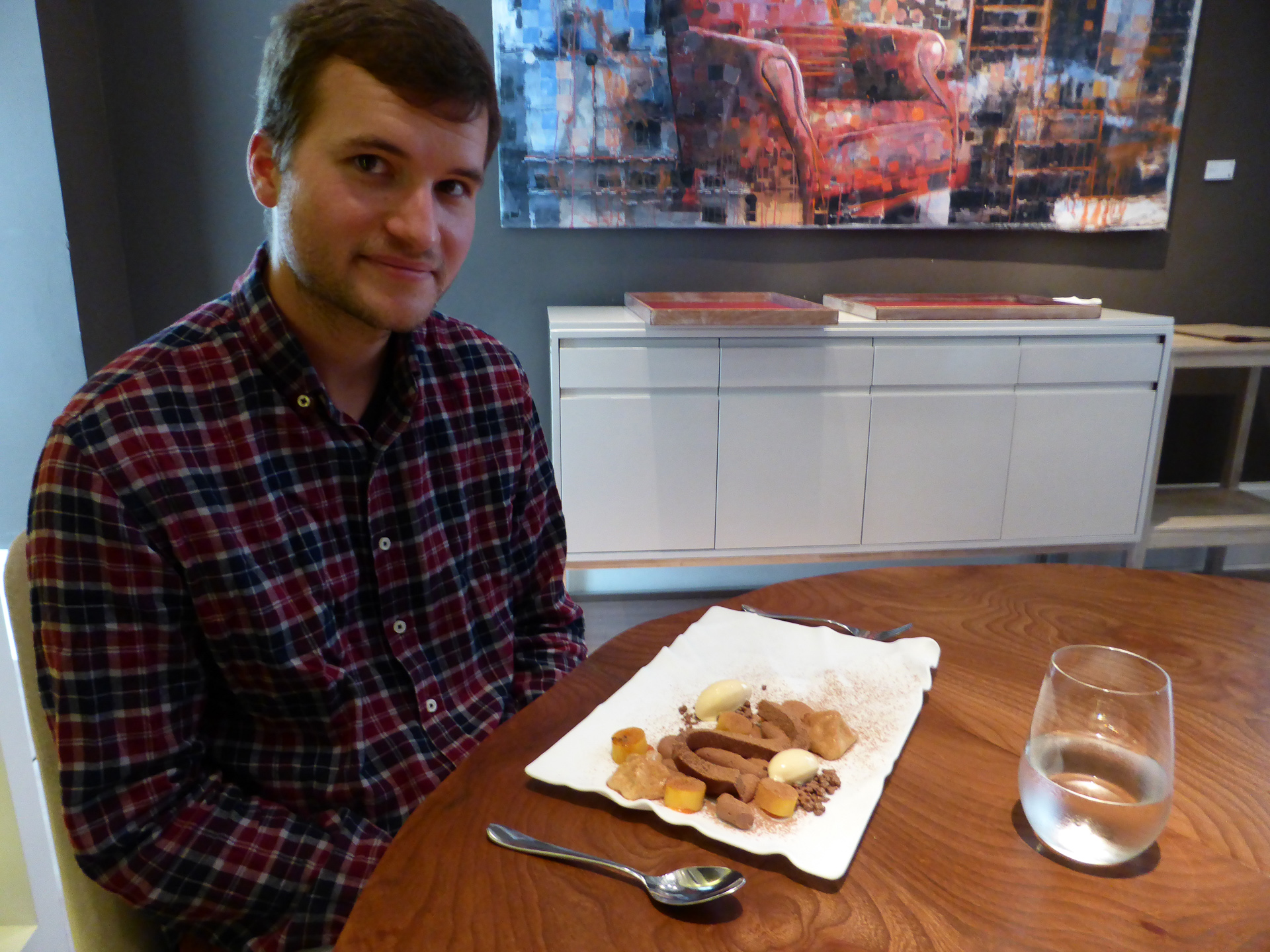
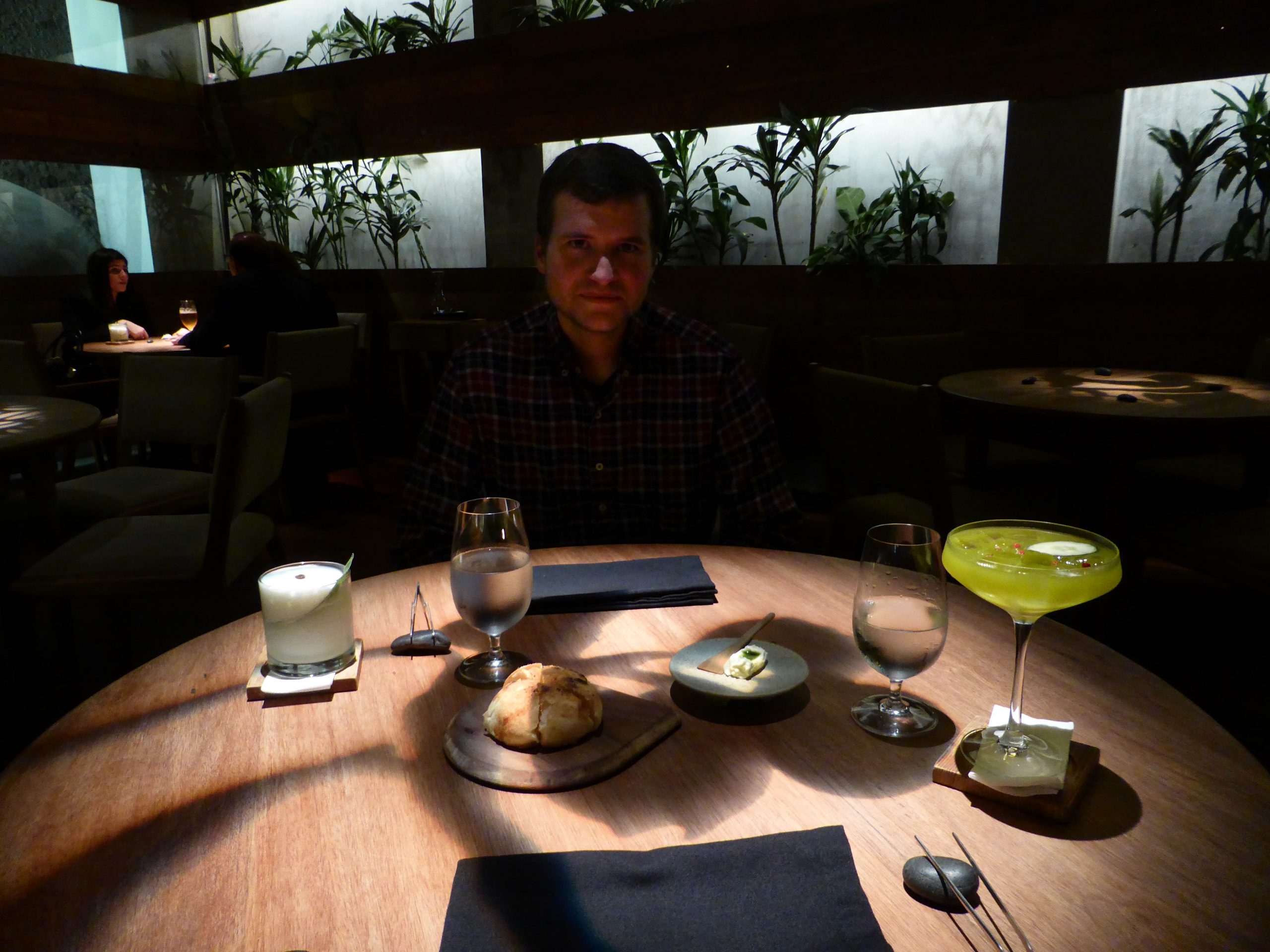
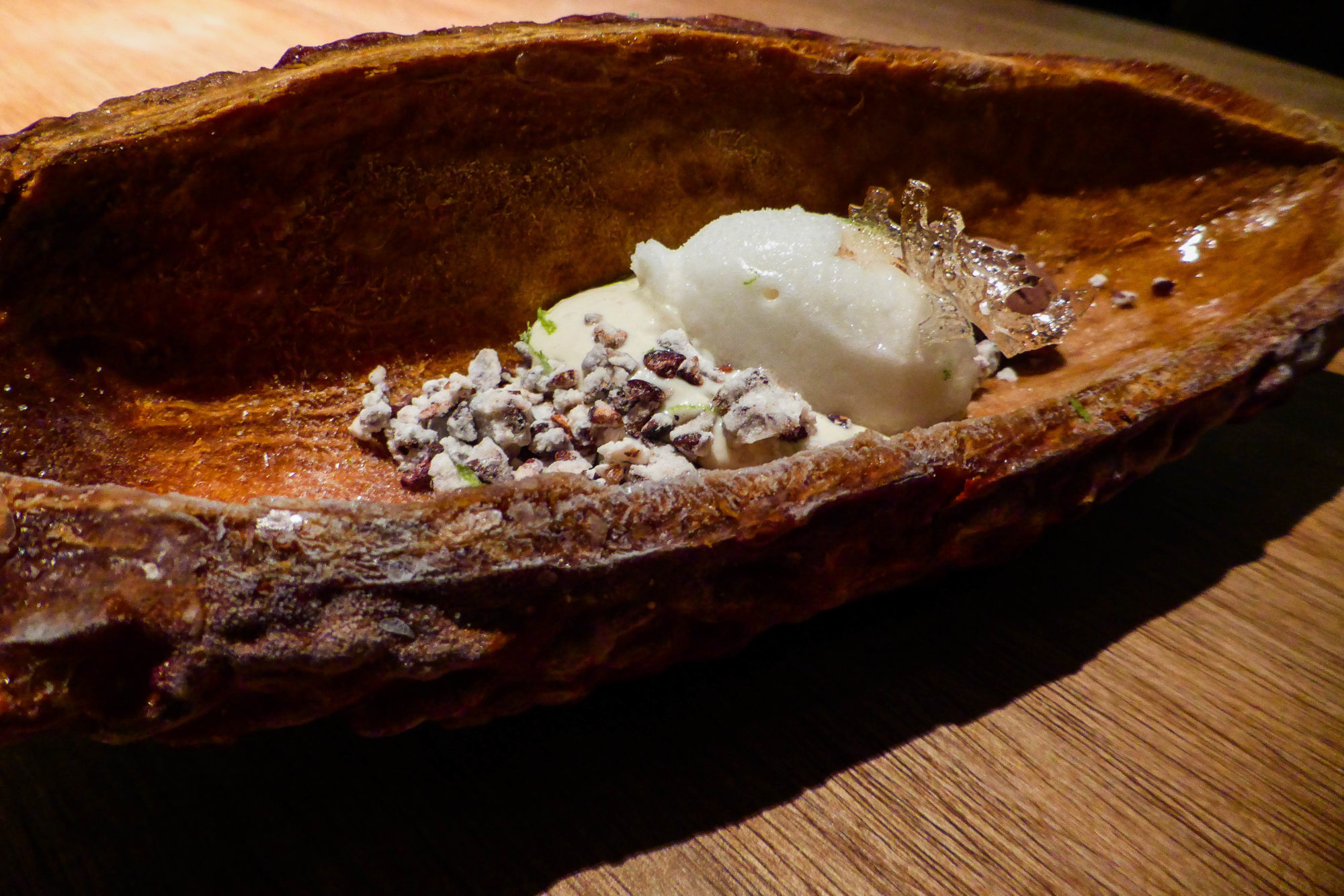
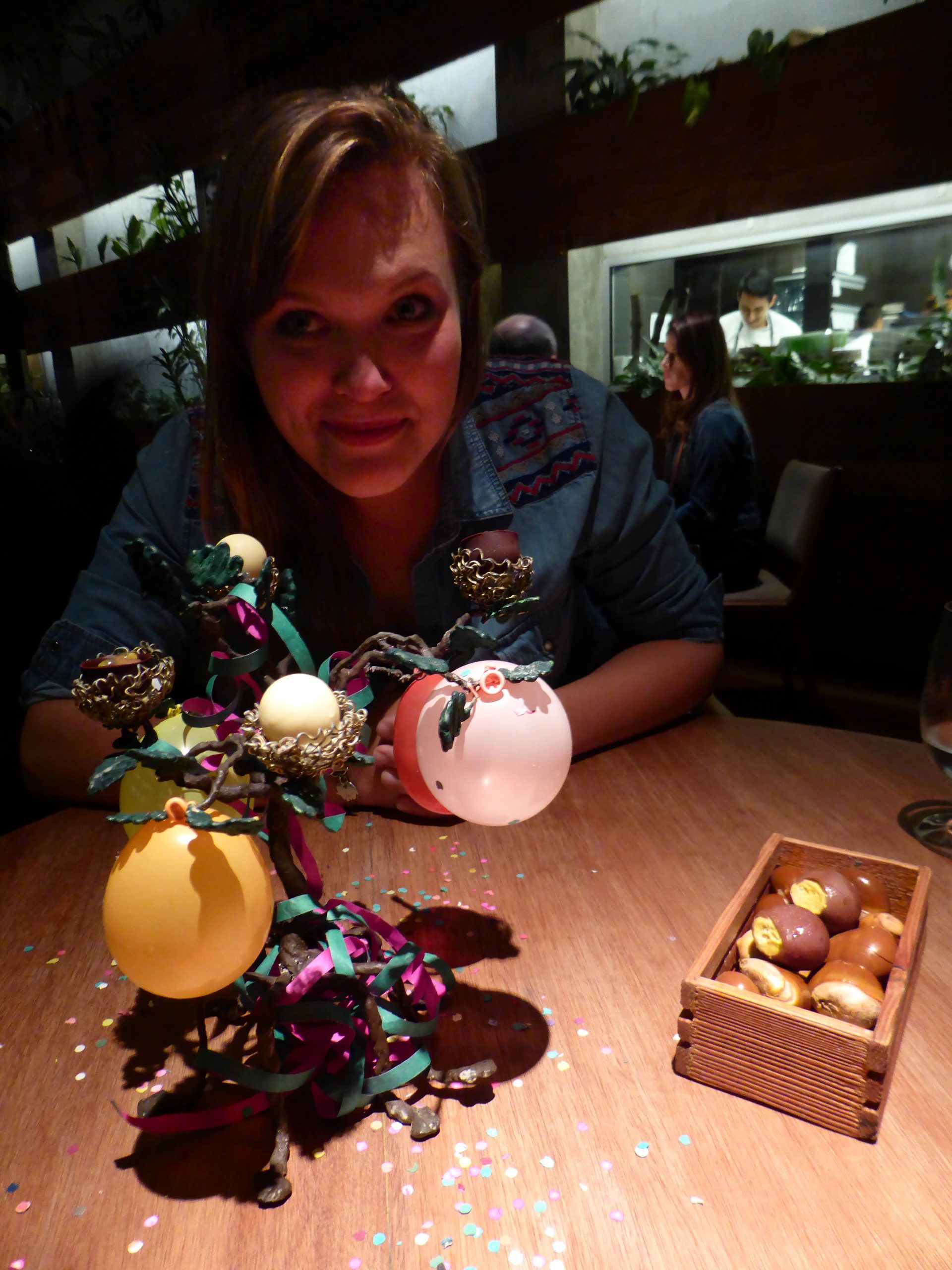
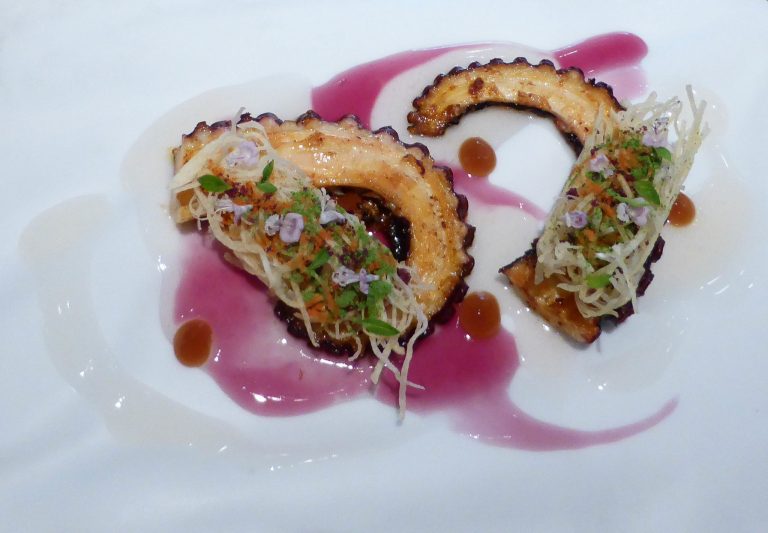
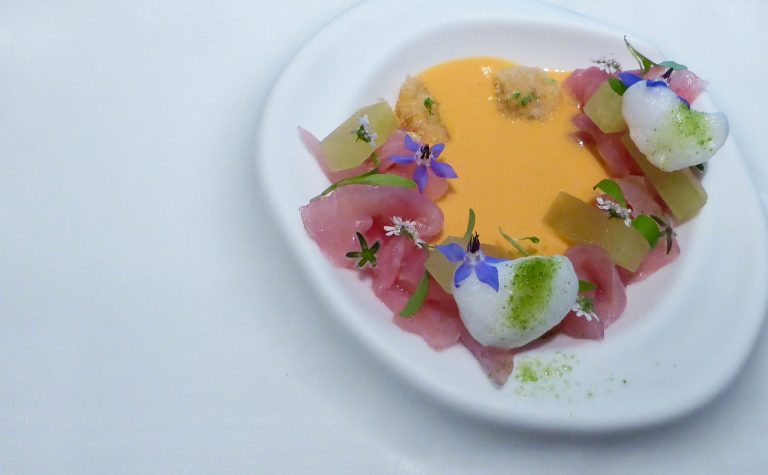
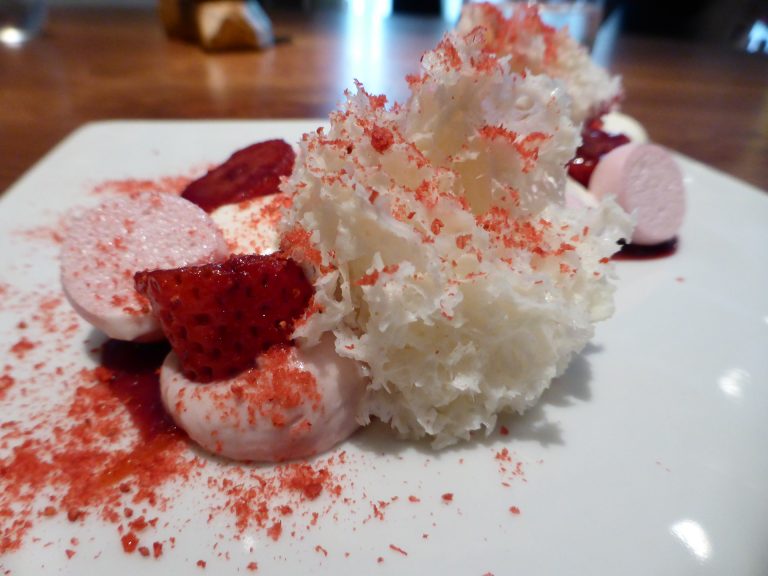
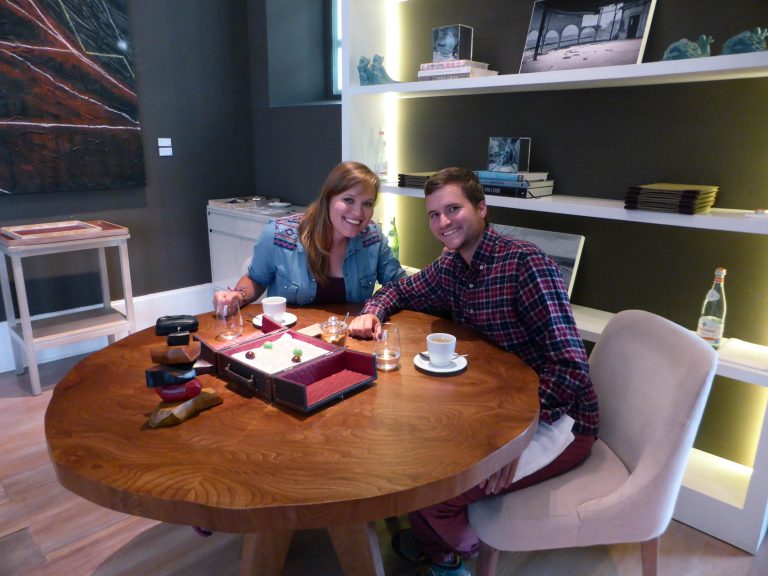
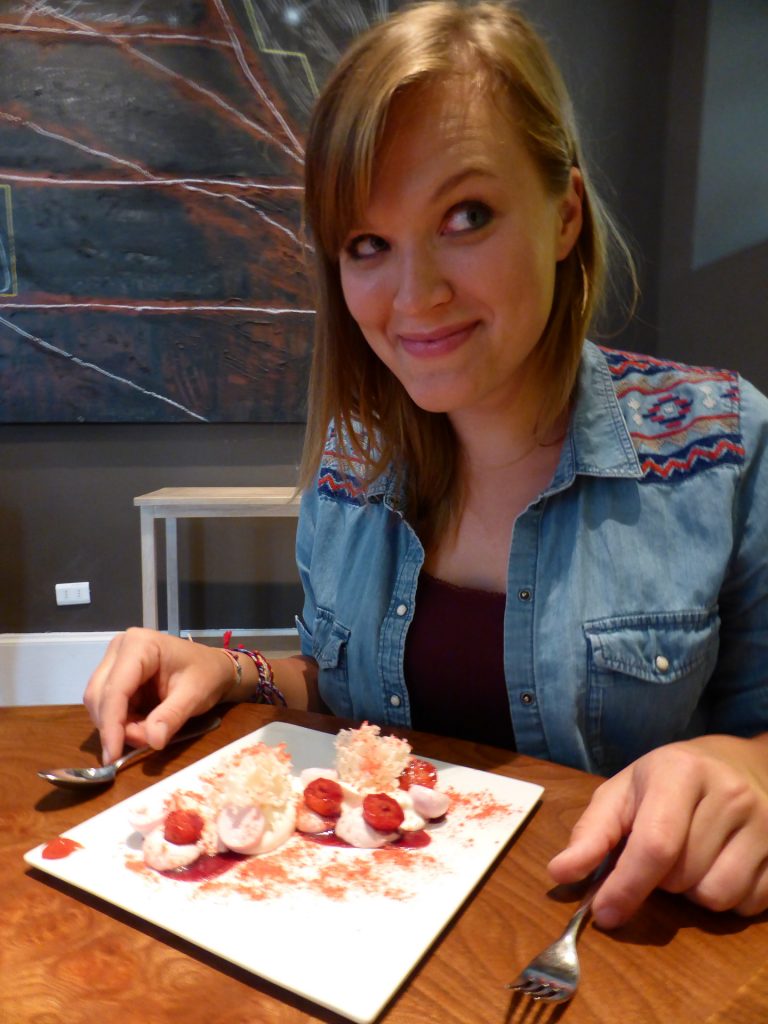
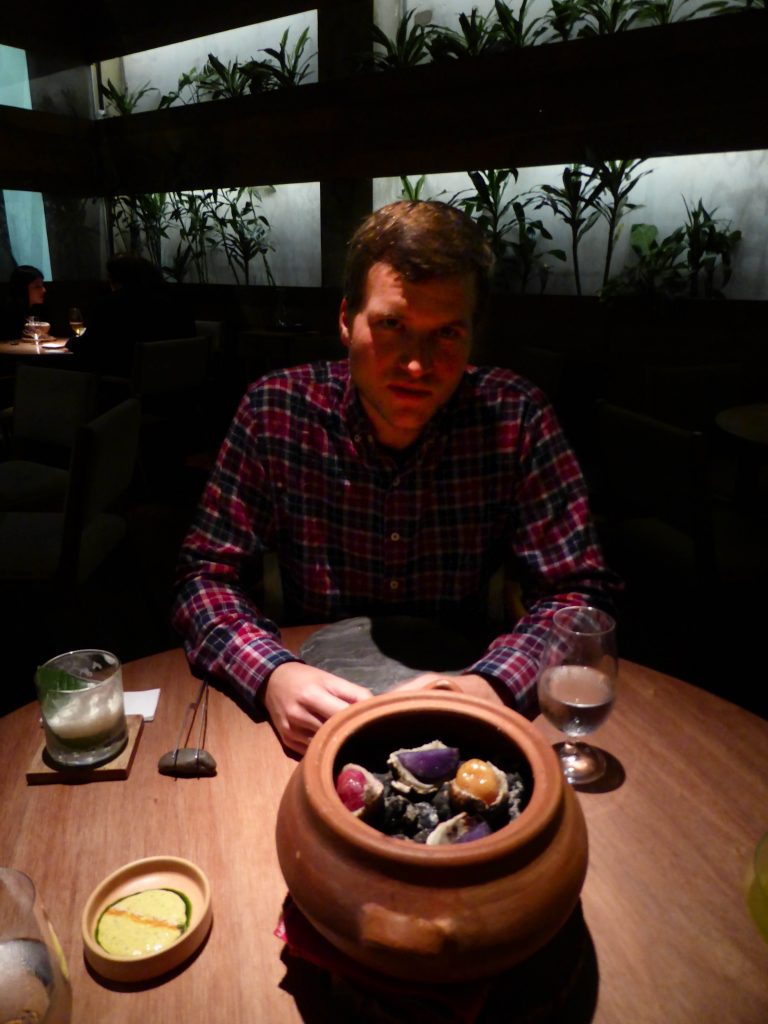
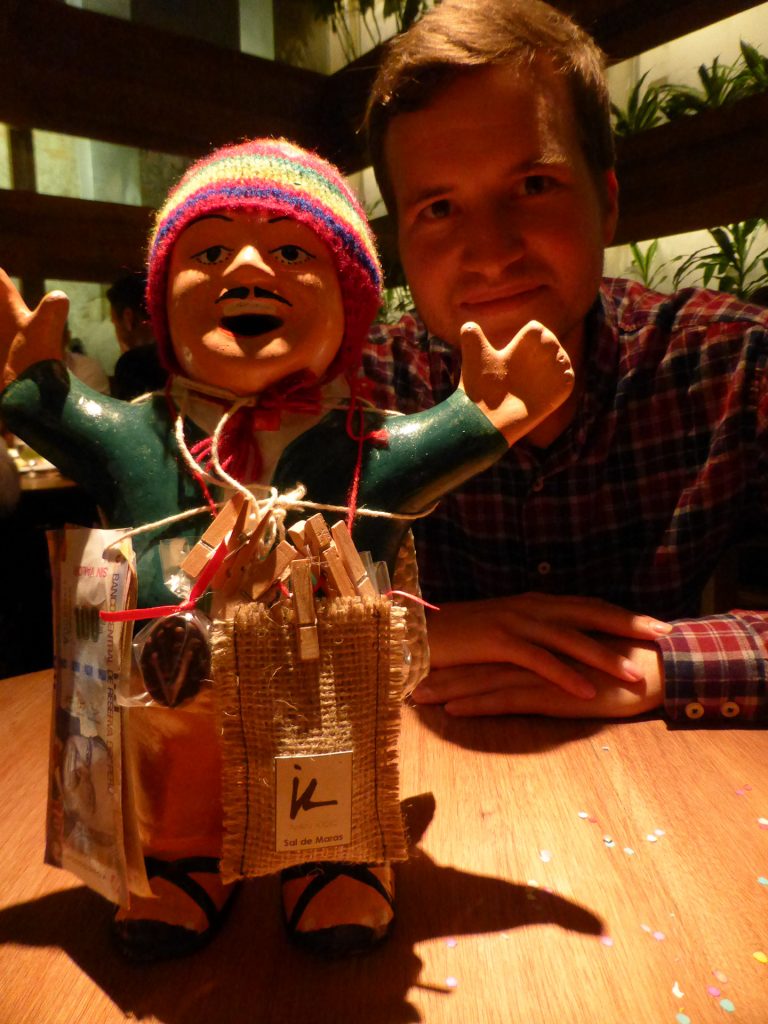
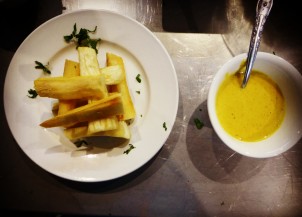

 There are many theories of what it was, maybe an astronomical observatory or ceremonial spot. But what we know for sure now is that it has an amazing view on Machu Picchu! Absolutely surreal!!! From there we convinced David and Janelle (our fellow couple) to walk with us to Aguas Calientes, the village just next to Machu Picchu. It seemed more of a fair way to get there walking then by train, and way cheaper too. Since walking is (still) for free (rumors say it won't next year) the road is not really a road just stones next to the railroad. But it was still a really nice hike with amazing companions. We reached the village sweaty, dirty but excited. After a cold shower in Aguas Calientes (the irony of the name "Hot waters") we passed out to wake up at 3.50 a.m. to start lining up for the first bus (after a 5 day walk around 2000 steps in an hour didn't sound like an appealing way to get to Machu Picchu). At 5.30 the first bus took off with us on board. It was a free roller coaster ride that made us all wide awake. Up and down, through a rocky, bumpy road and with the speed of light we got there within 20 min. And we lined again this time in front of the entrance.
There are many theories of what it was, maybe an astronomical observatory or ceremonial spot. But what we know for sure now is that it has an amazing view on Machu Picchu! Absolutely surreal!!! From there we convinced David and Janelle (our fellow couple) to walk with us to Aguas Calientes, the village just next to Machu Picchu. It seemed more of a fair way to get there walking then by train, and way cheaper too. Since walking is (still) for free (rumors say it won't next year) the road is not really a road just stones next to the railroad. But it was still a really nice hike with amazing companions. We reached the village sweaty, dirty but excited. After a cold shower in Aguas Calientes (the irony of the name "Hot waters") we passed out to wake up at 3.50 a.m. to start lining up for the first bus (after a 5 day walk around 2000 steps in an hour didn't sound like an appealing way to get to Machu Picchu). At 5.30 the first bus took off with us on board. It was a free roller coaster ride that made us all wide awake. Up and down, through a rocky, bumpy road and with the speed of light we got there within 20 min. And we lined again this time in front of the entrance.
